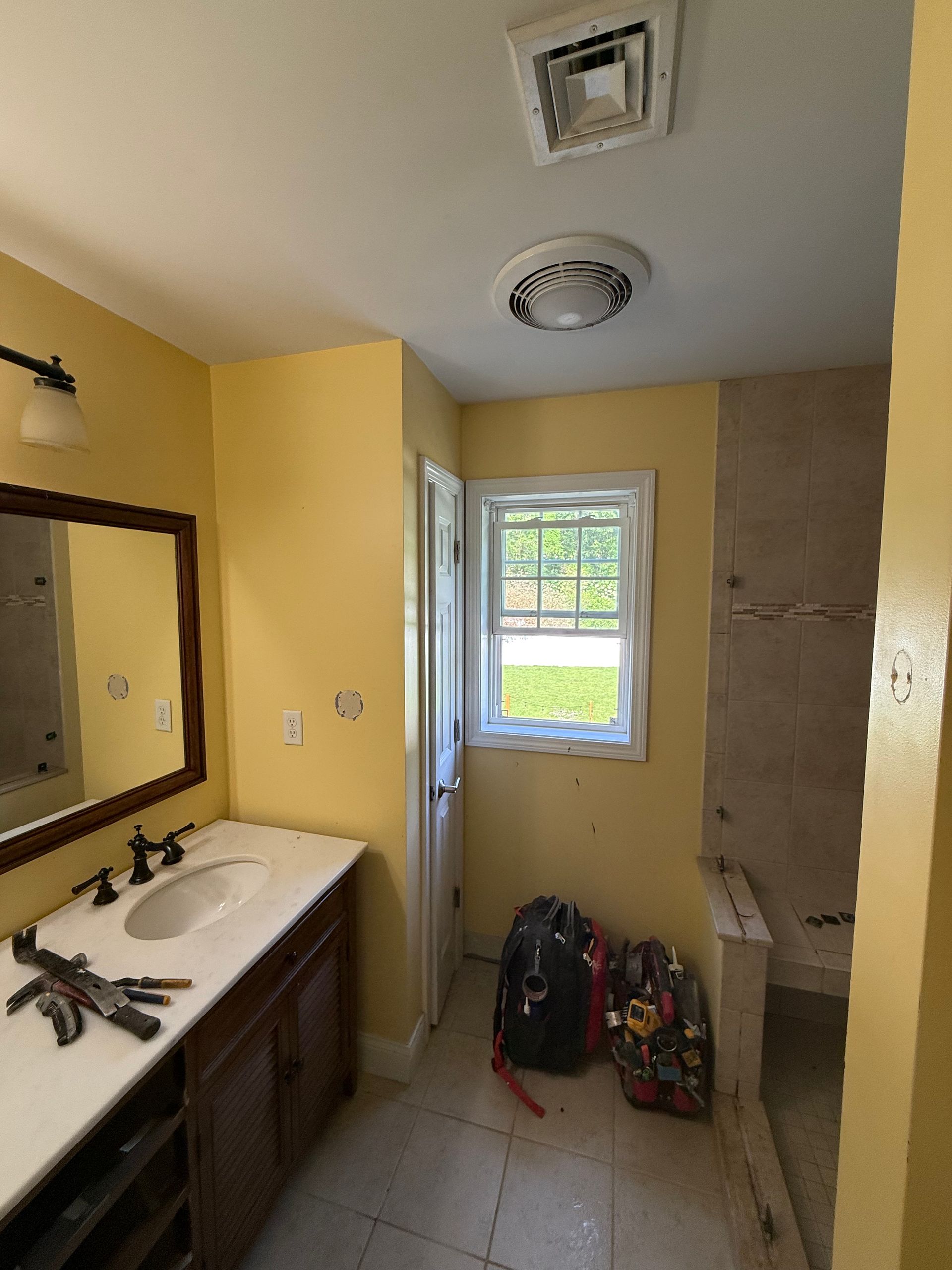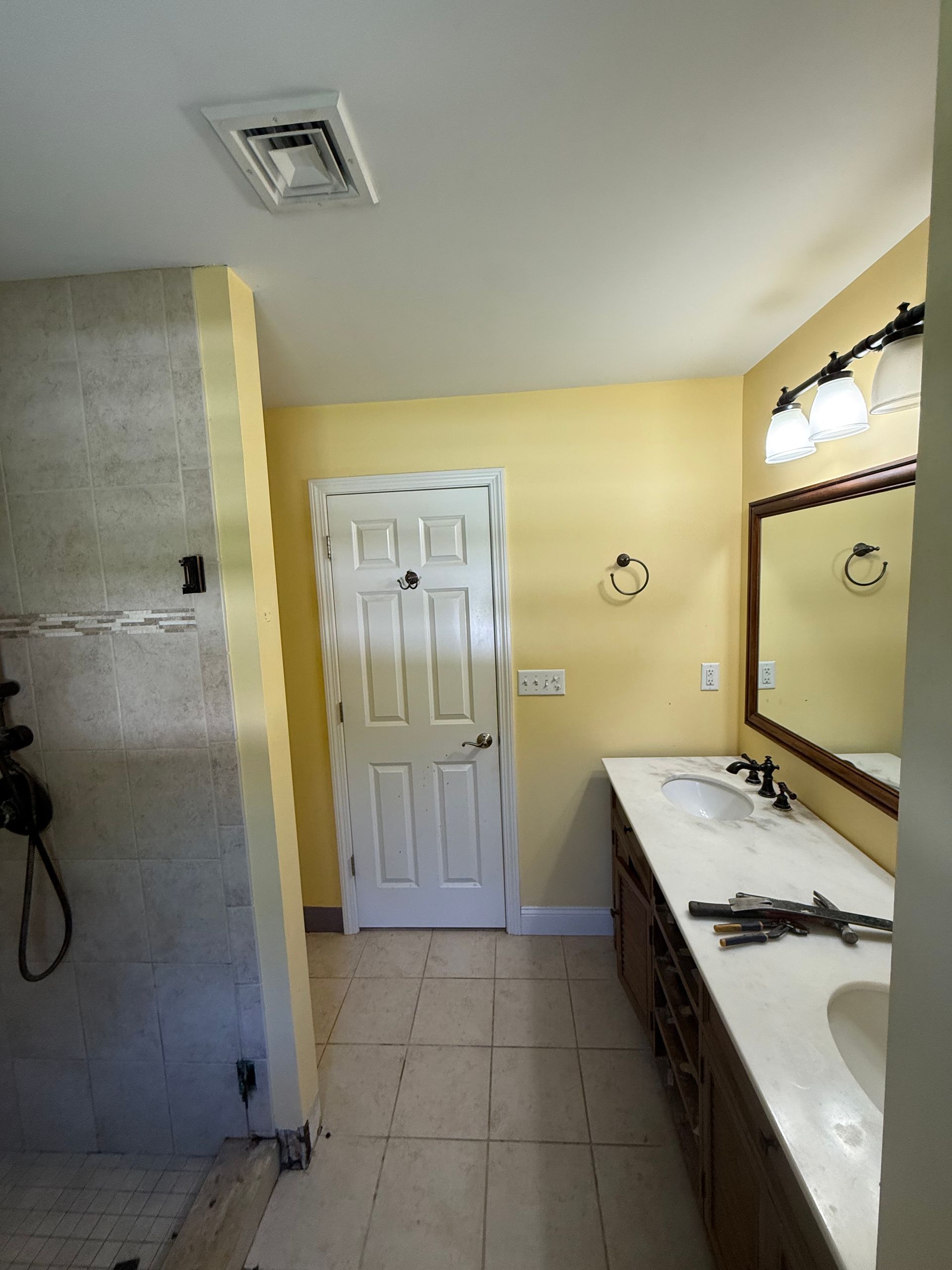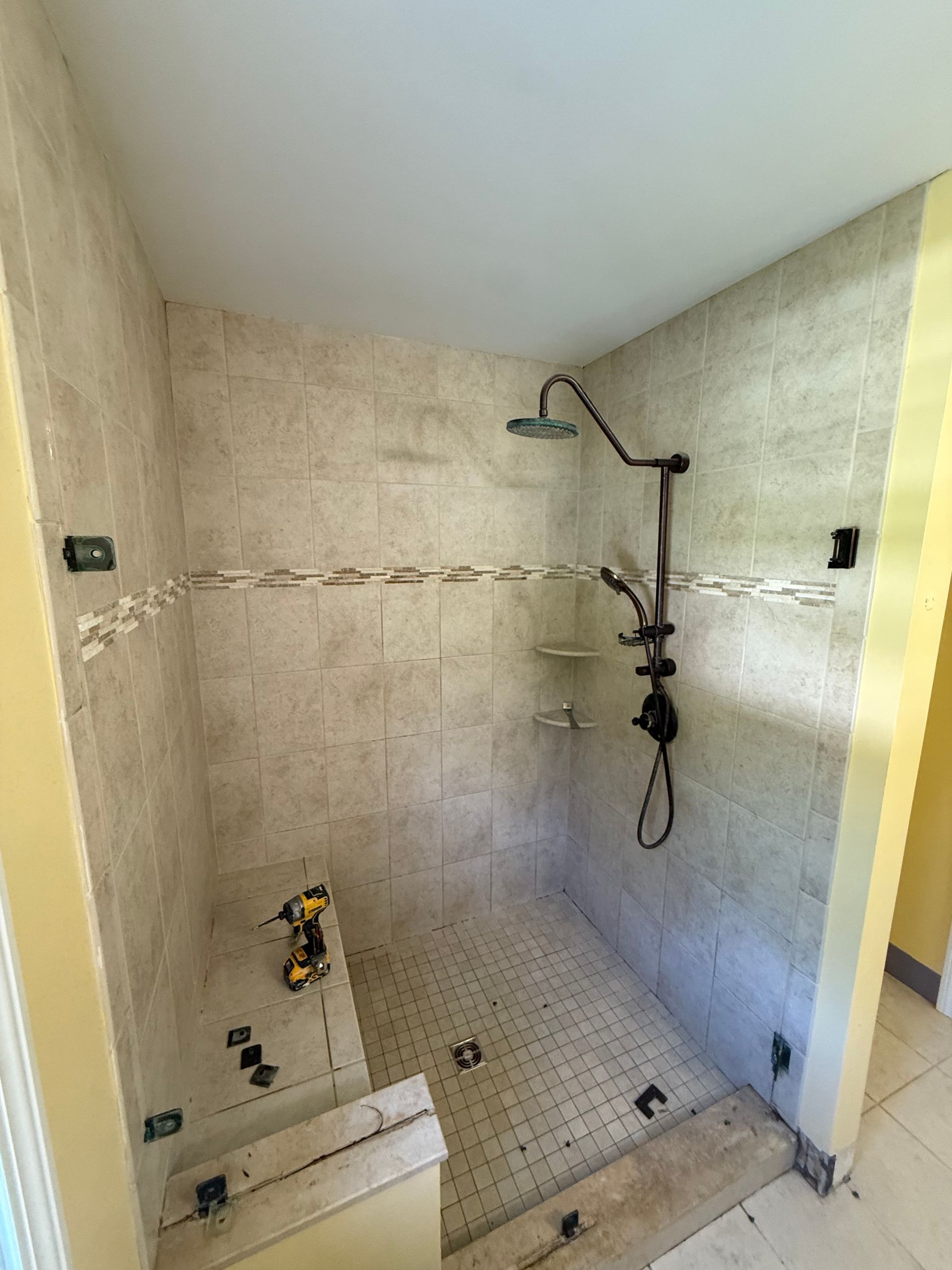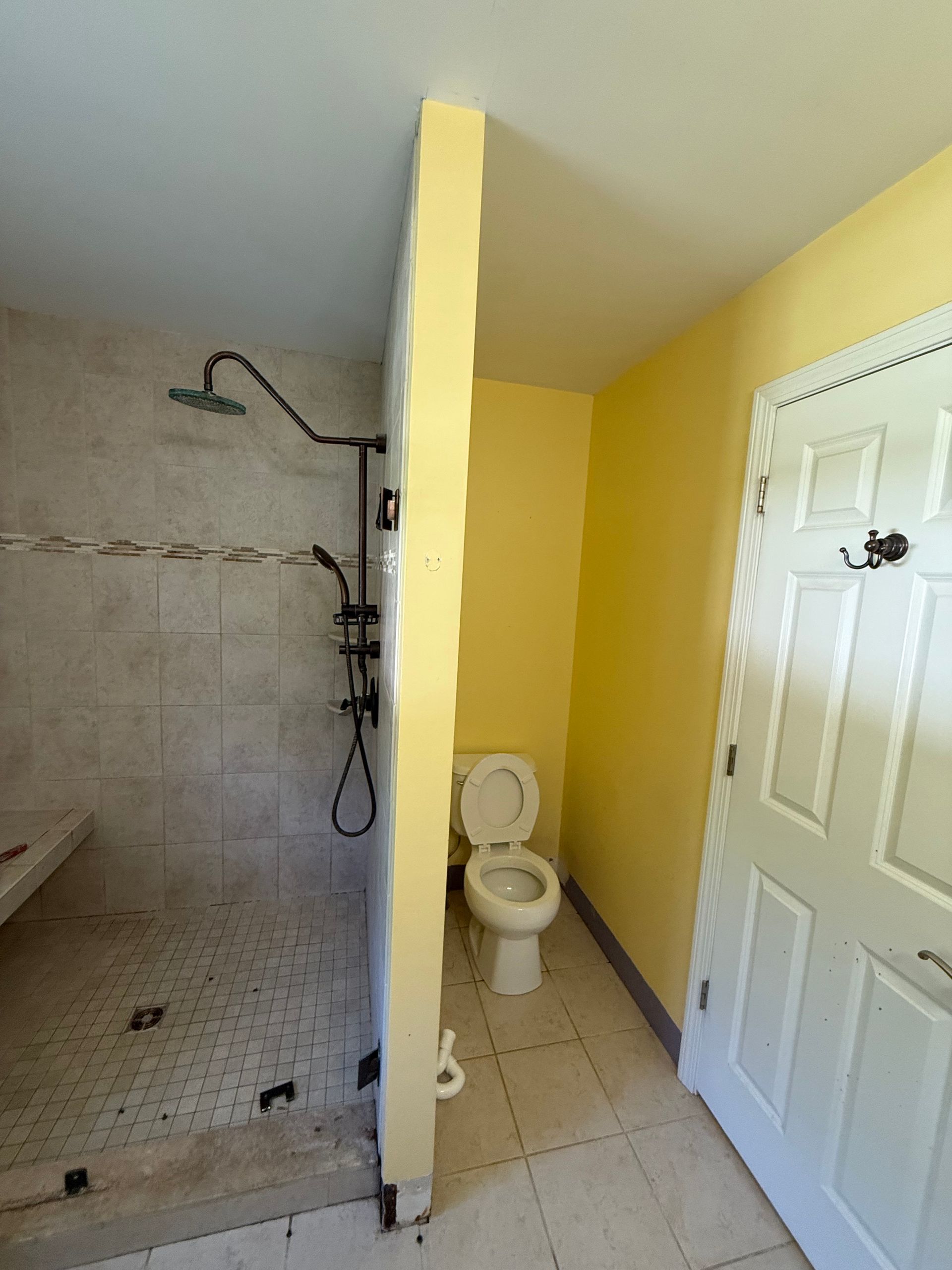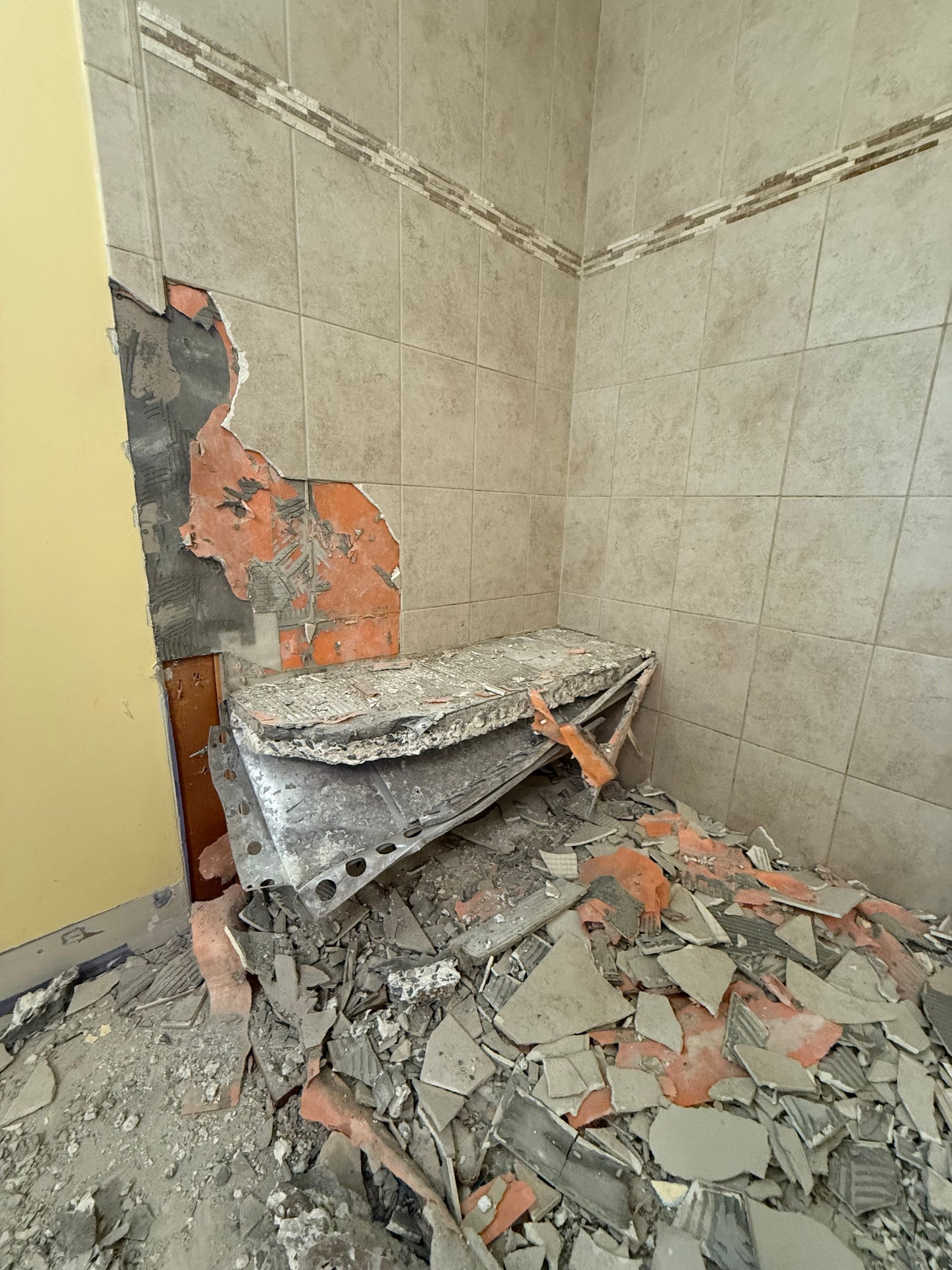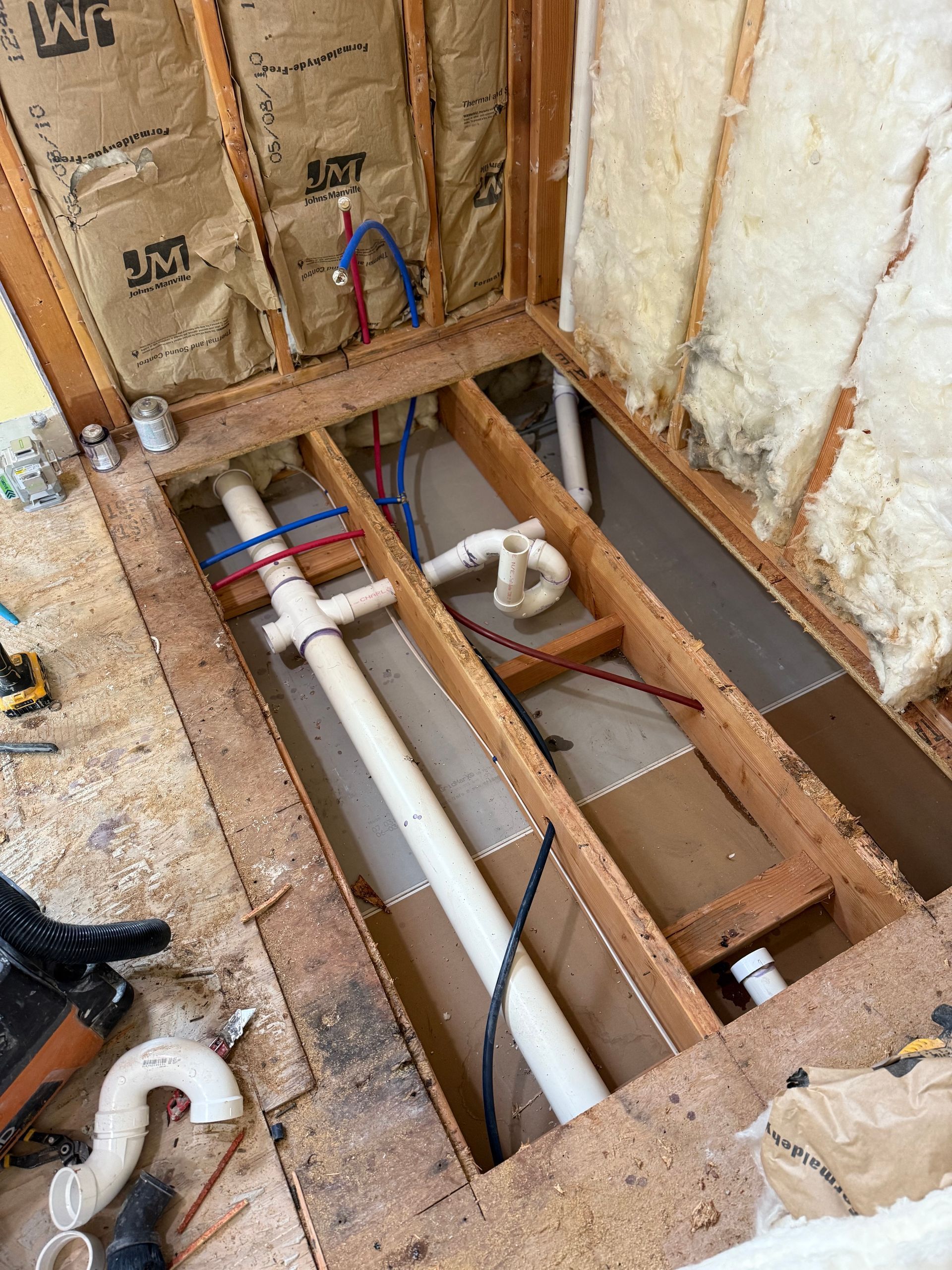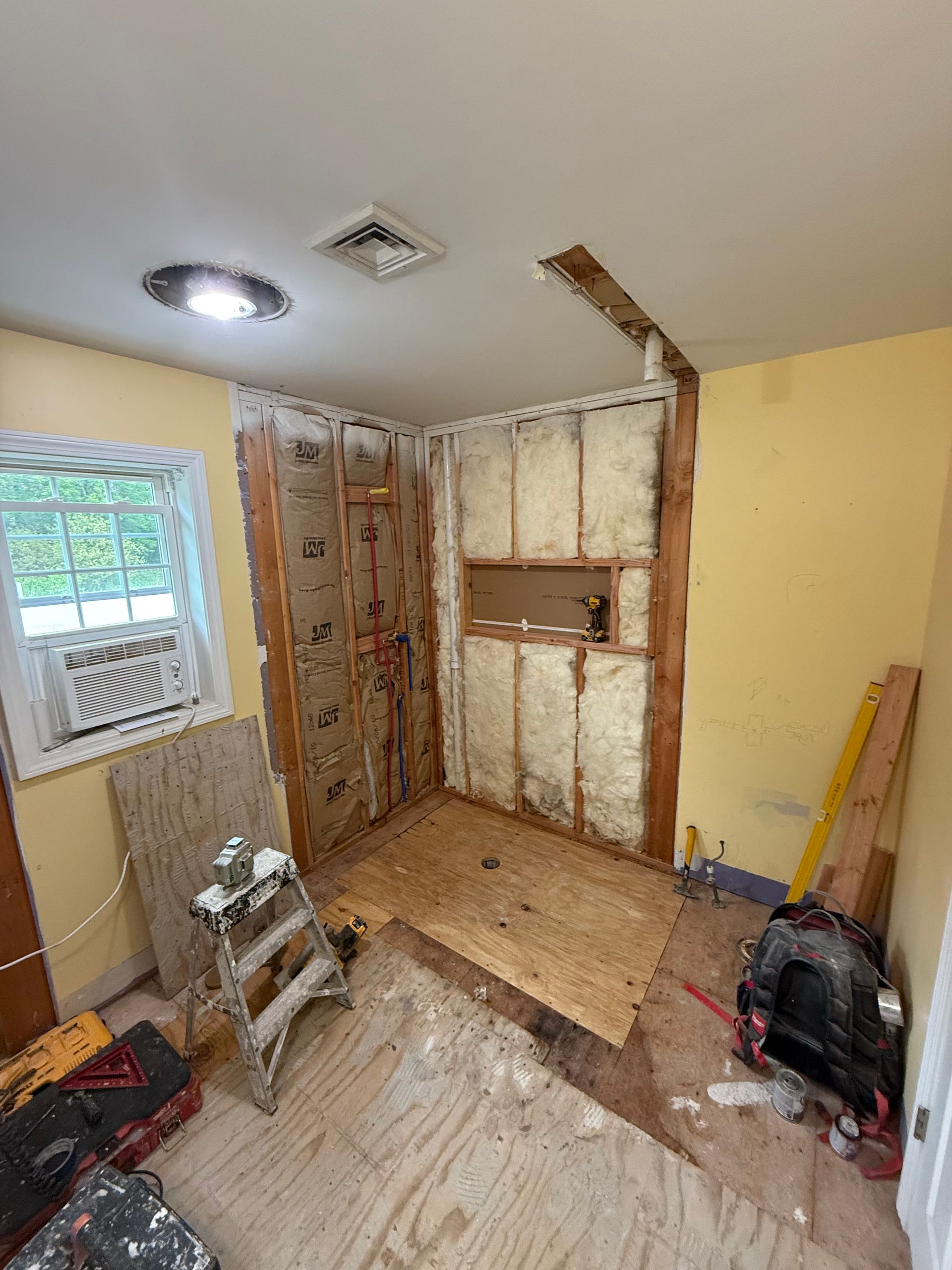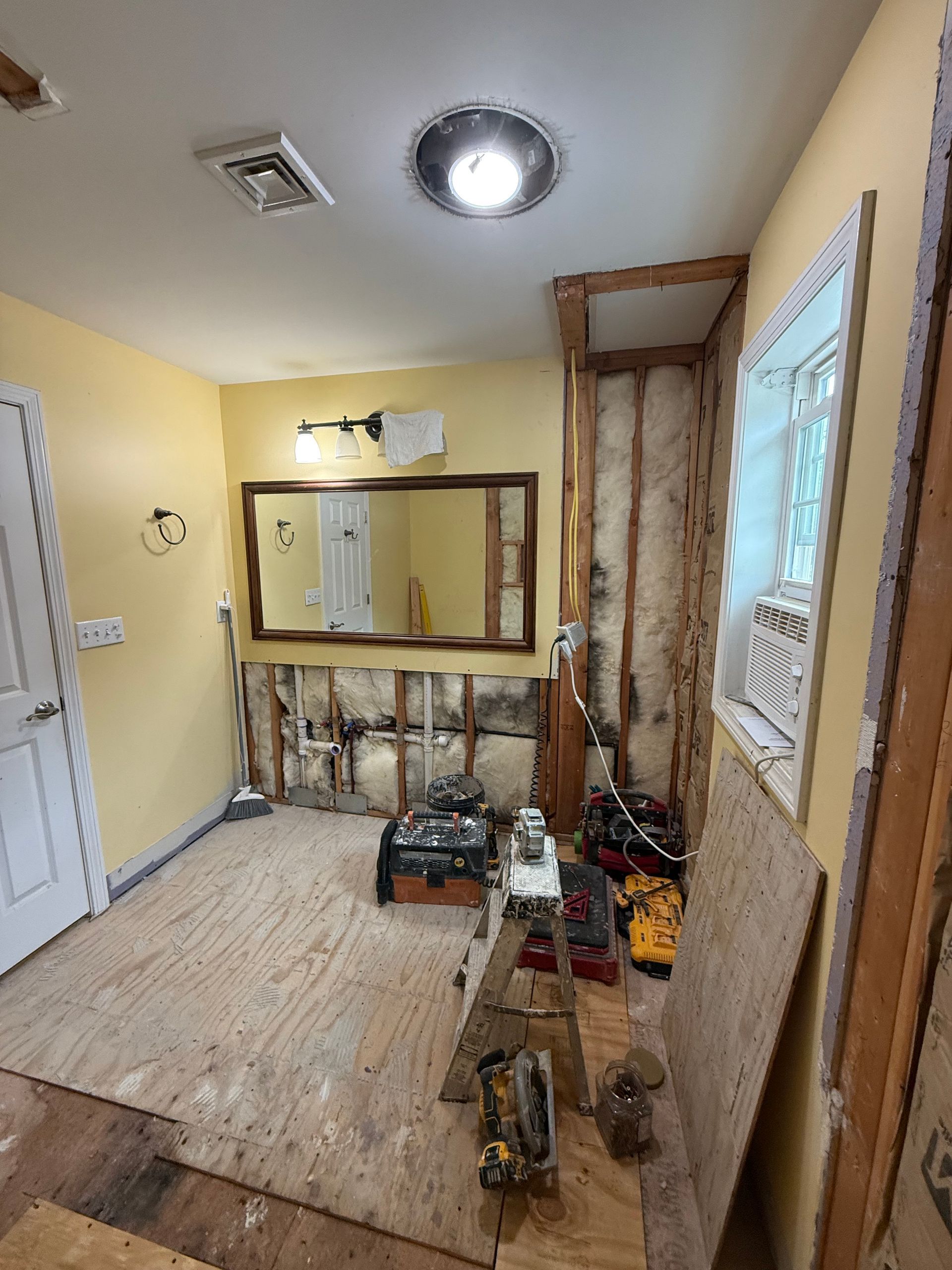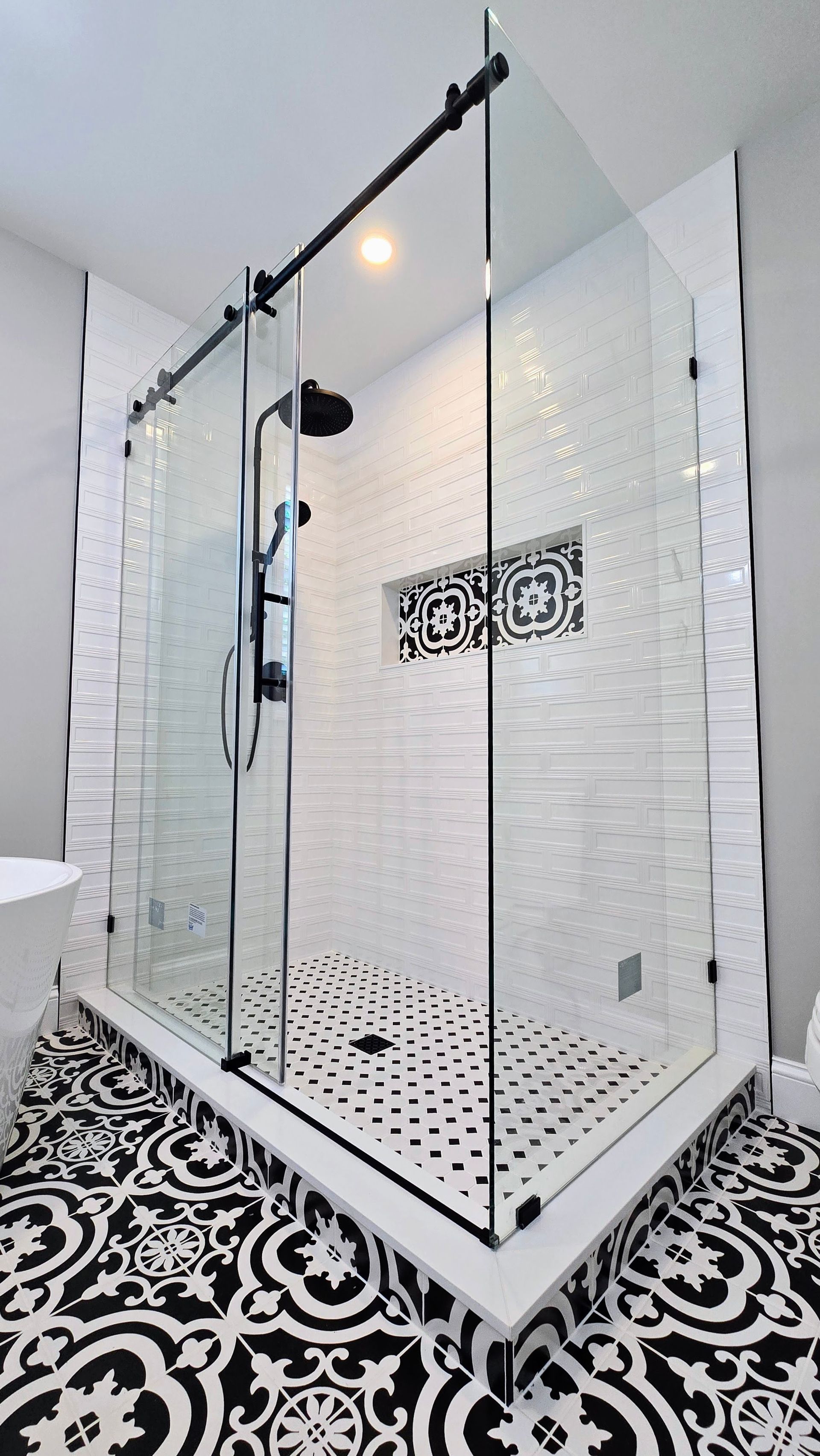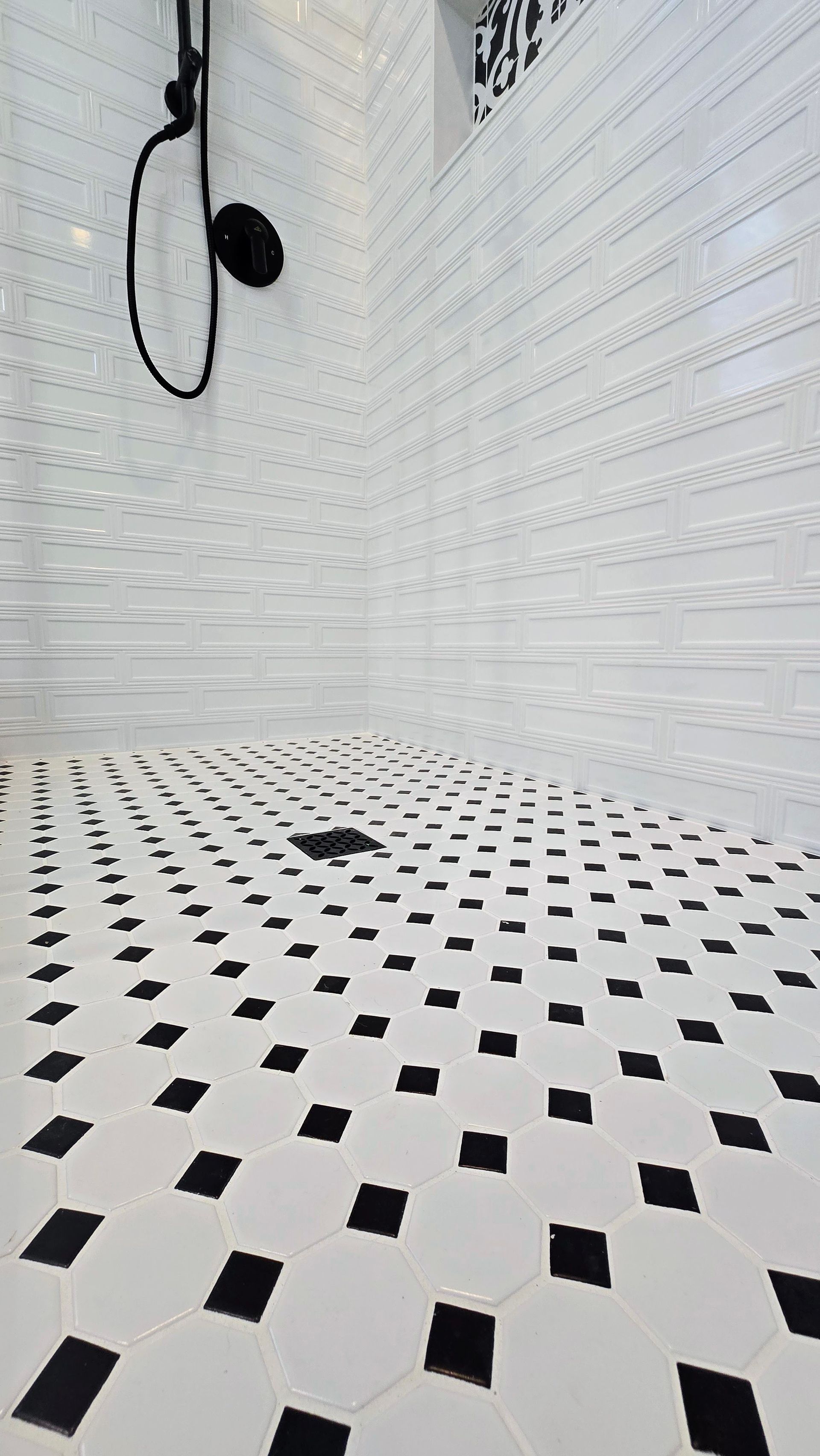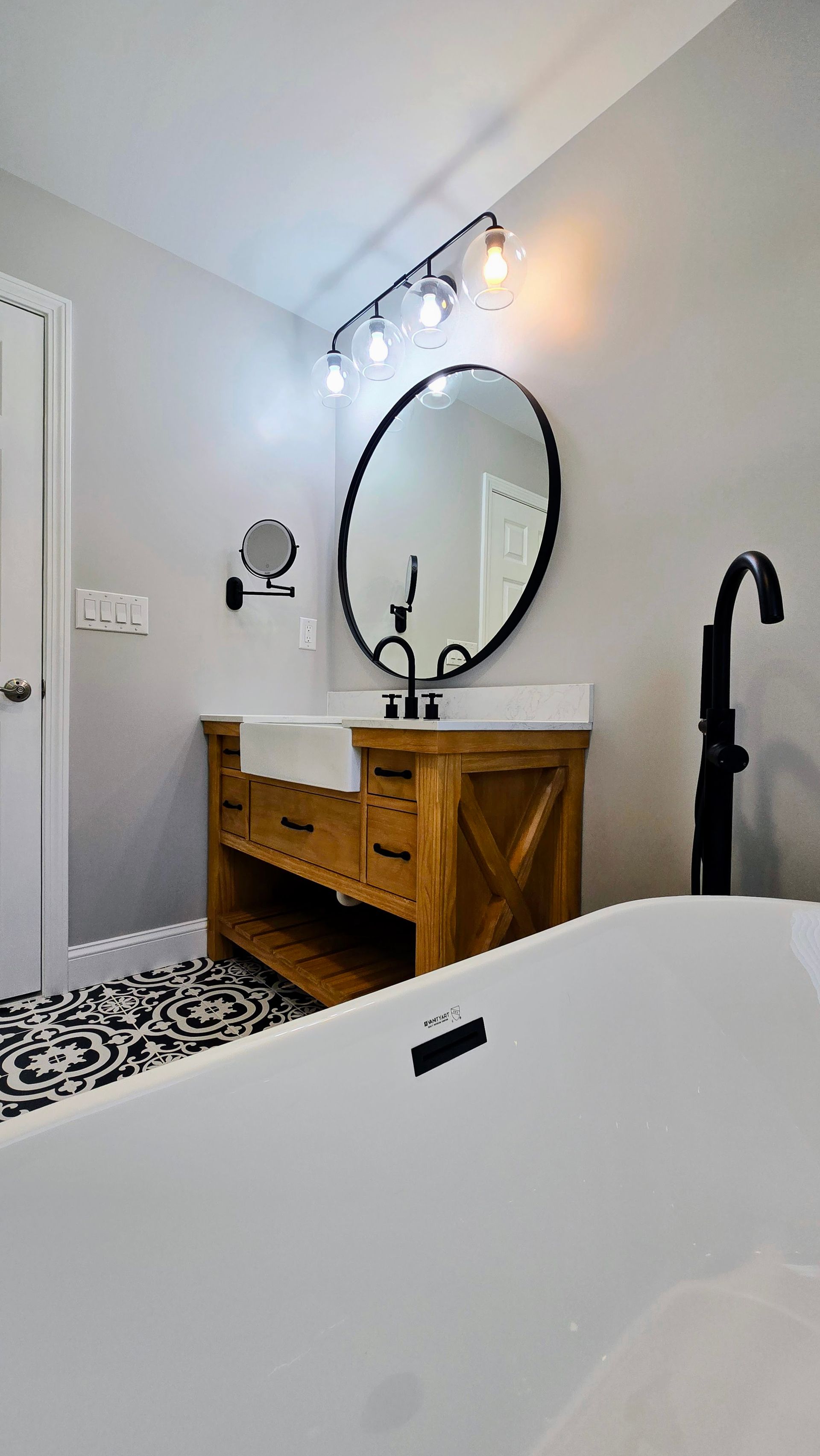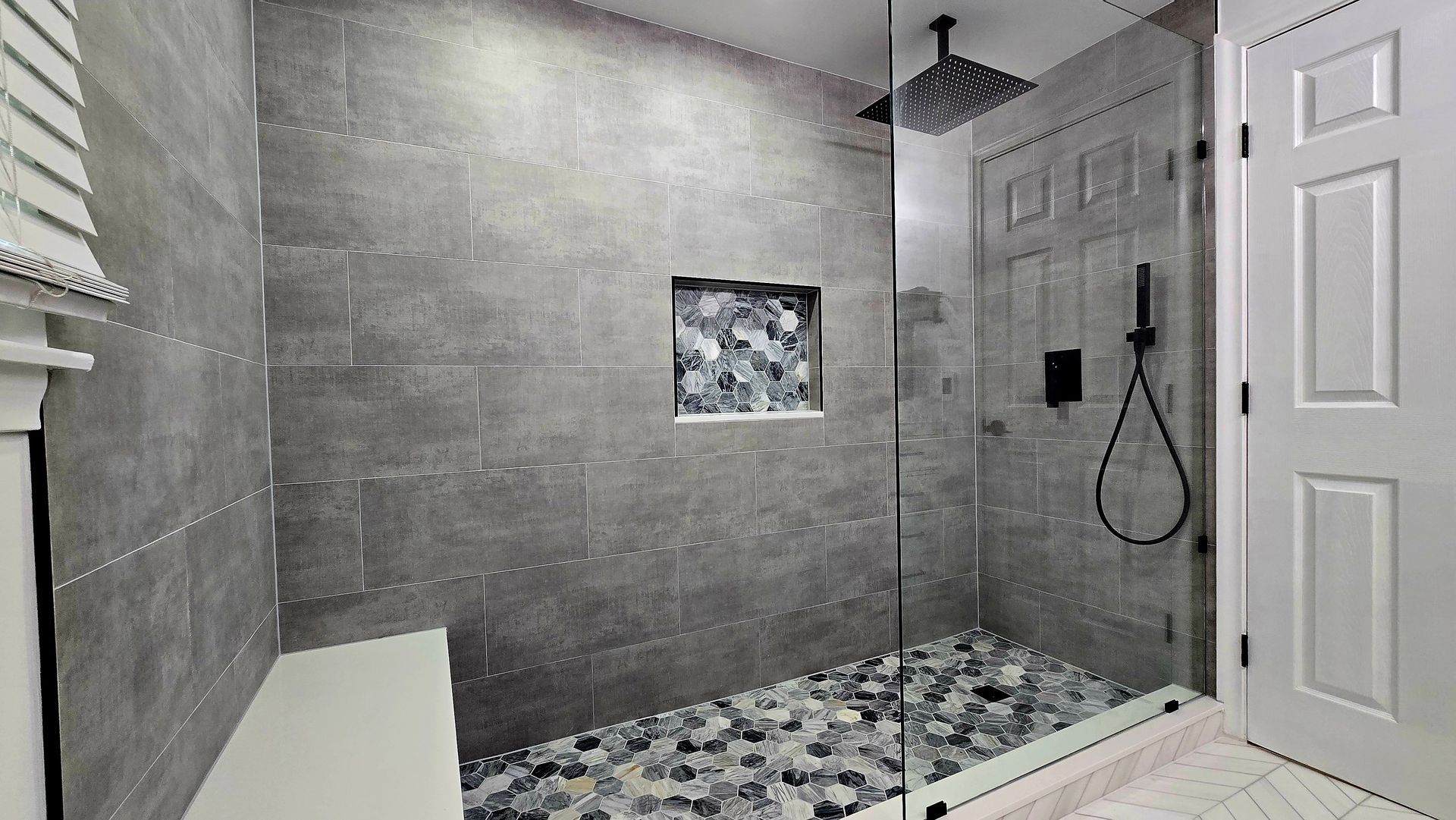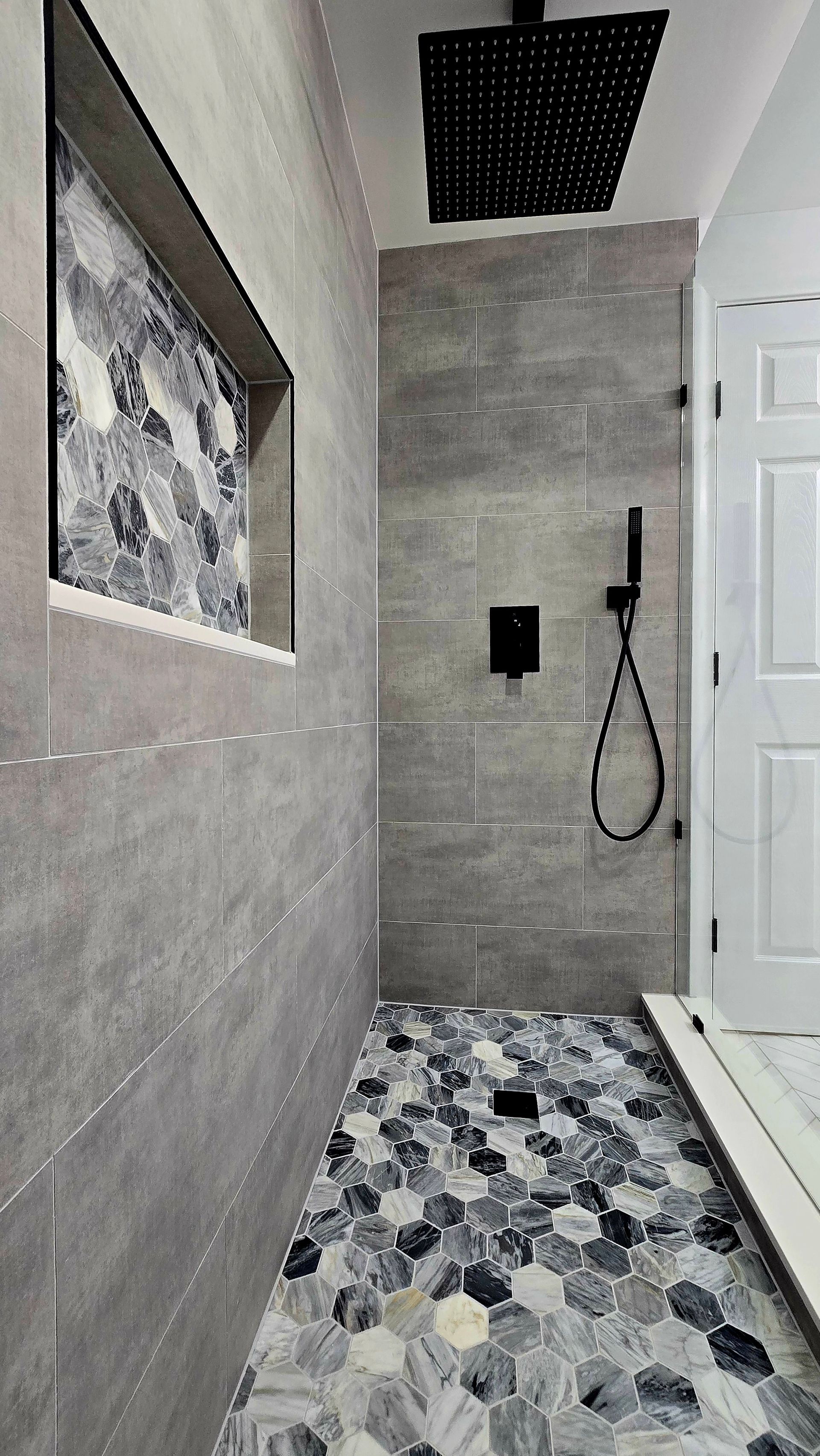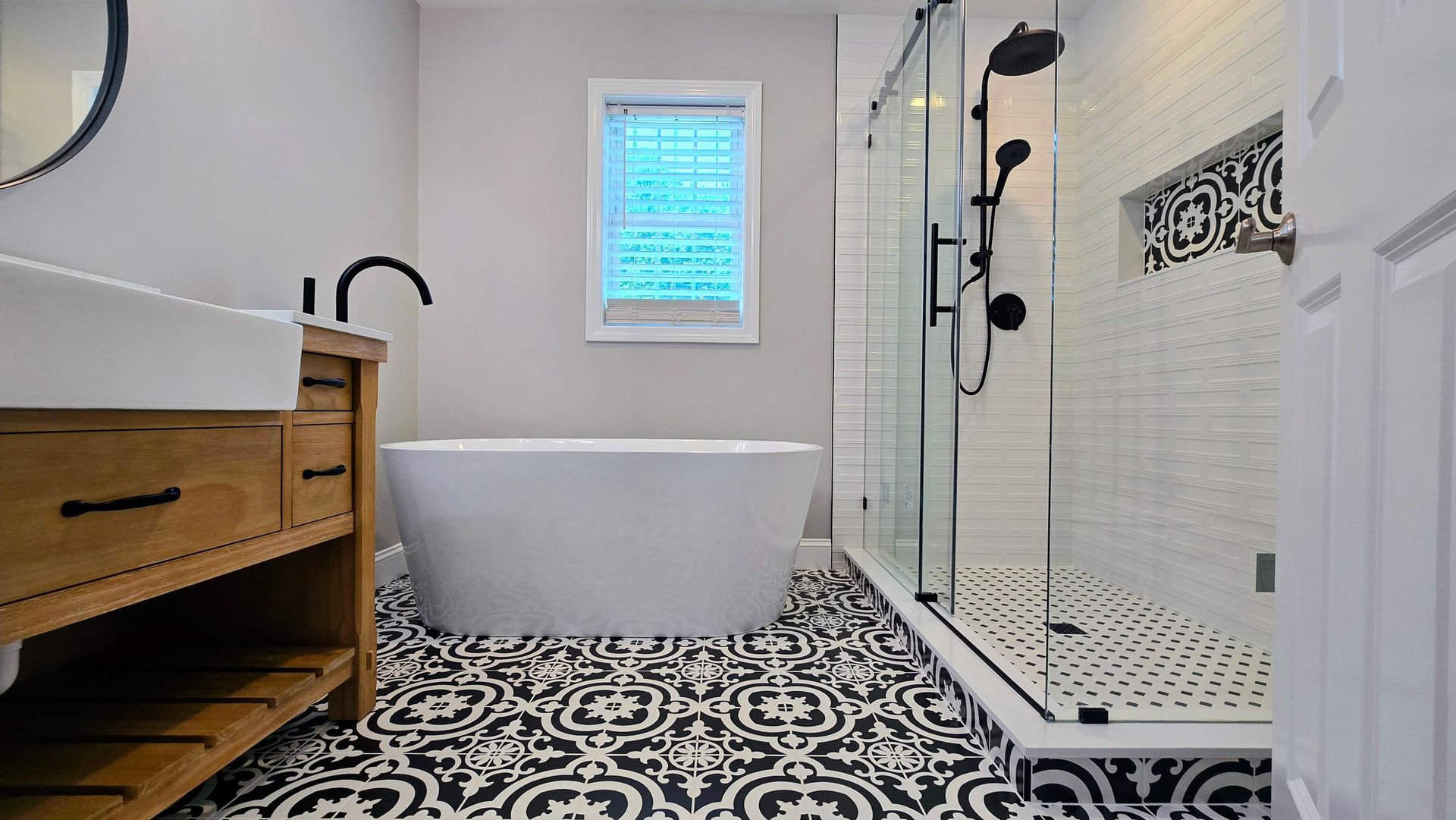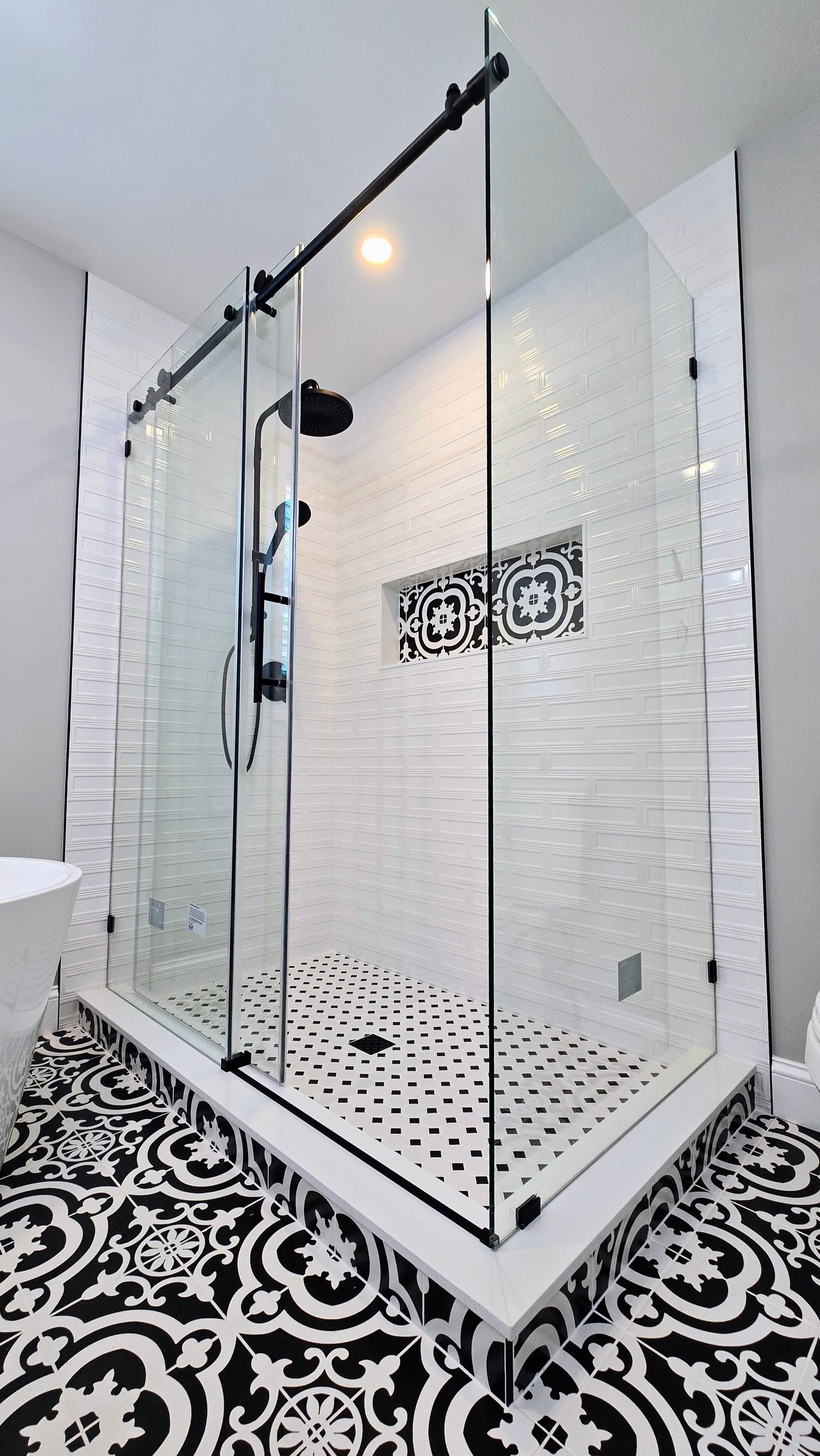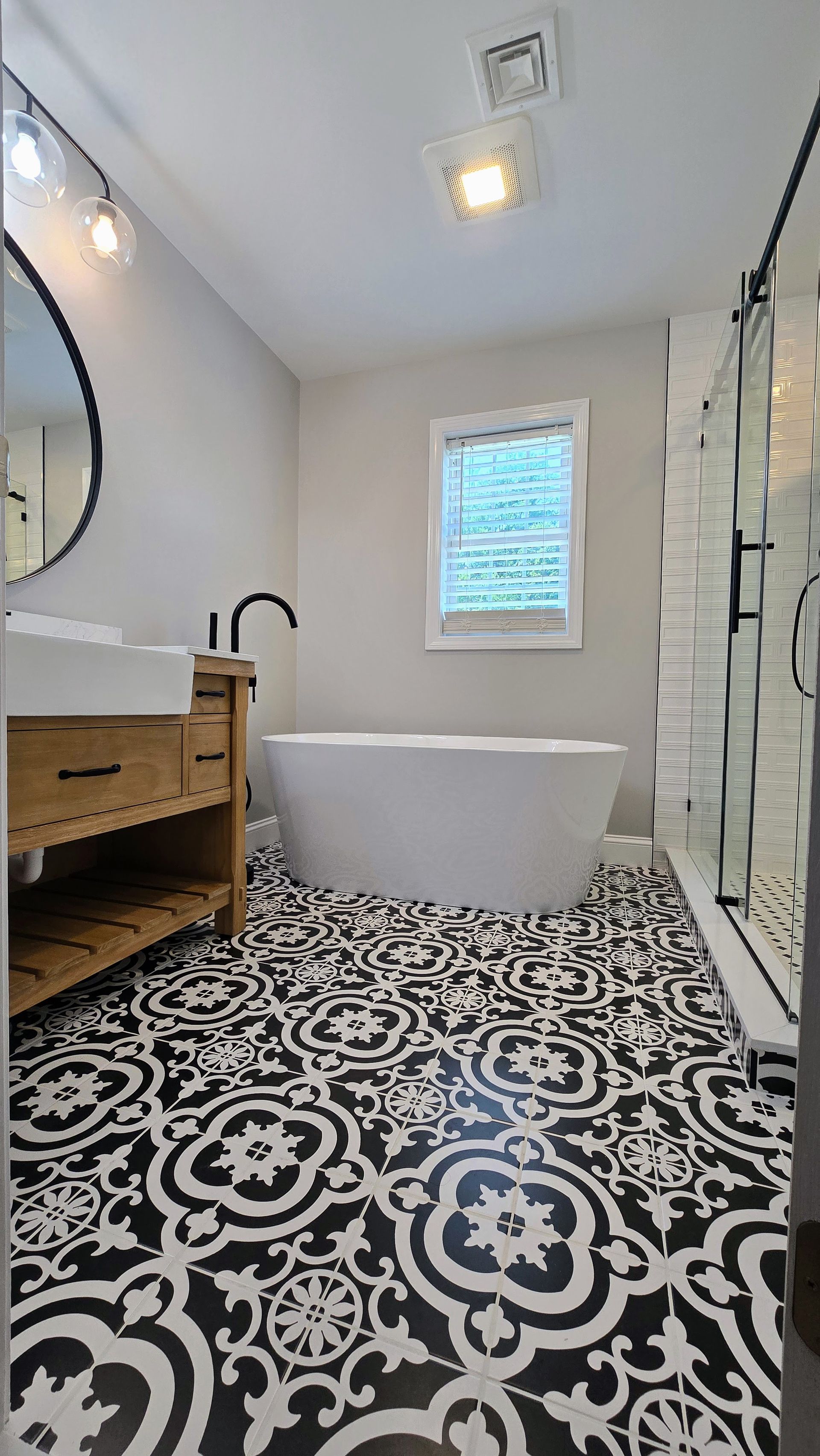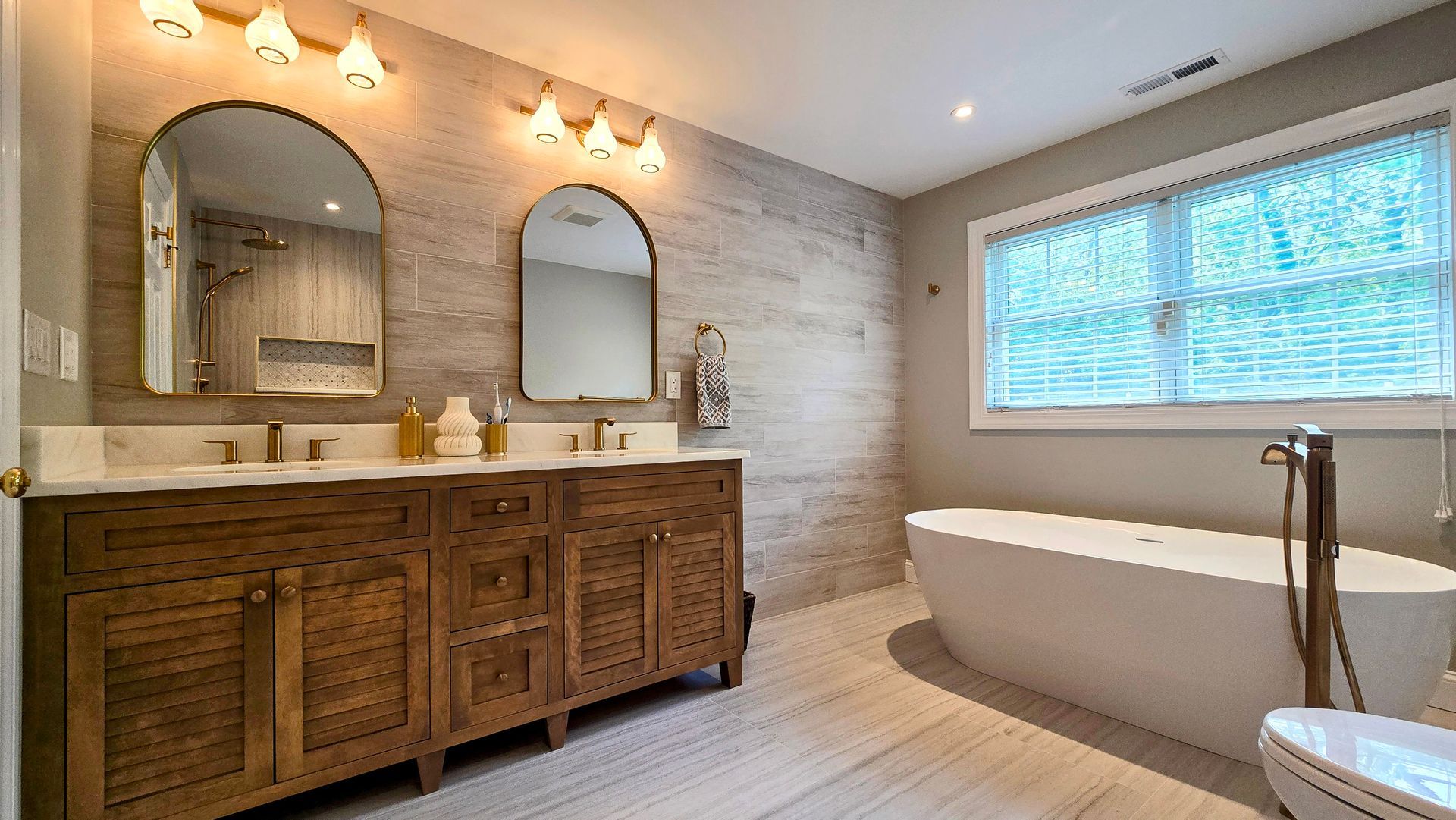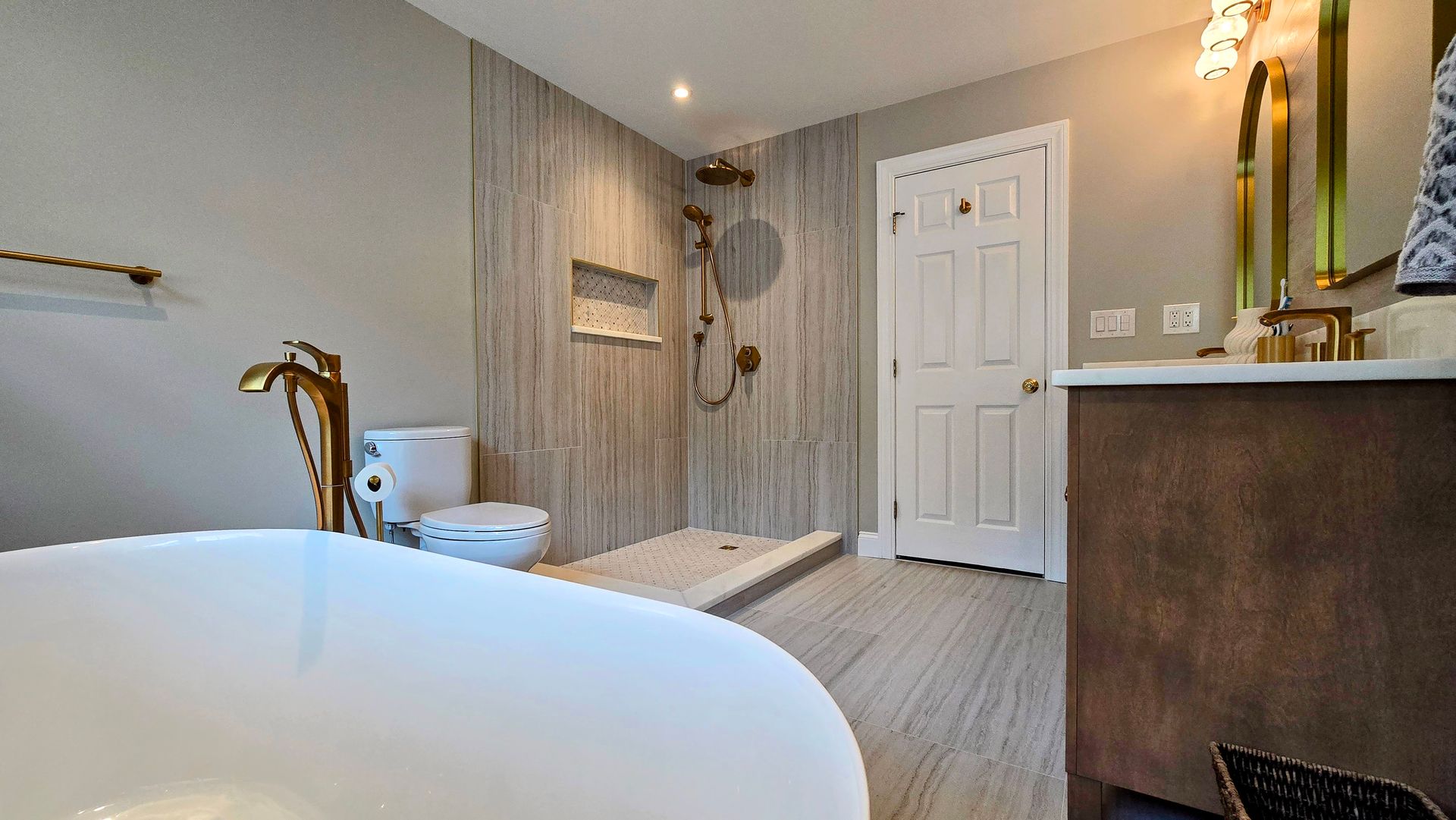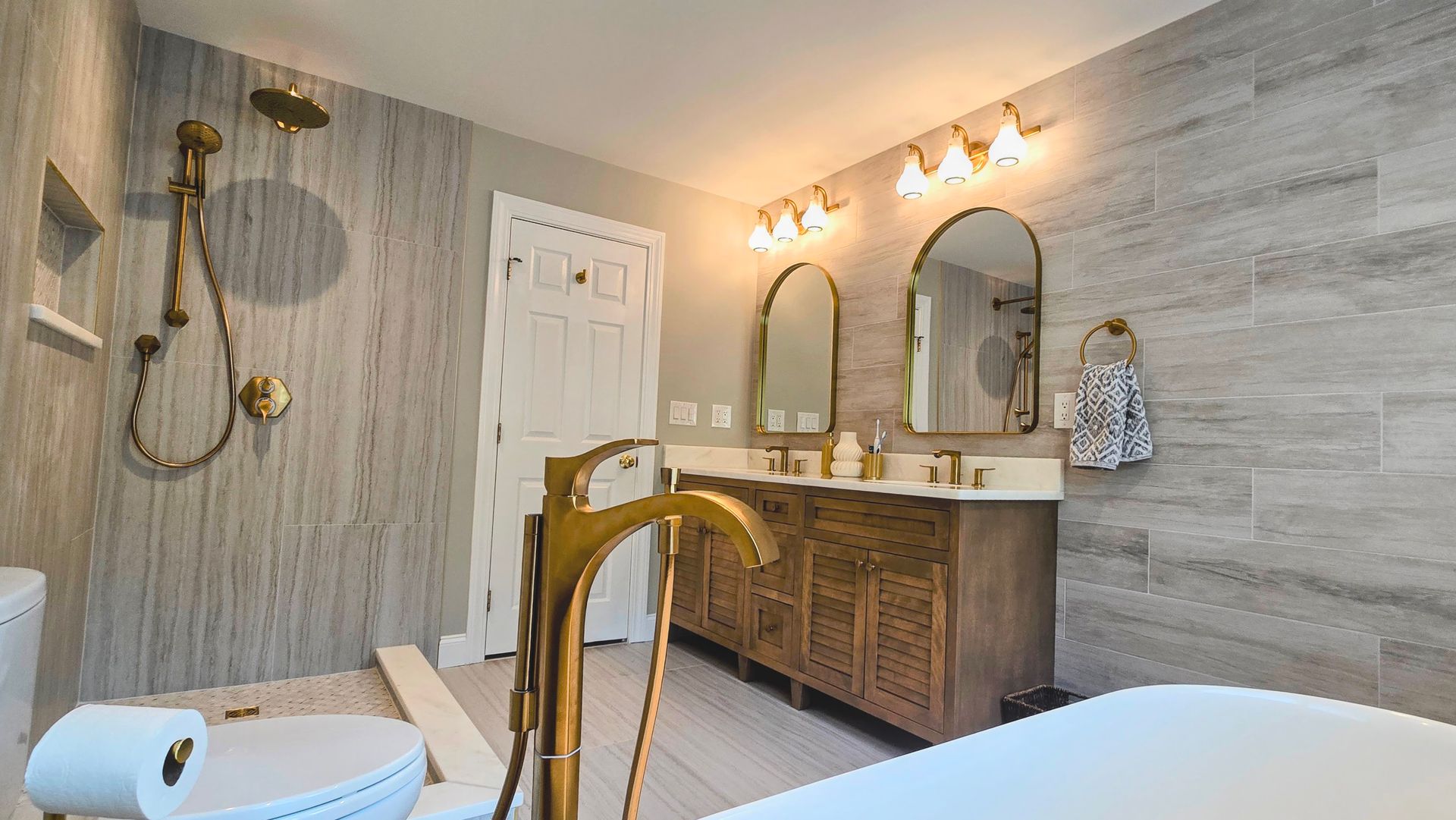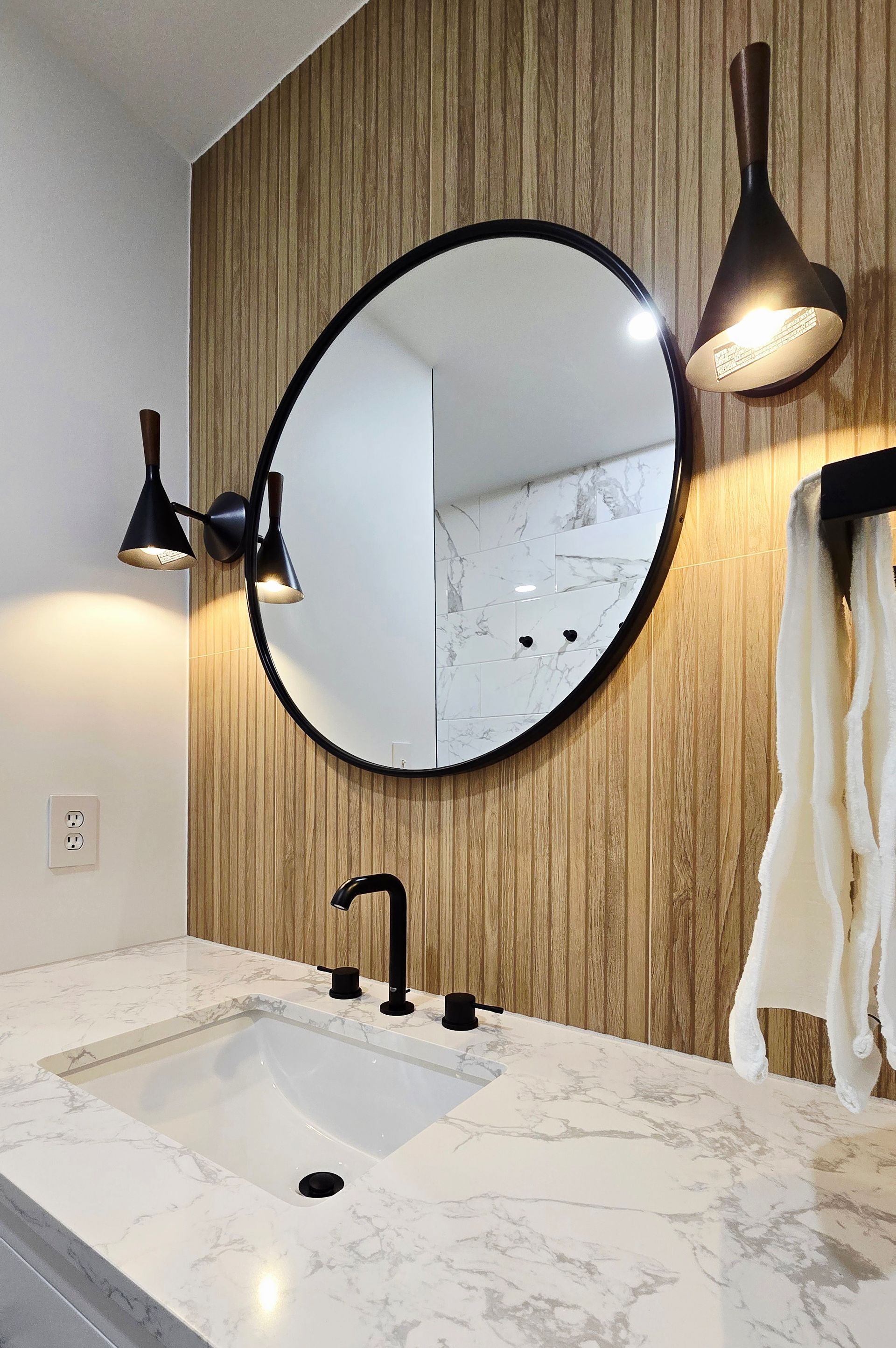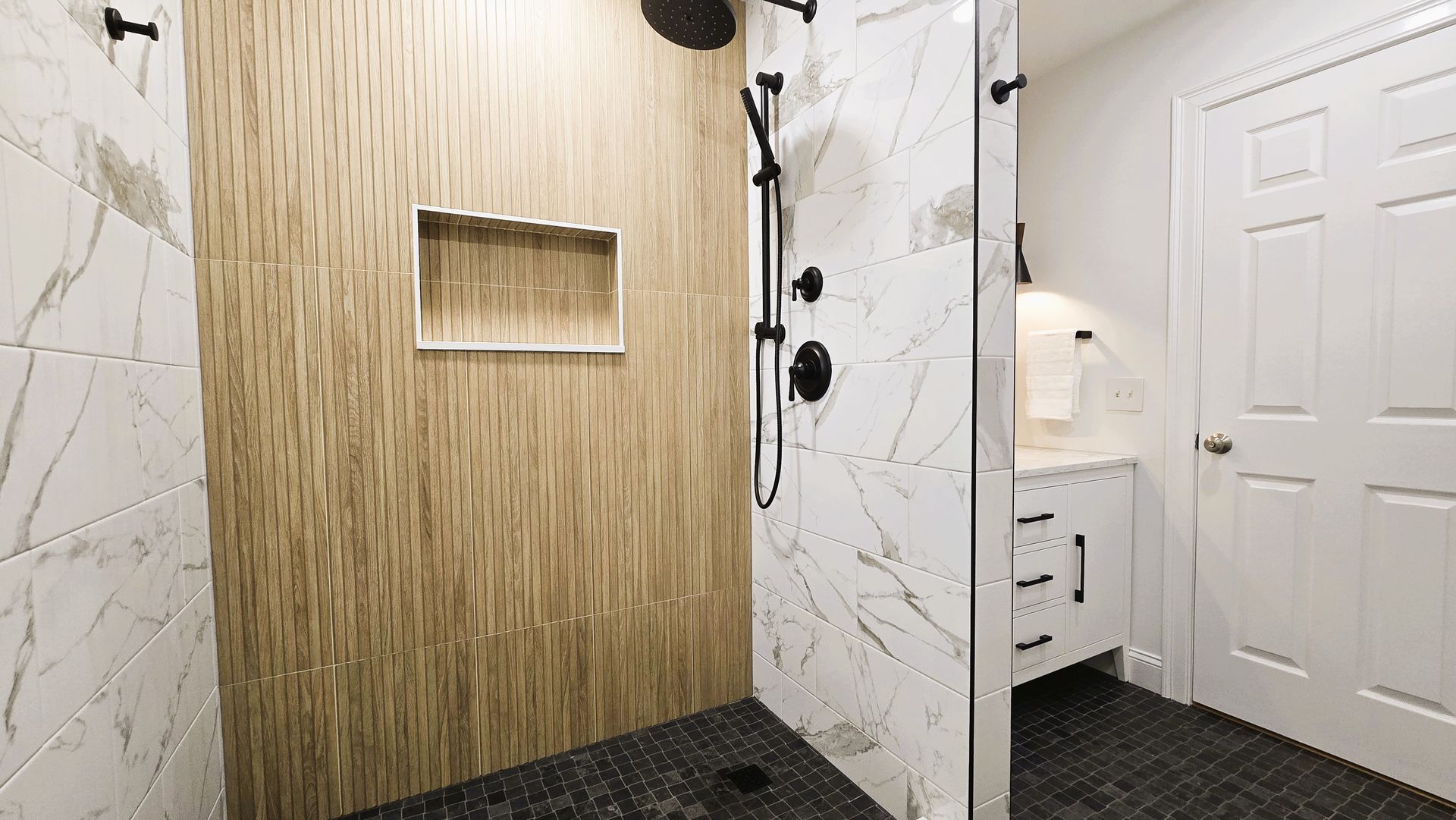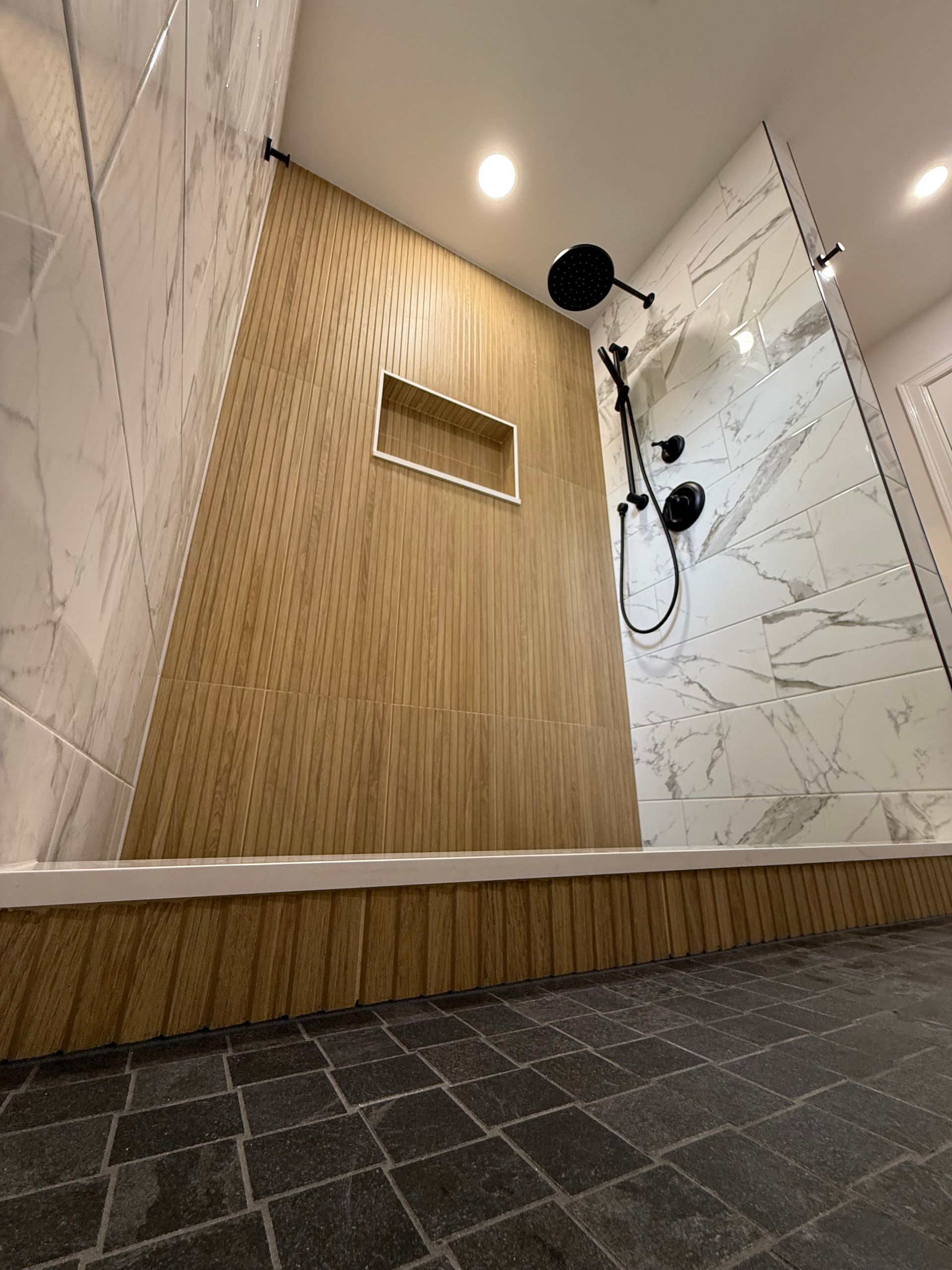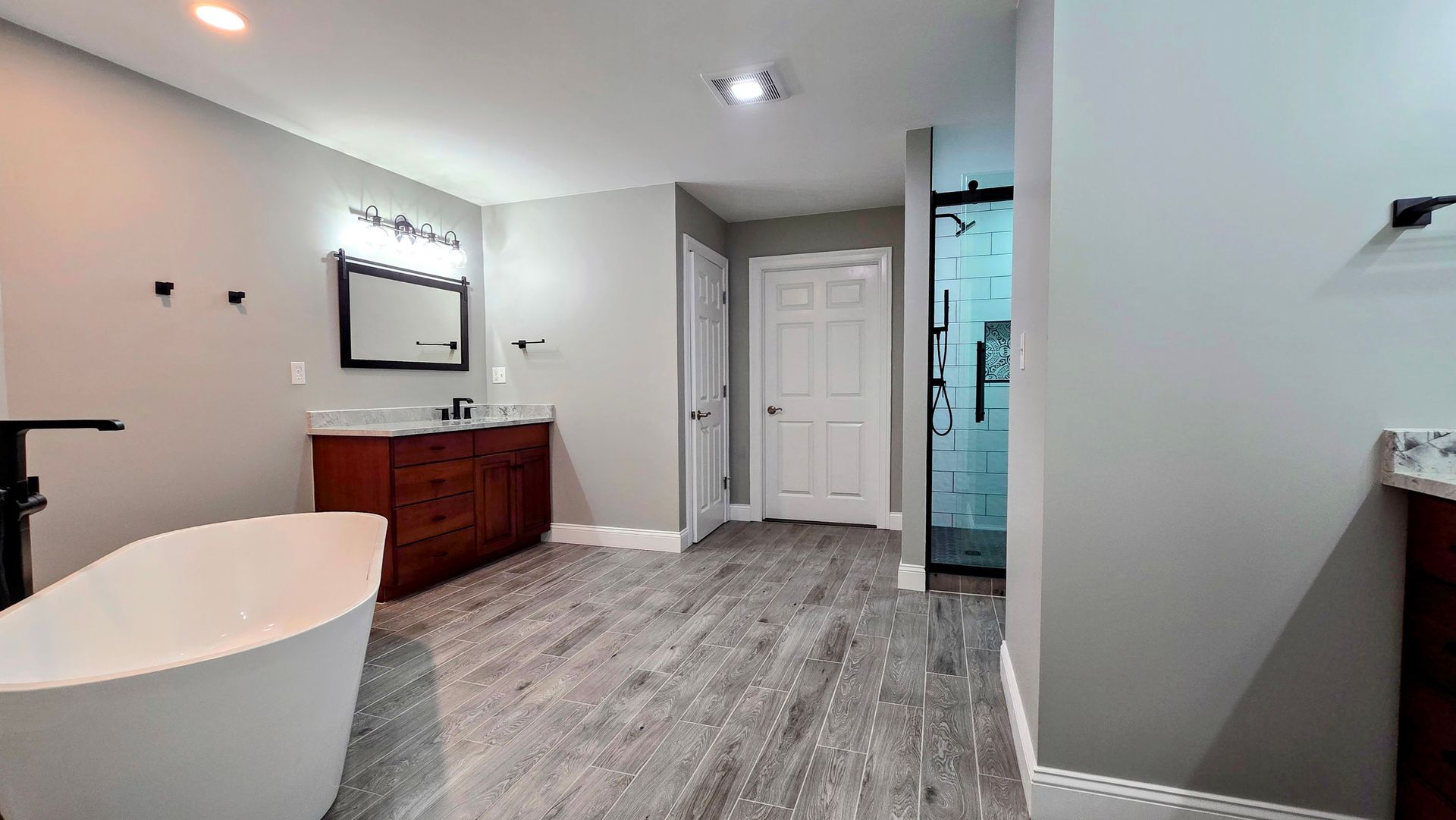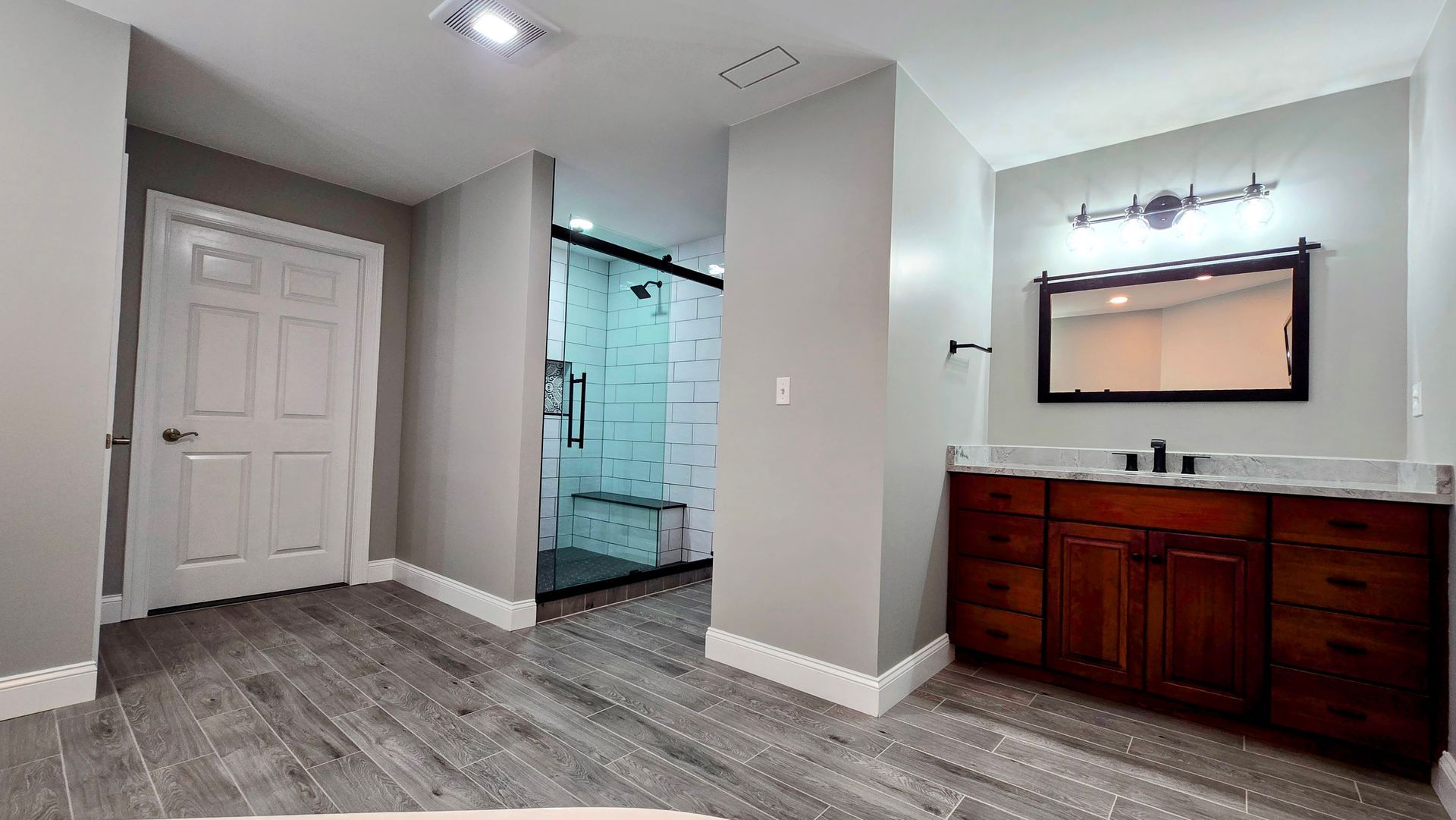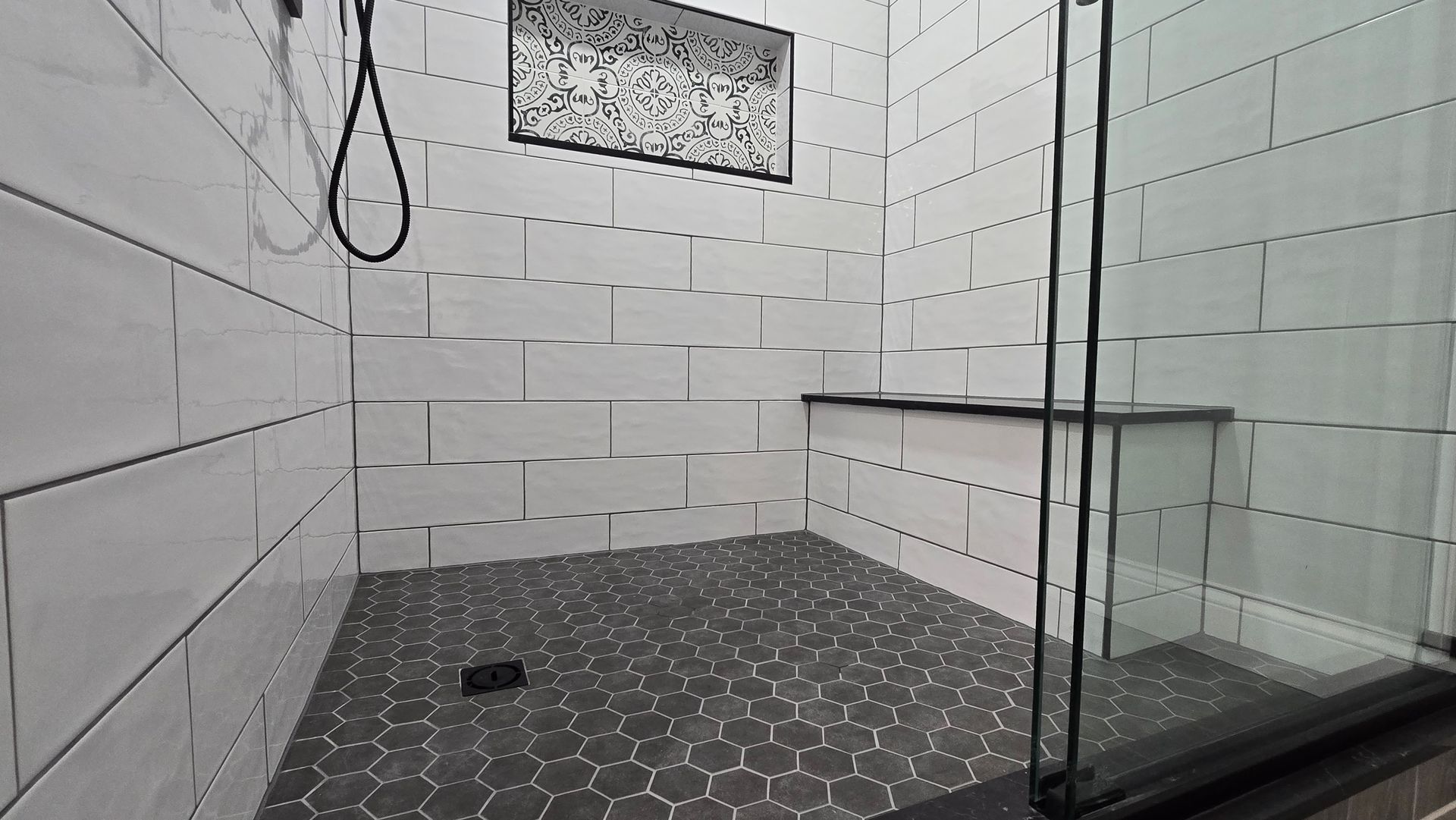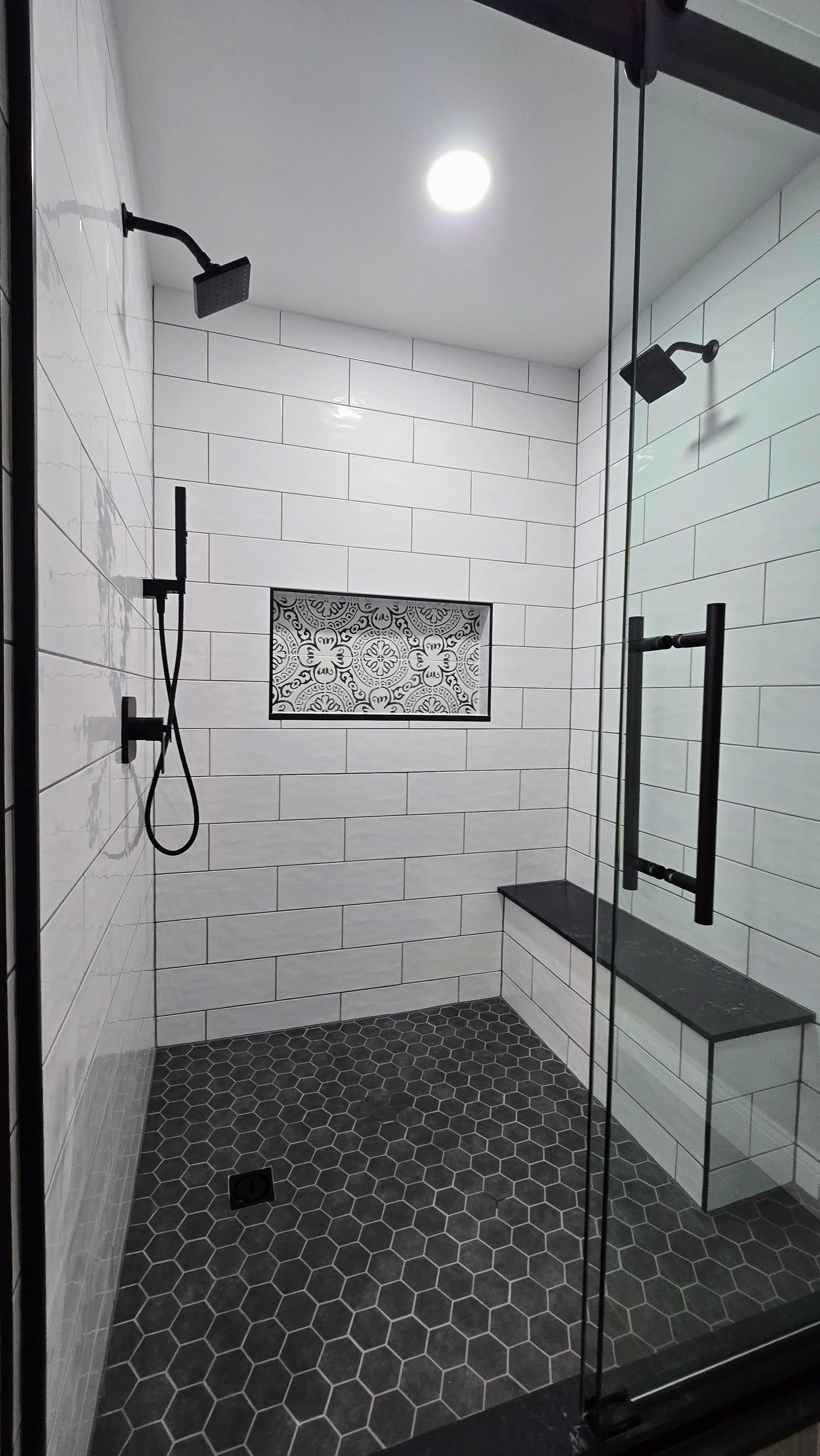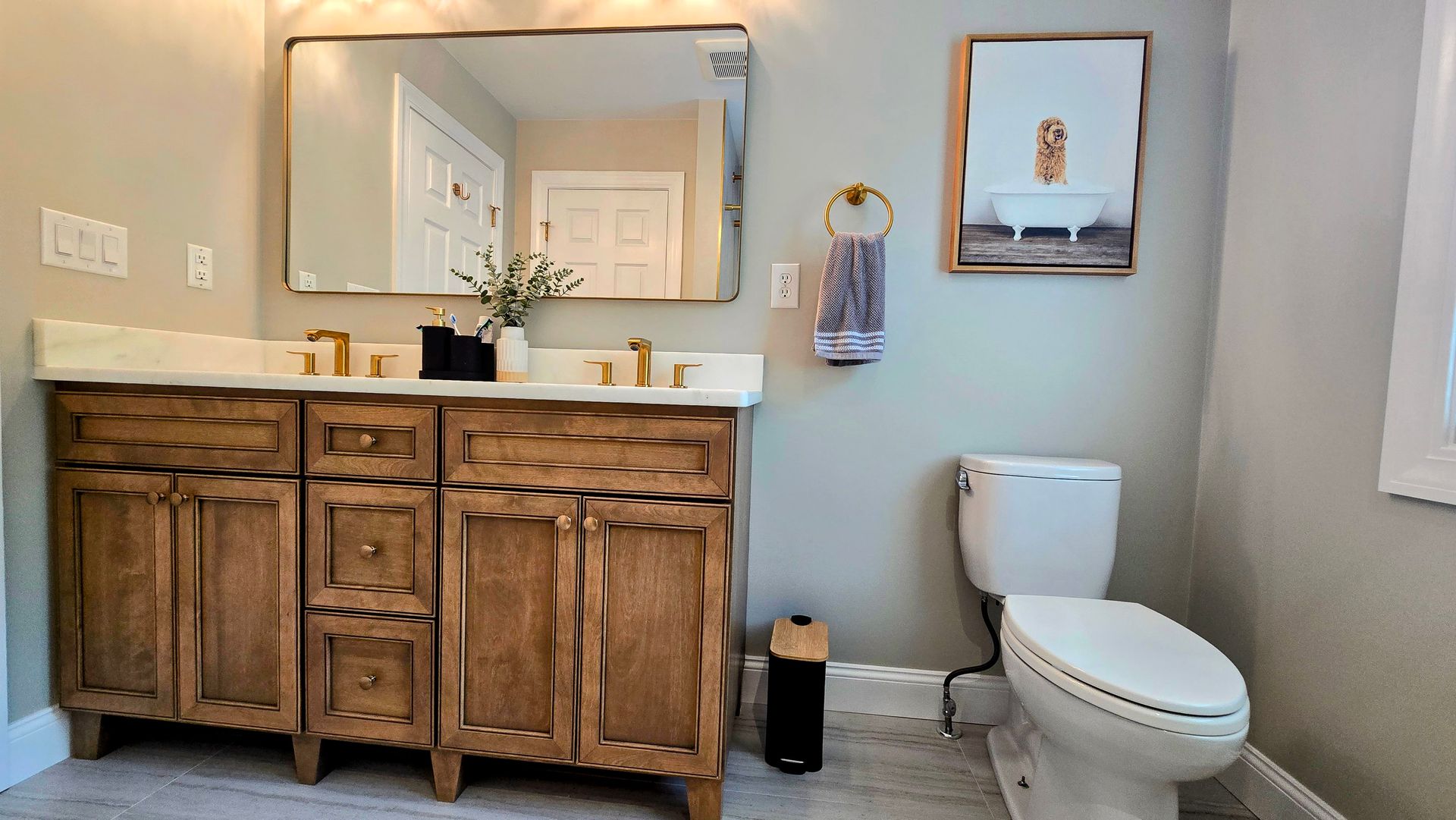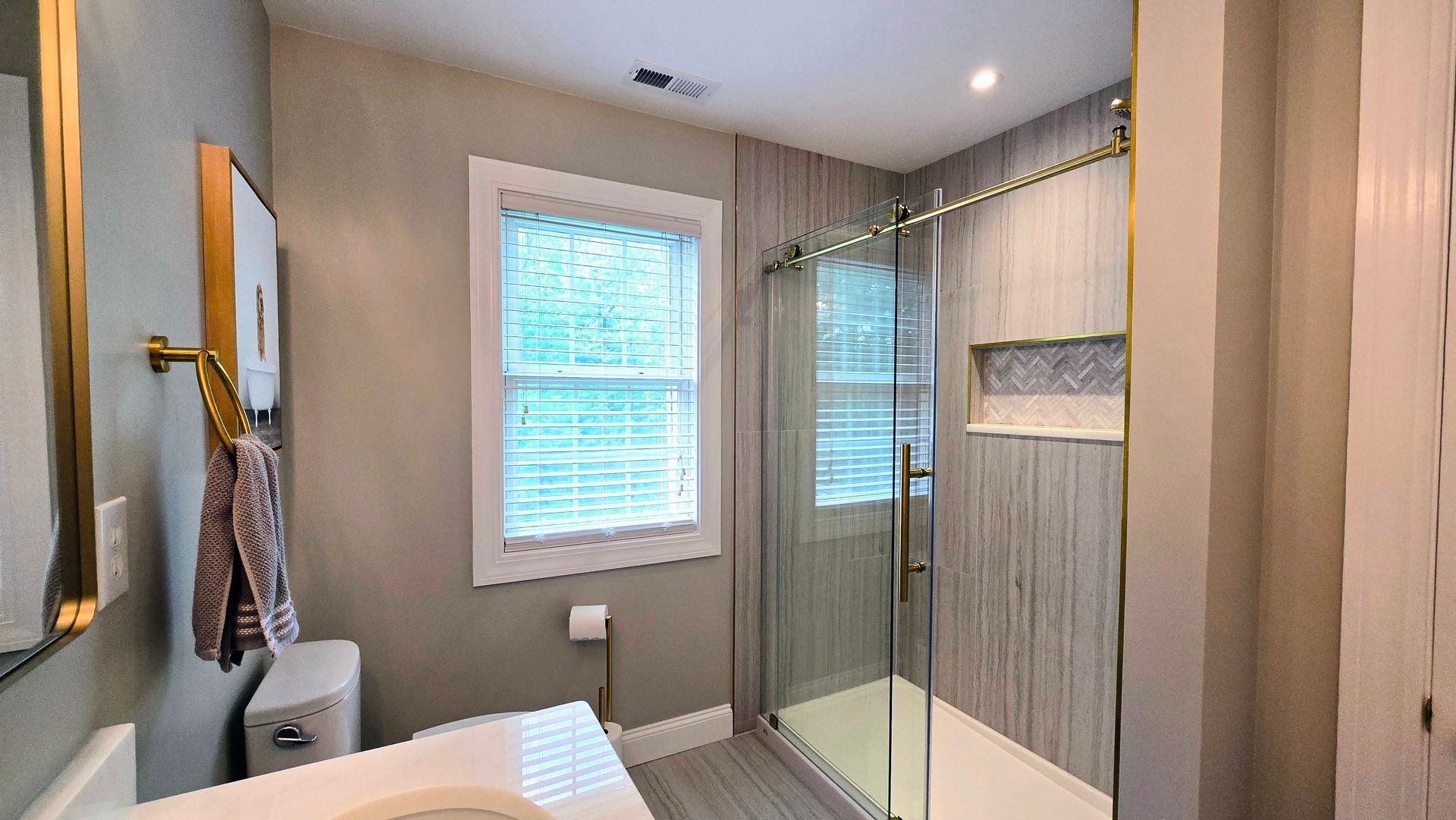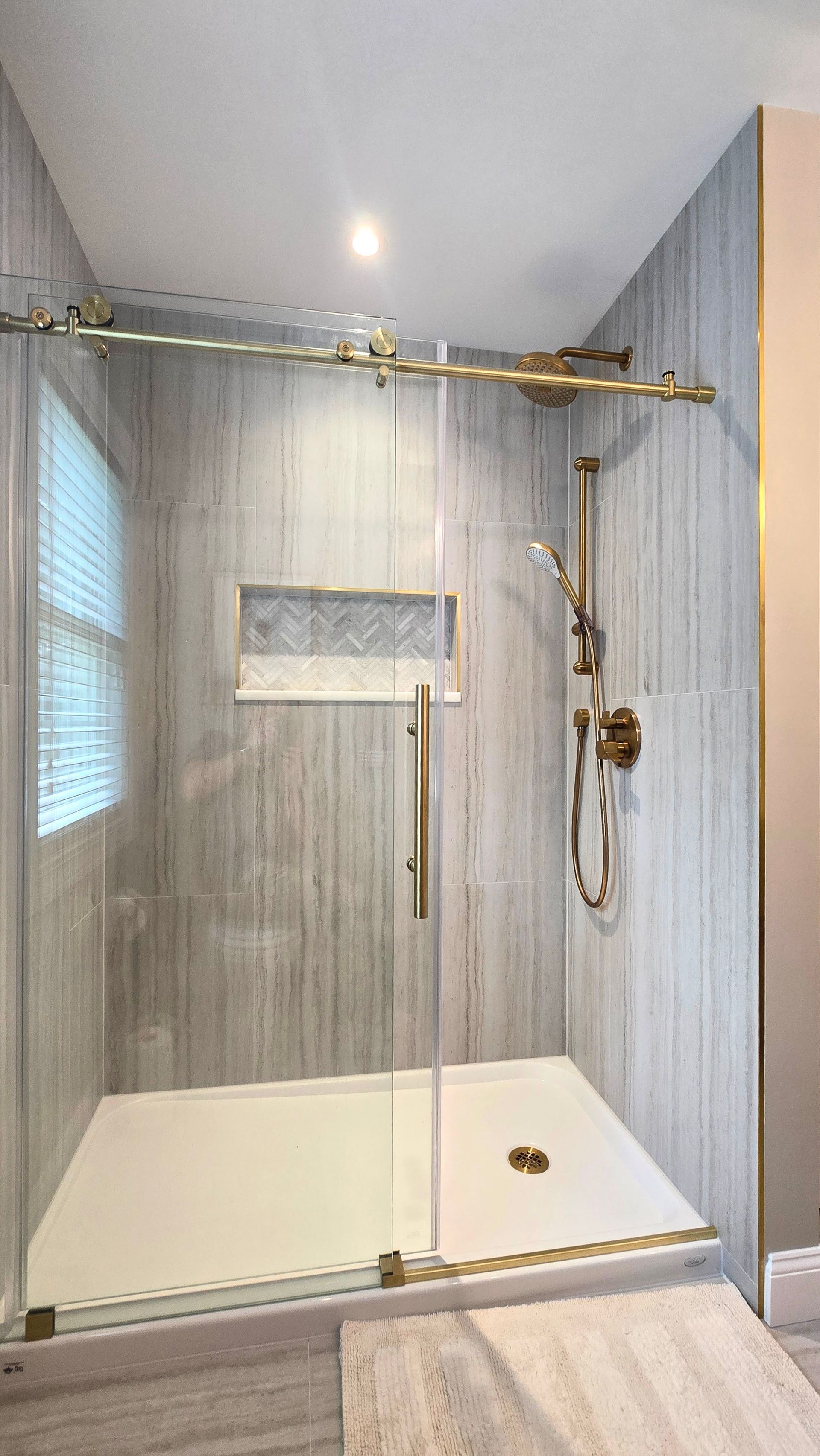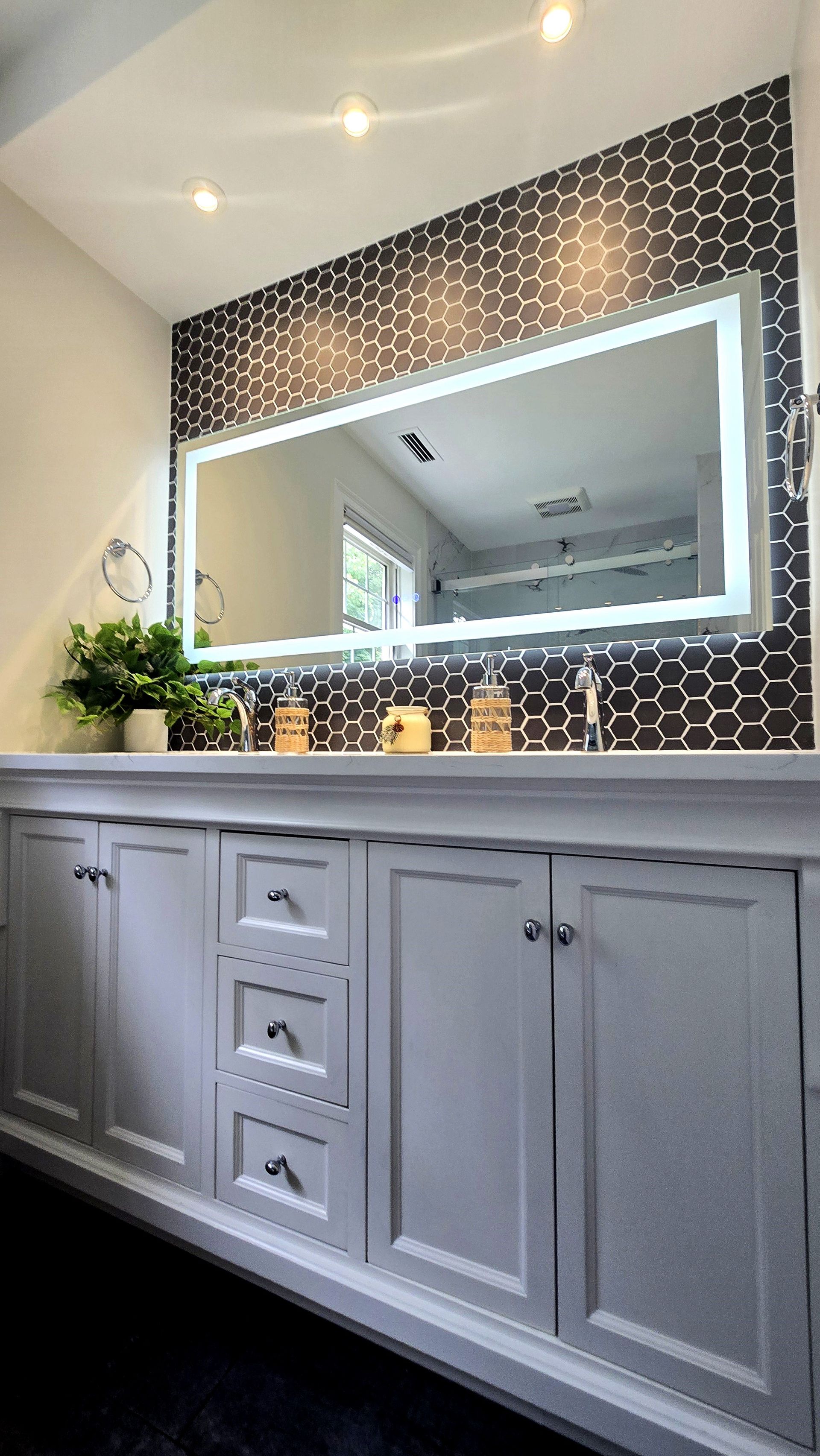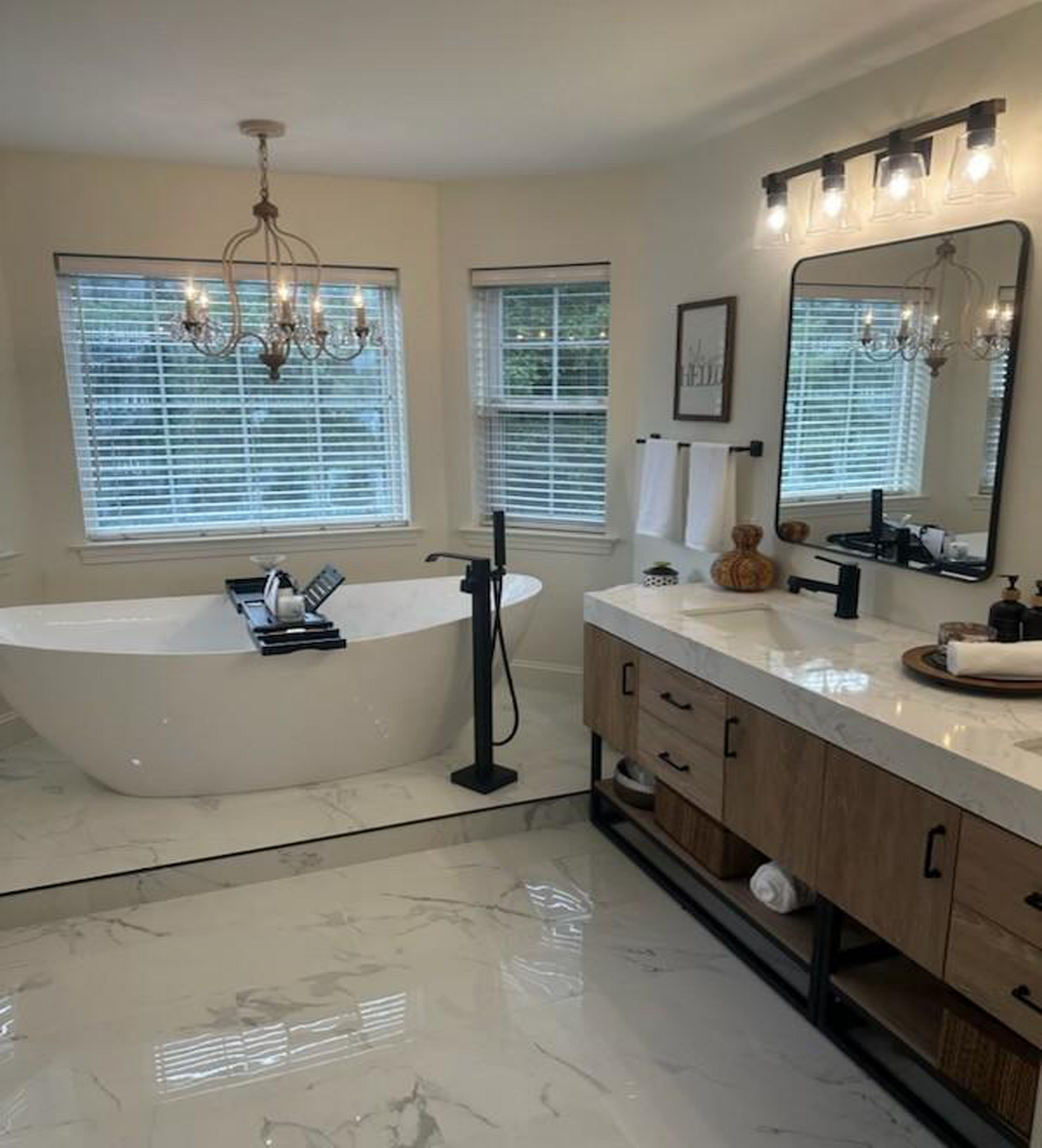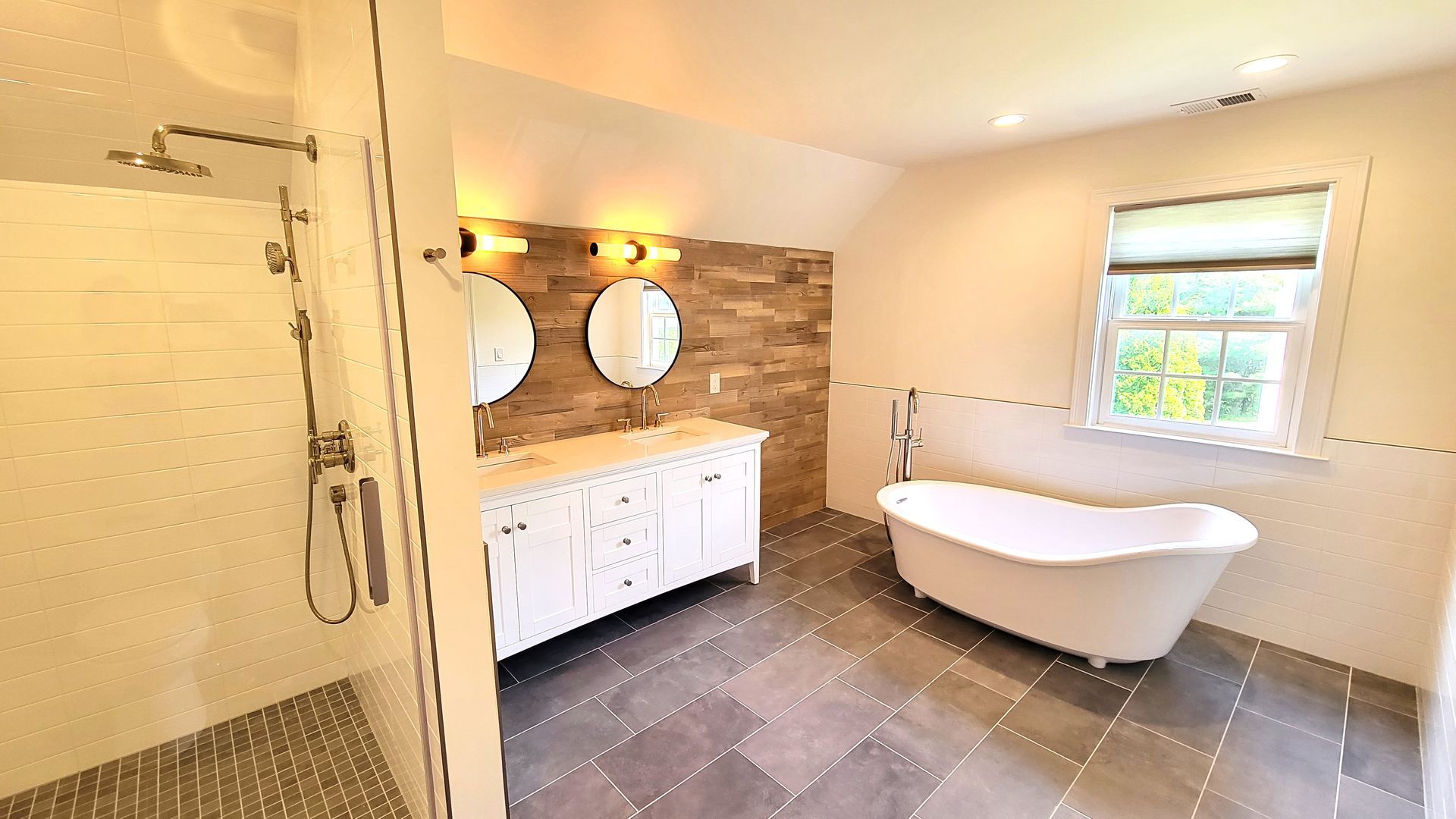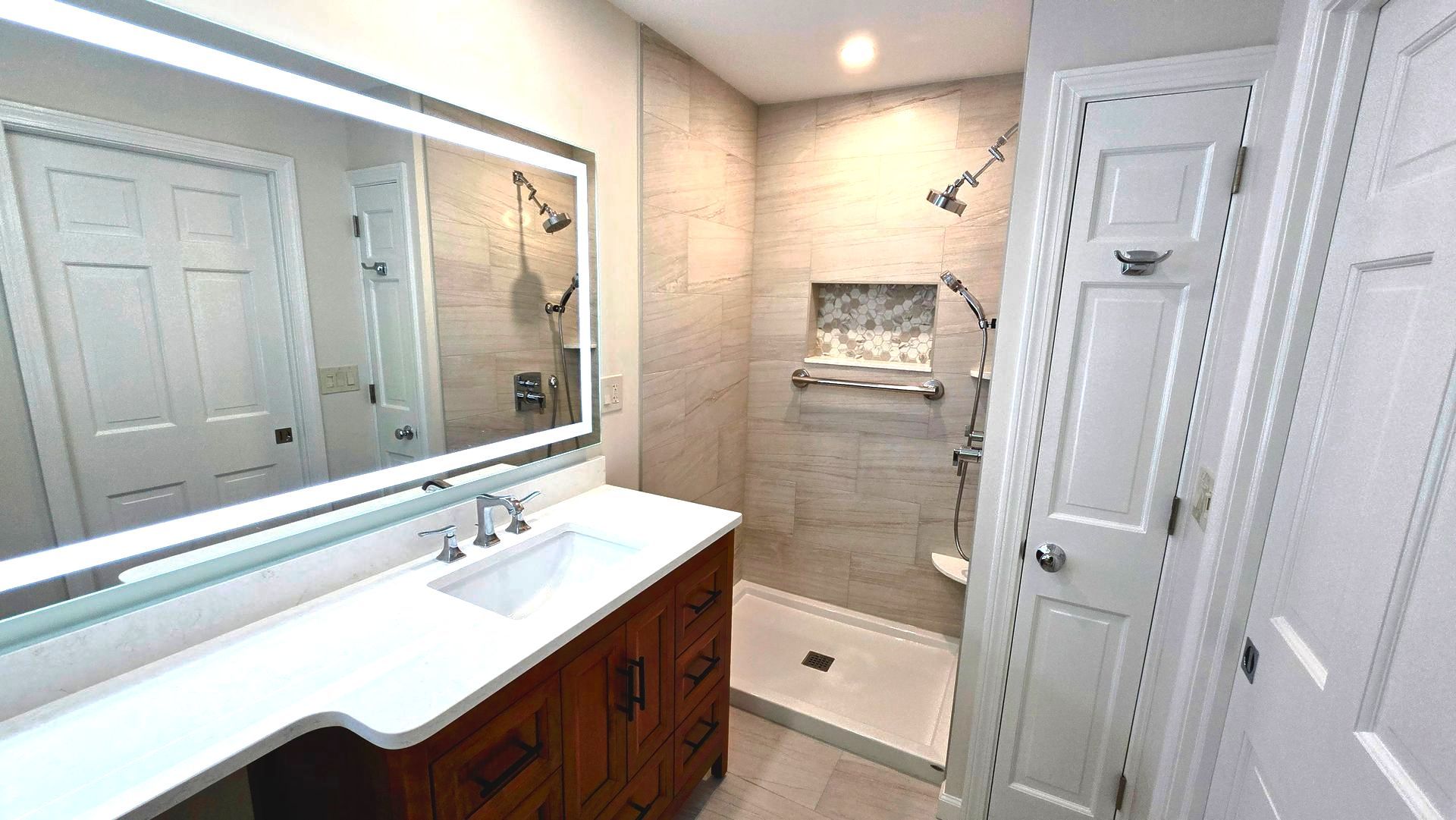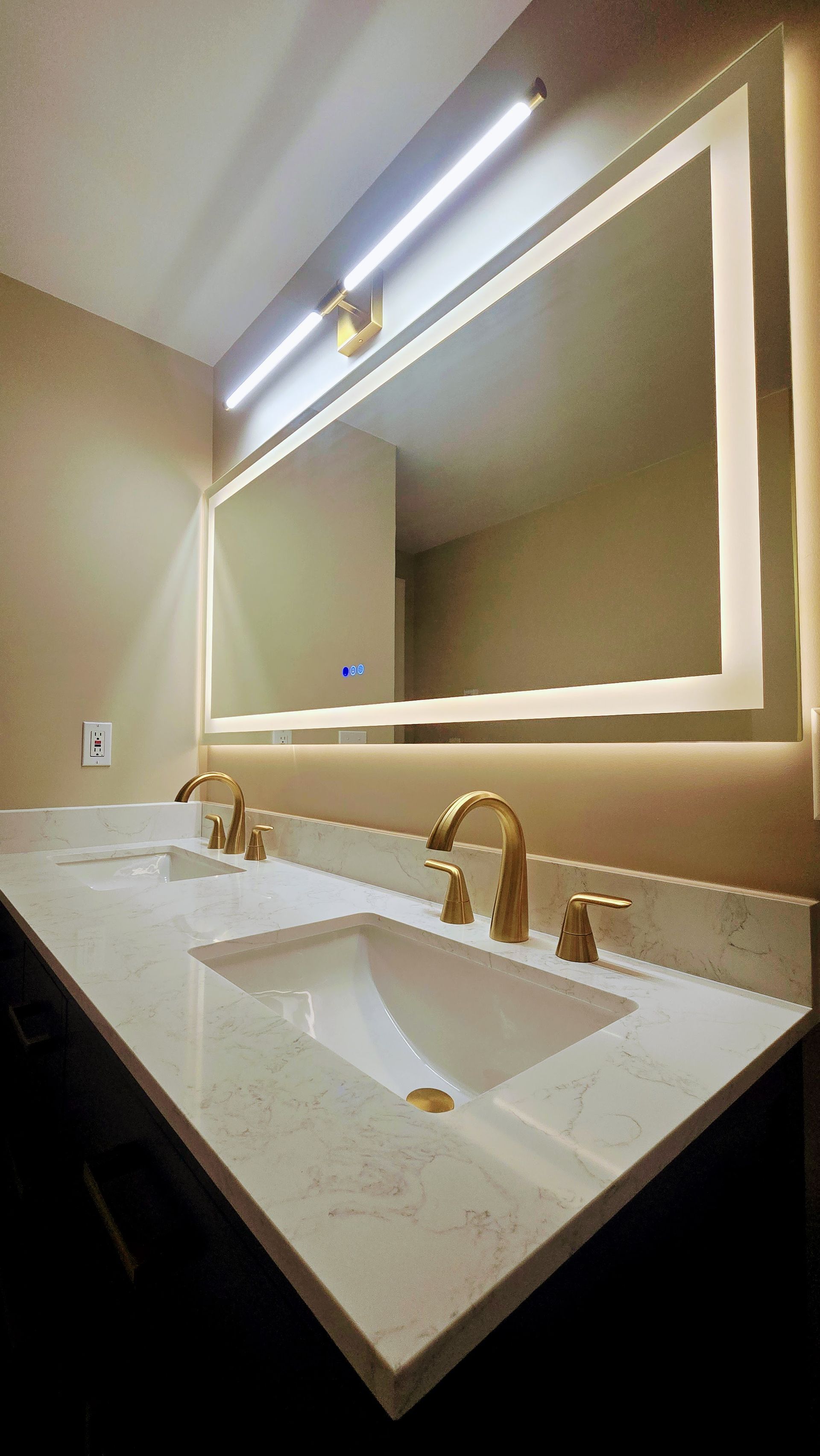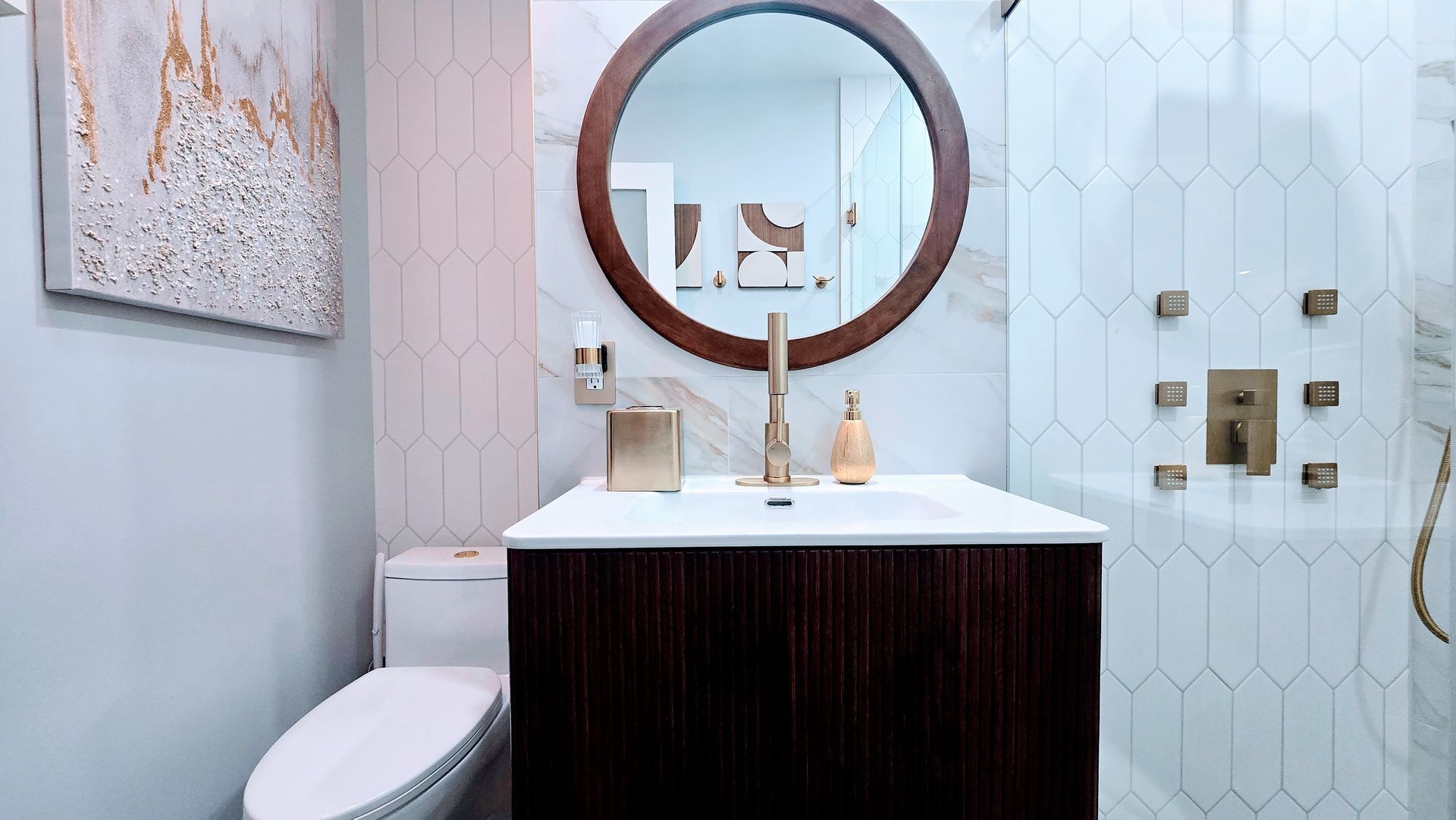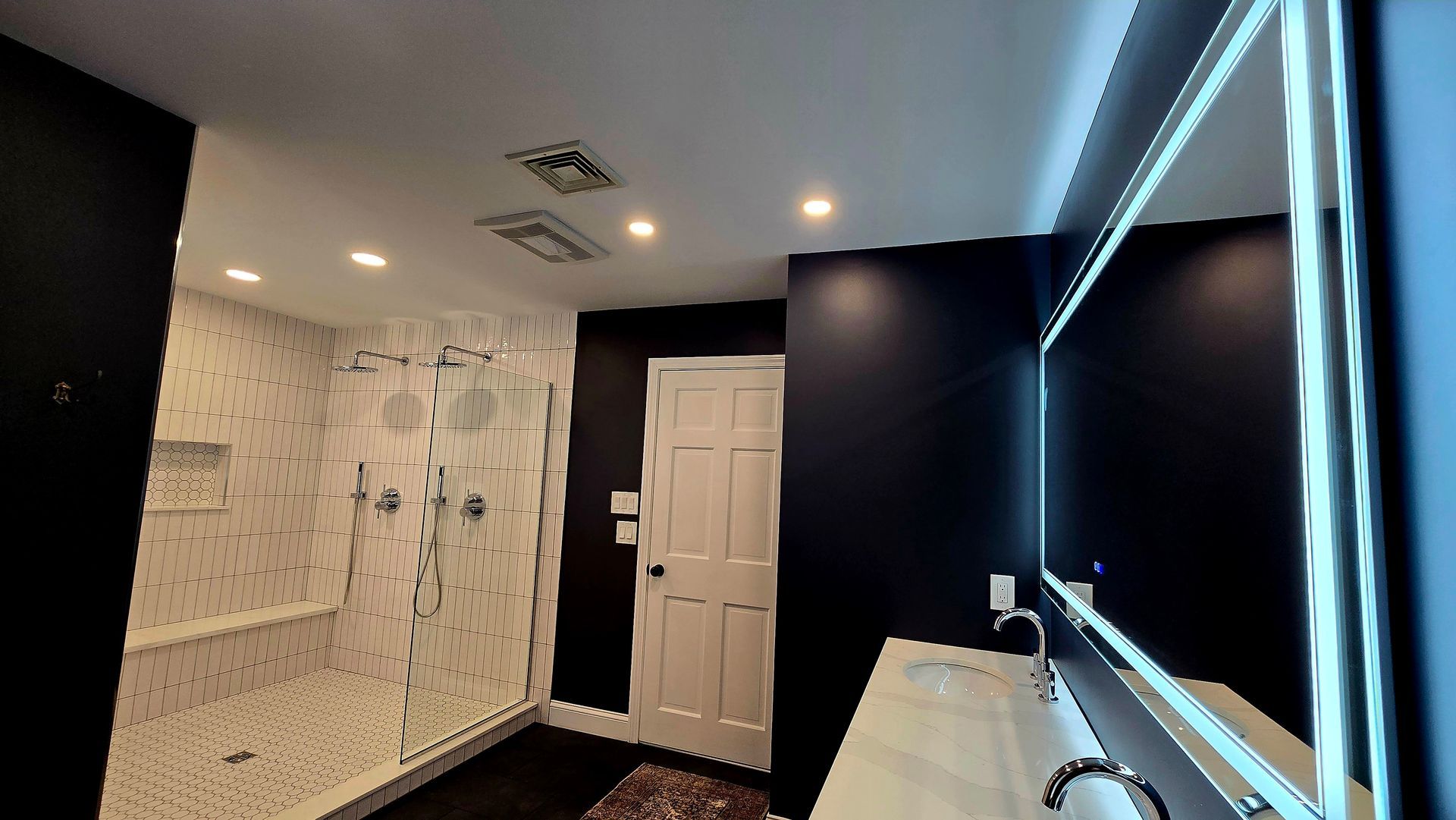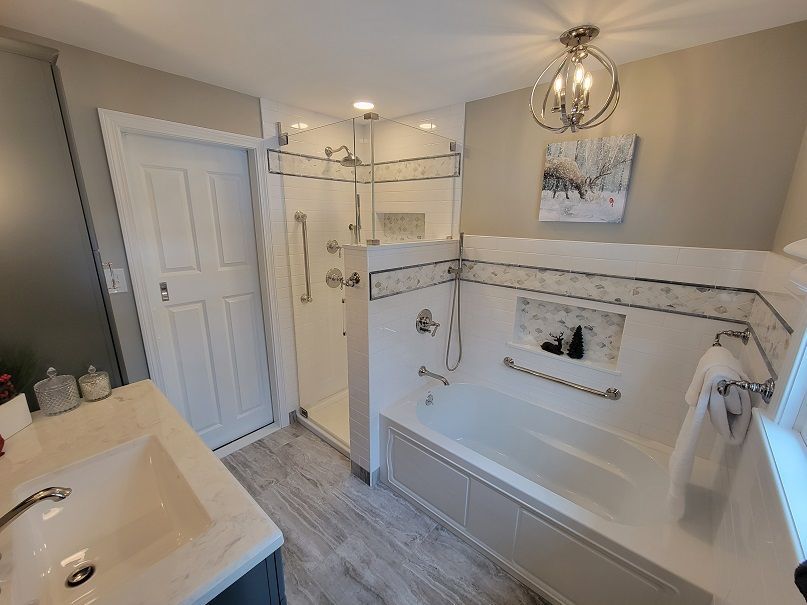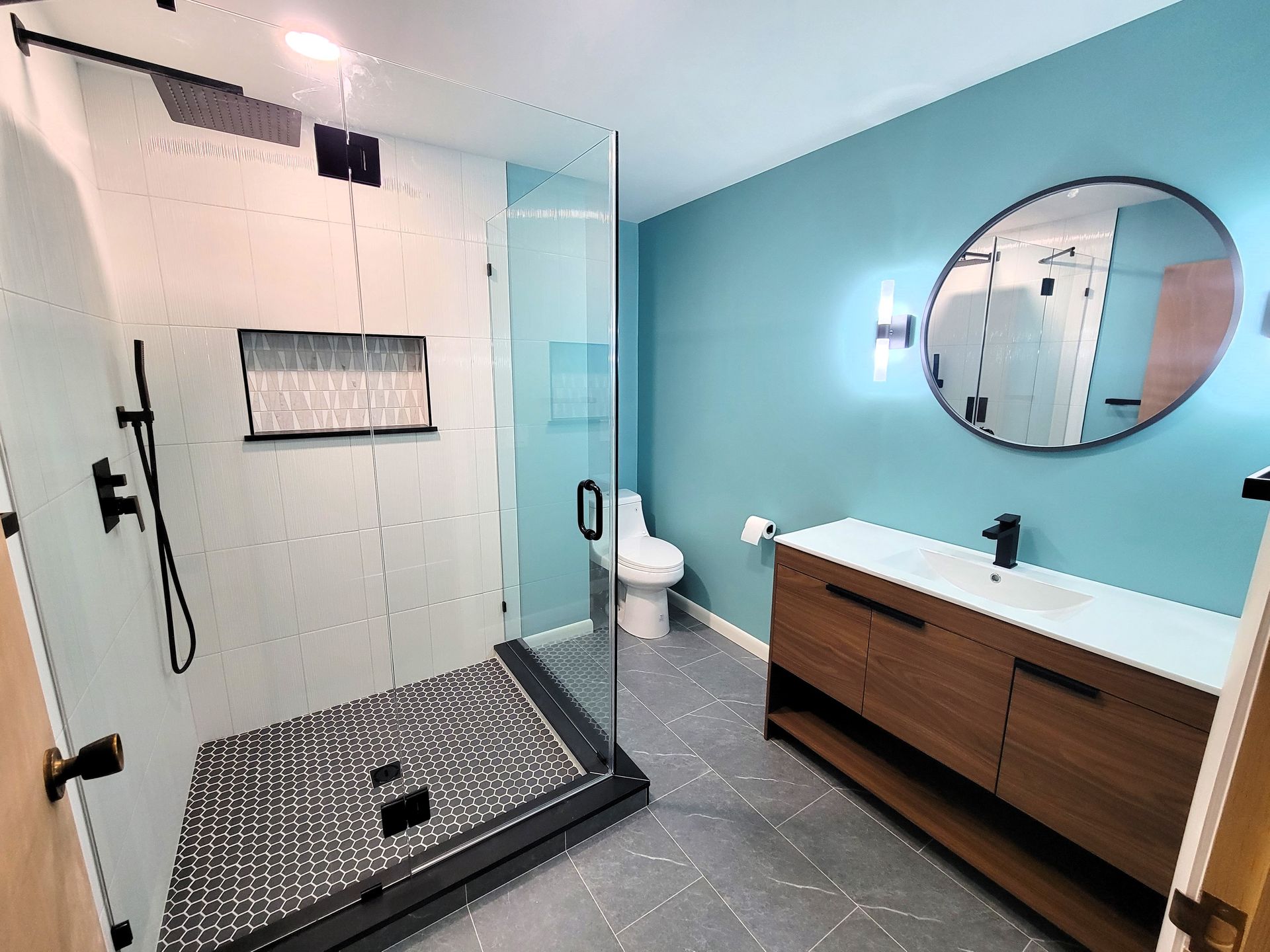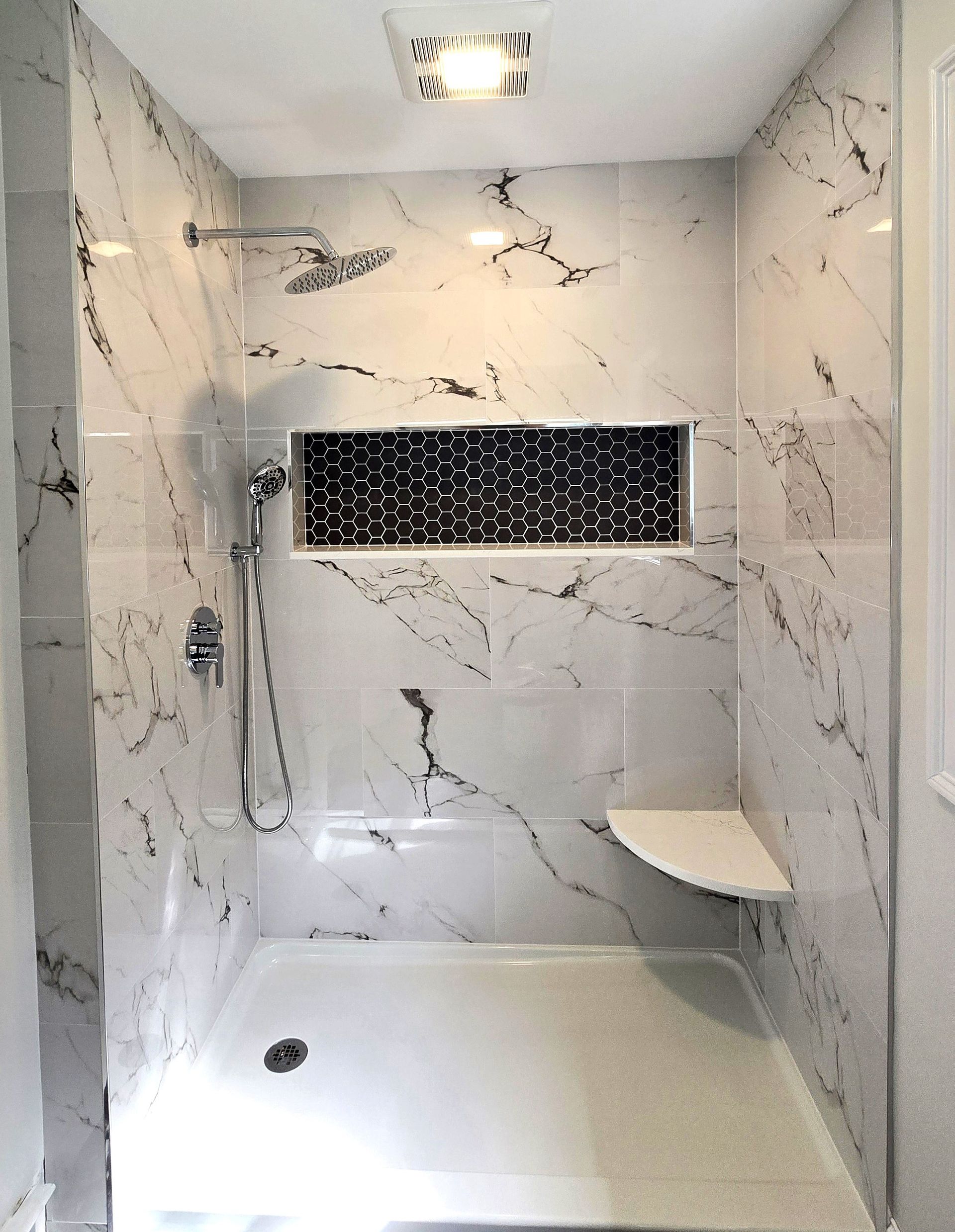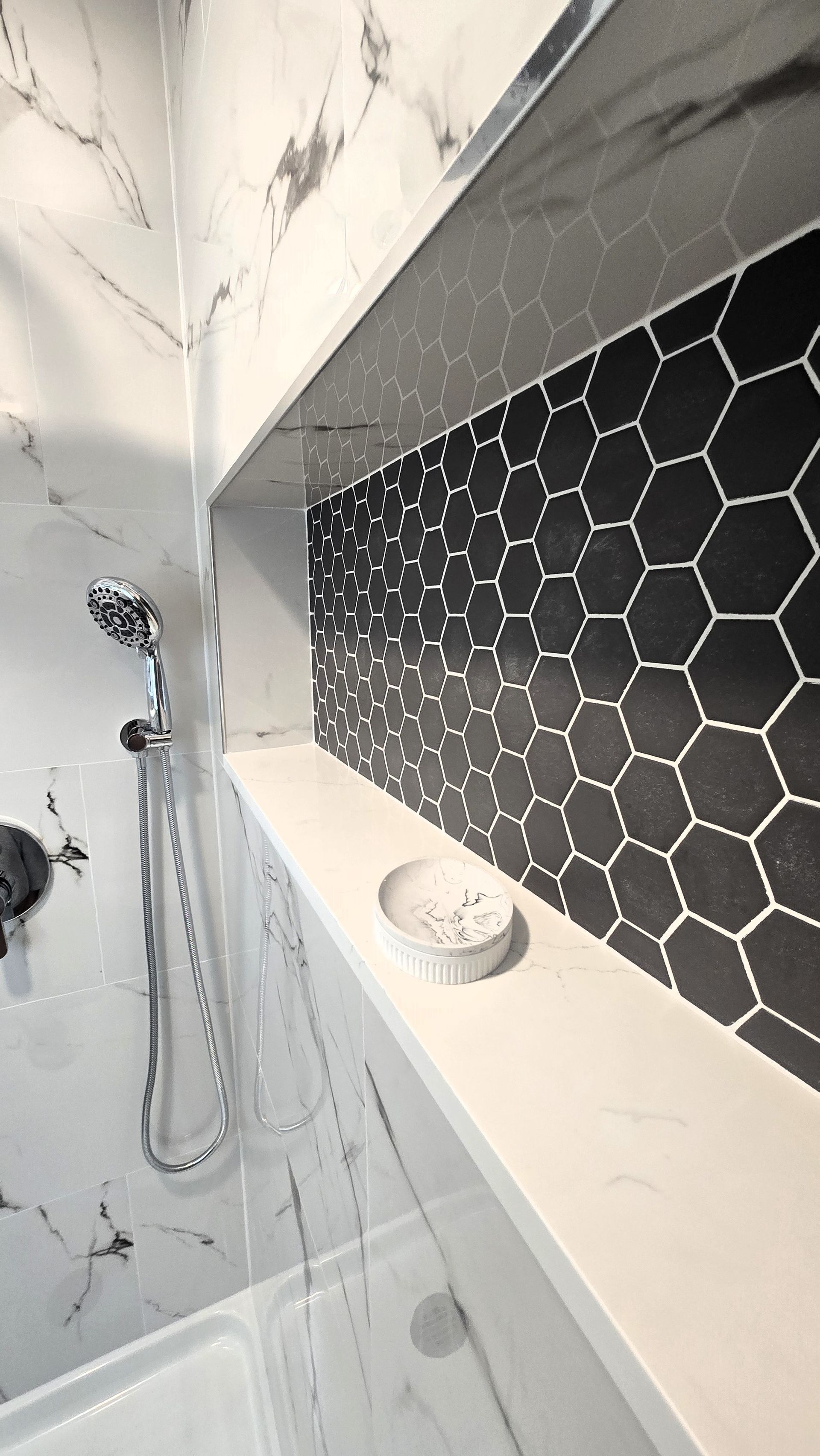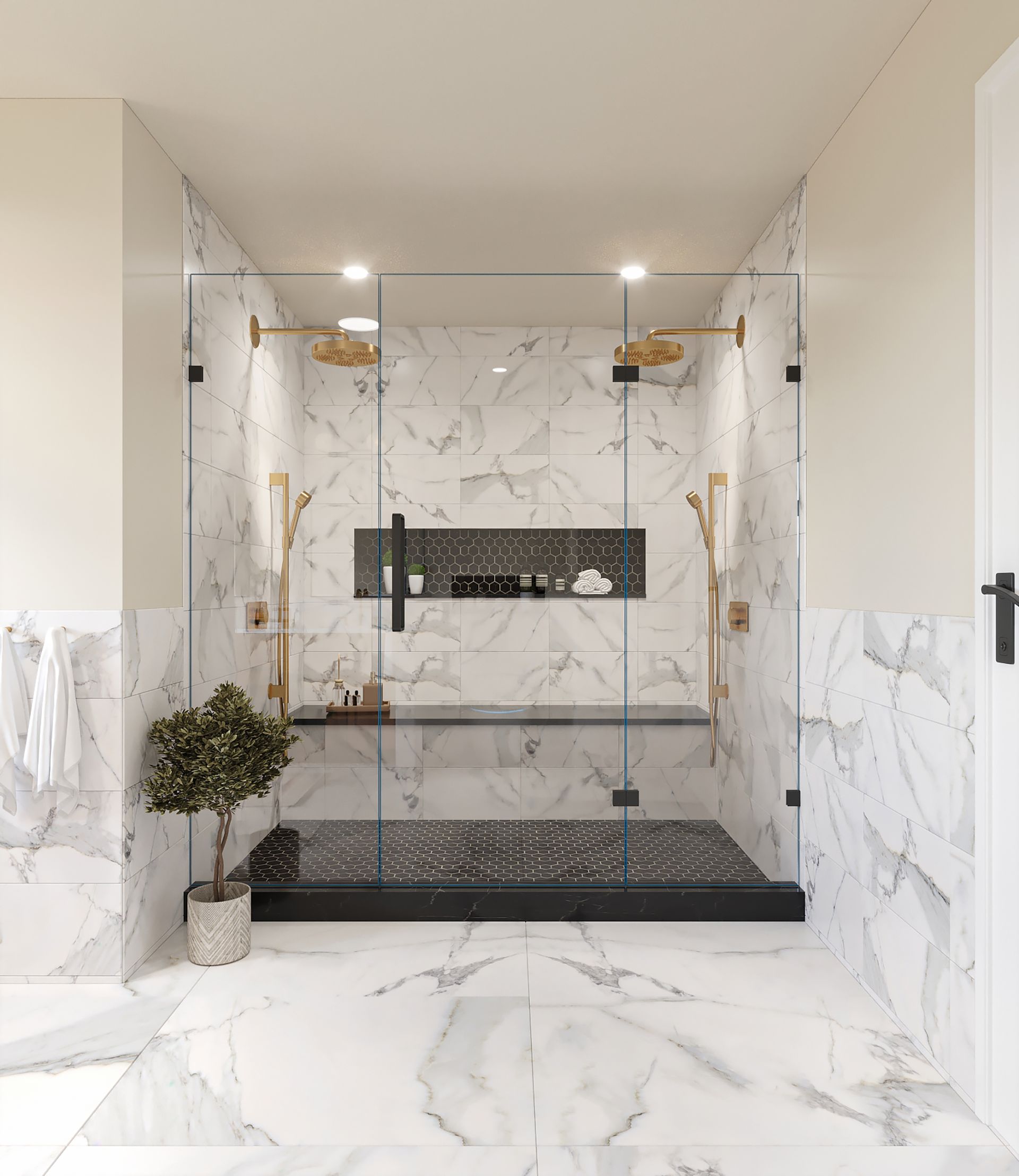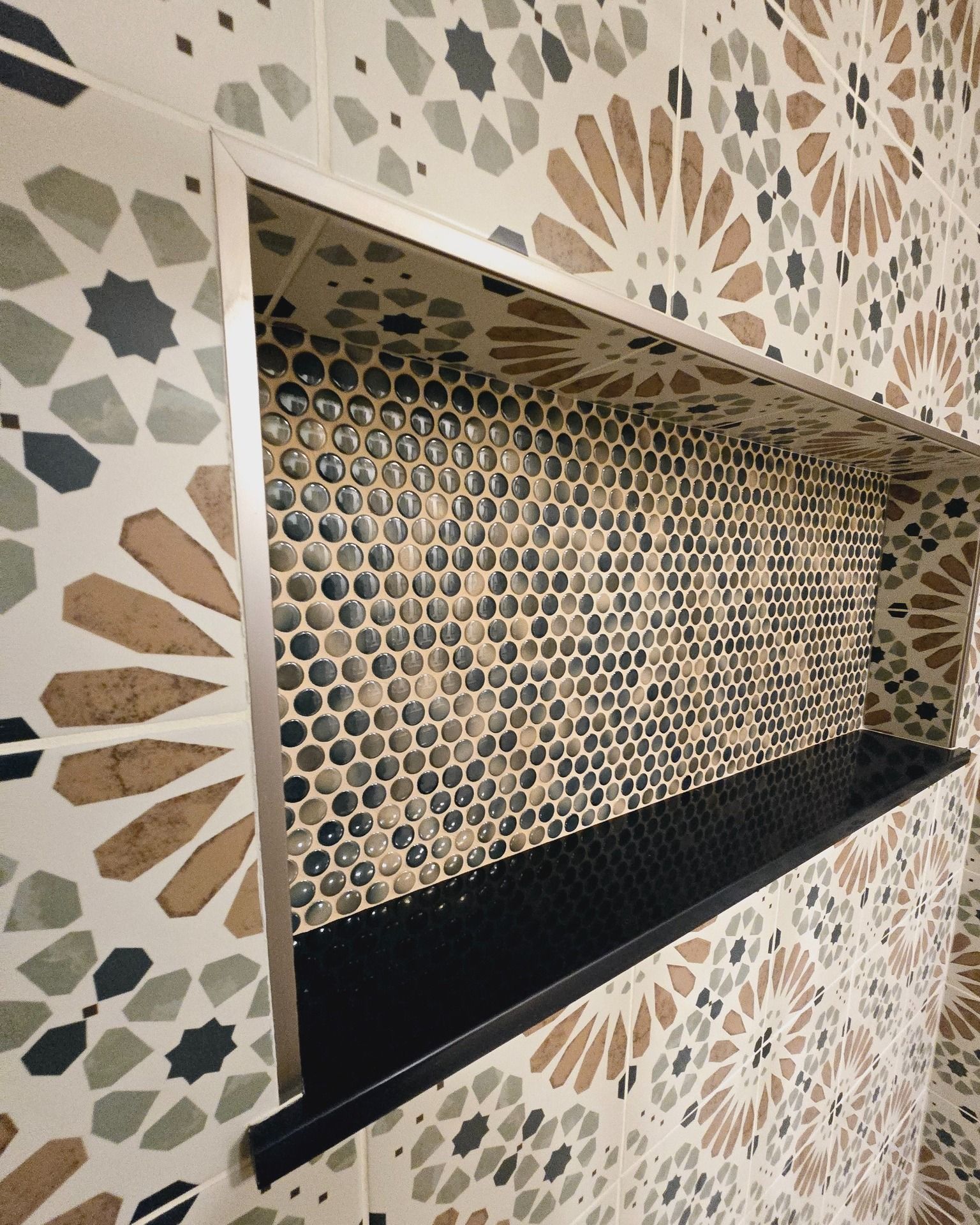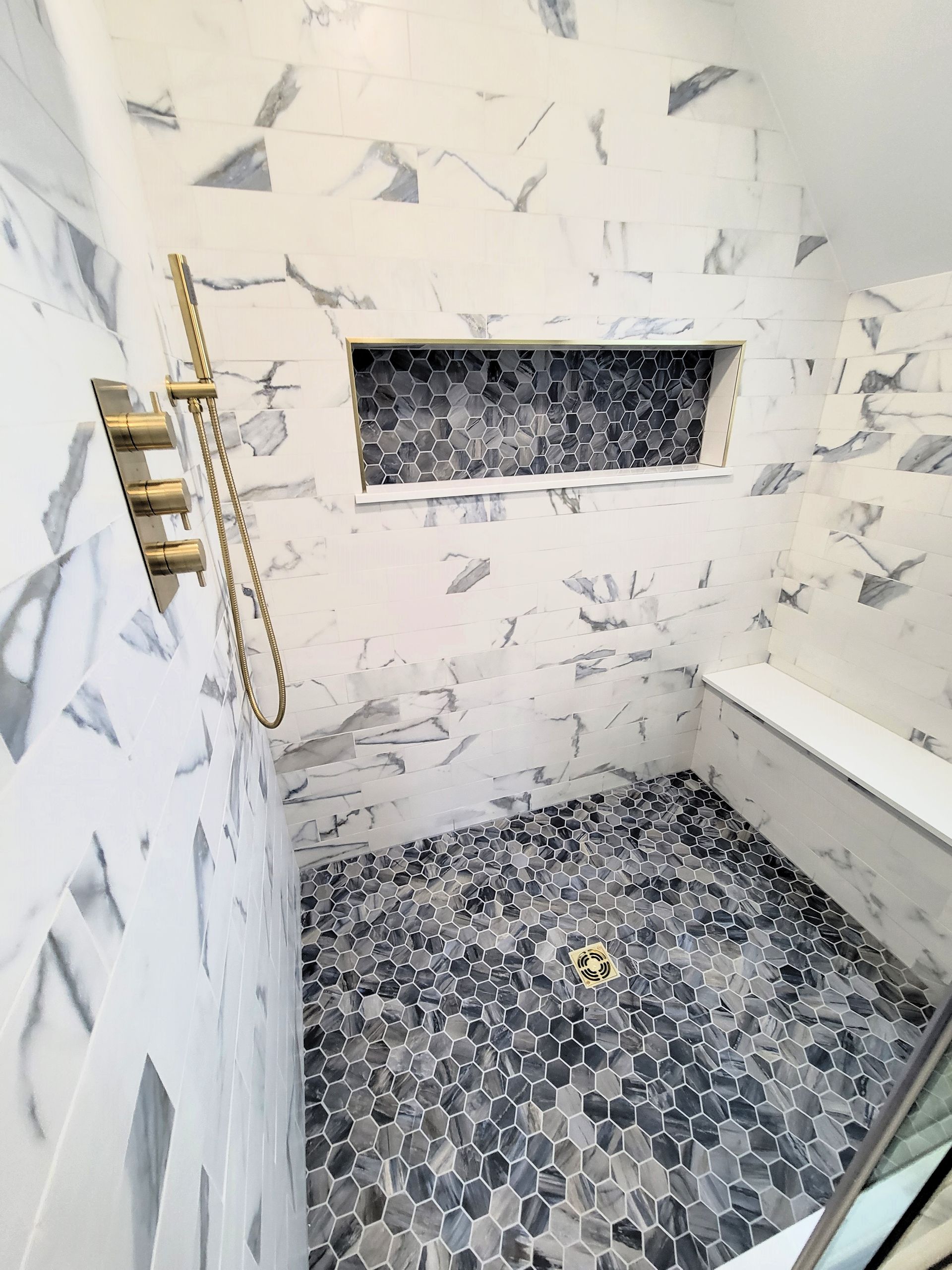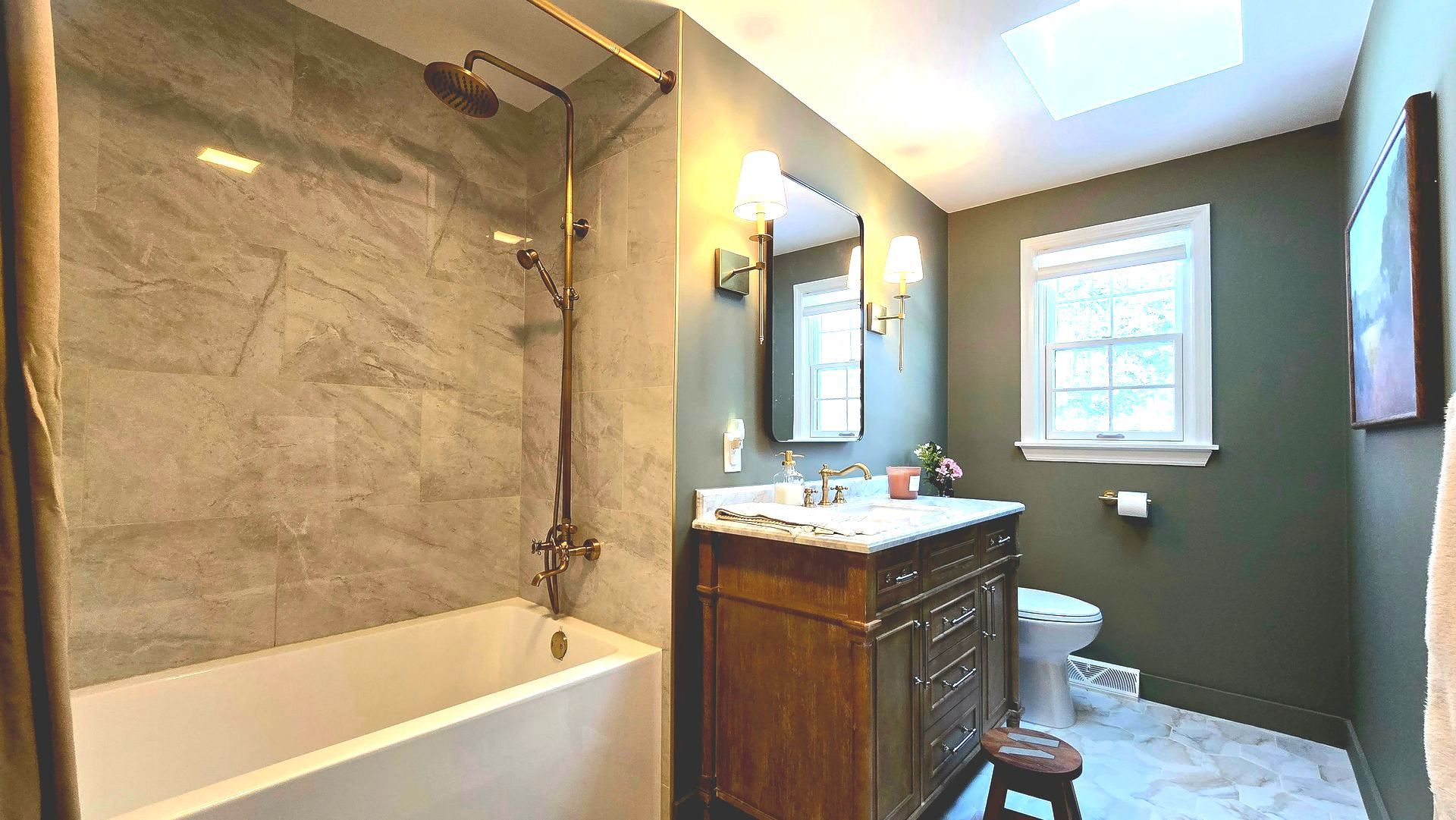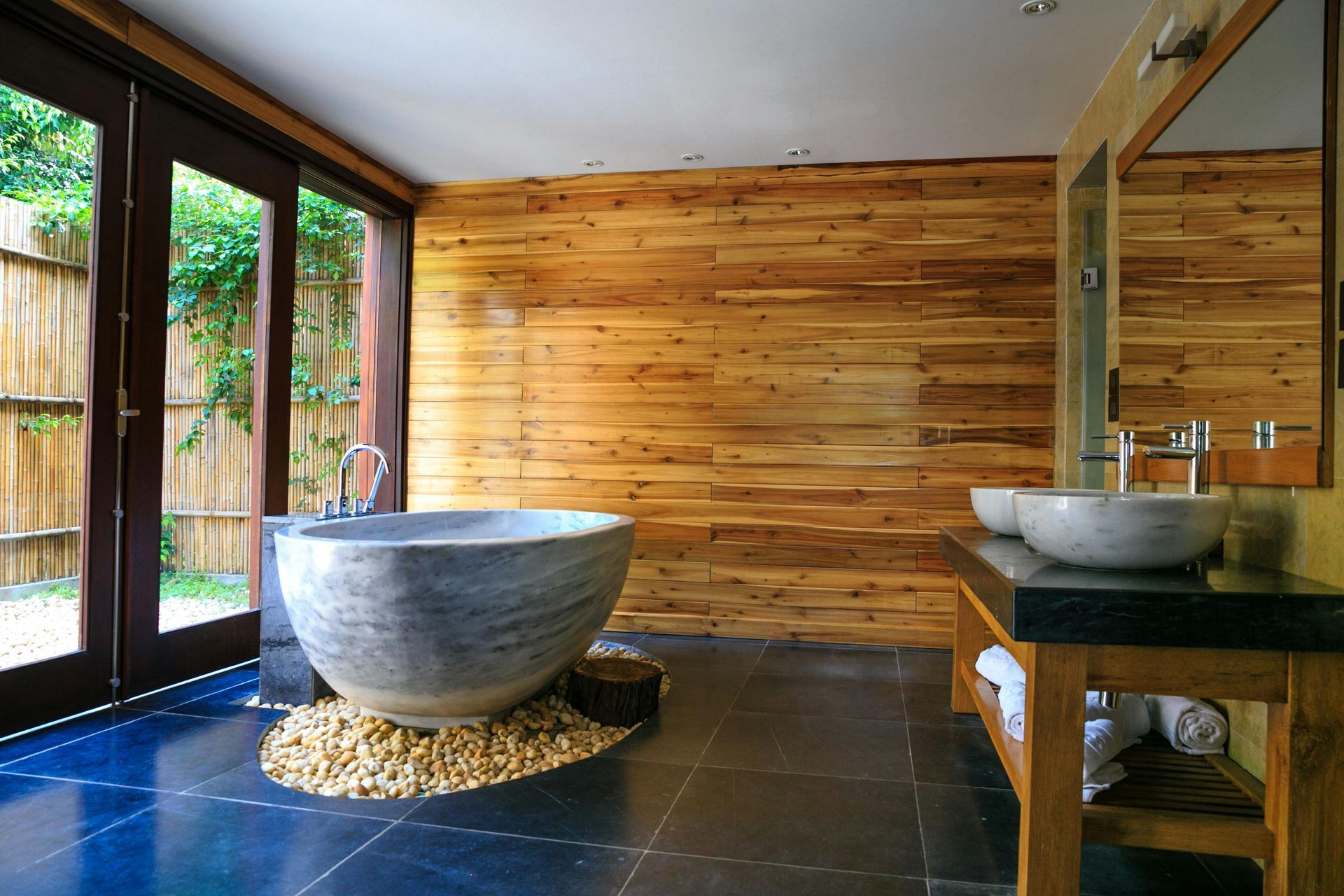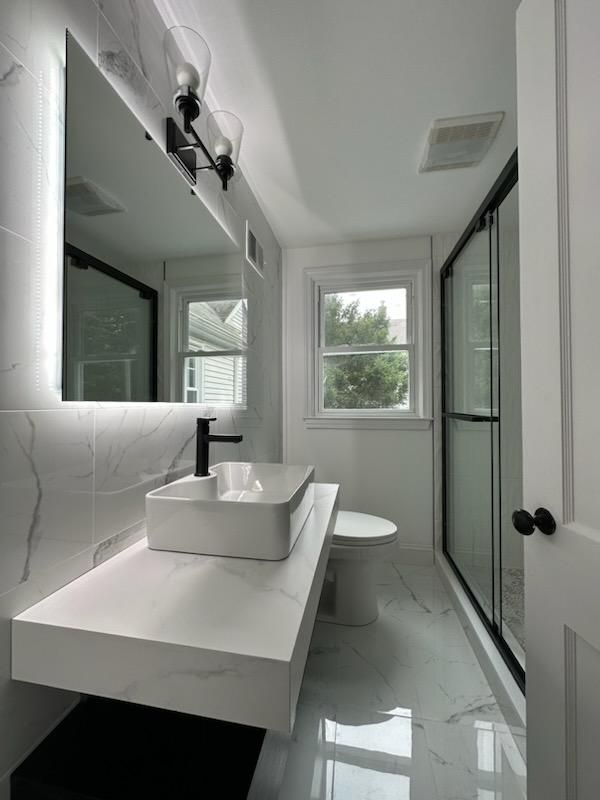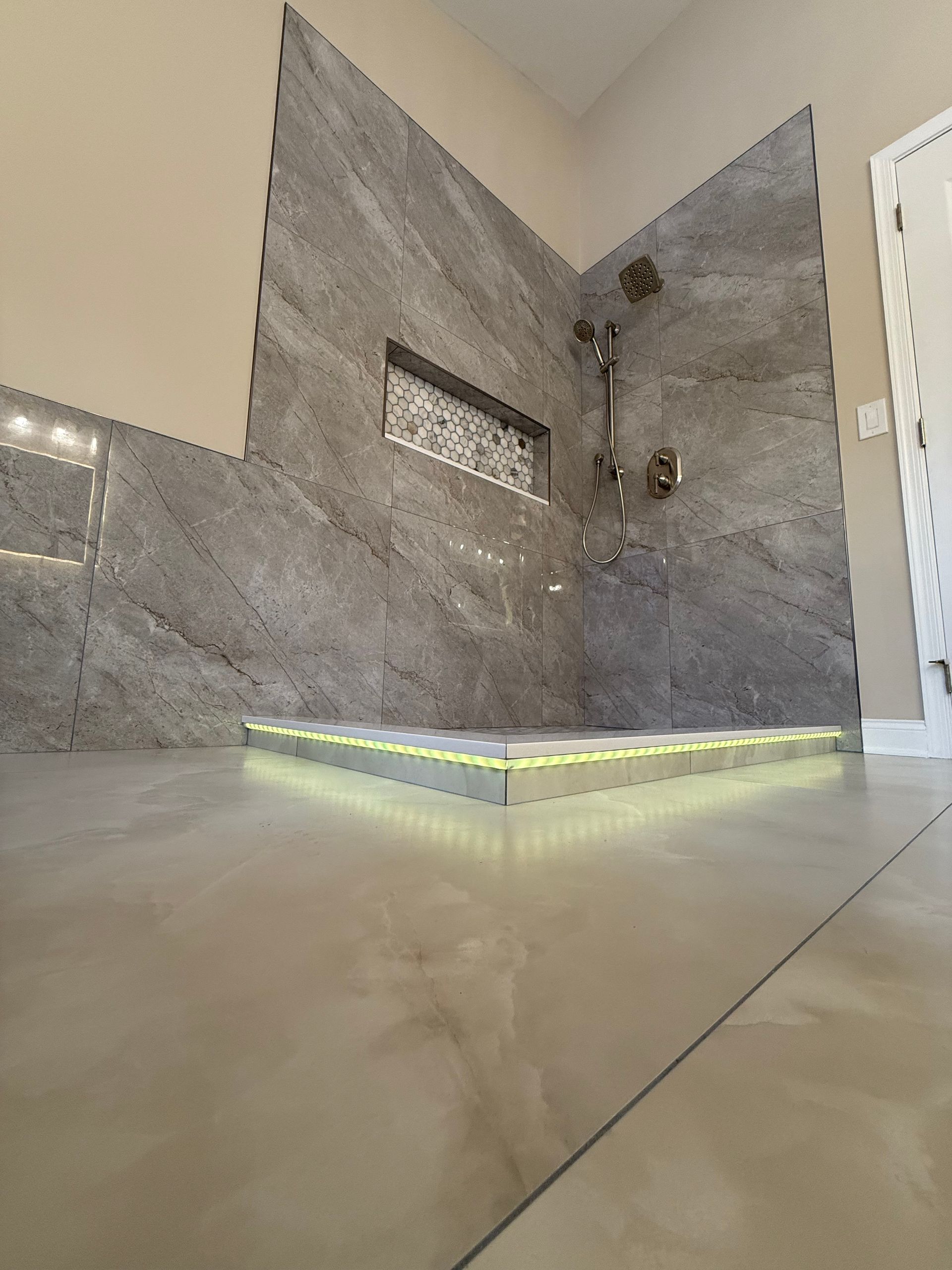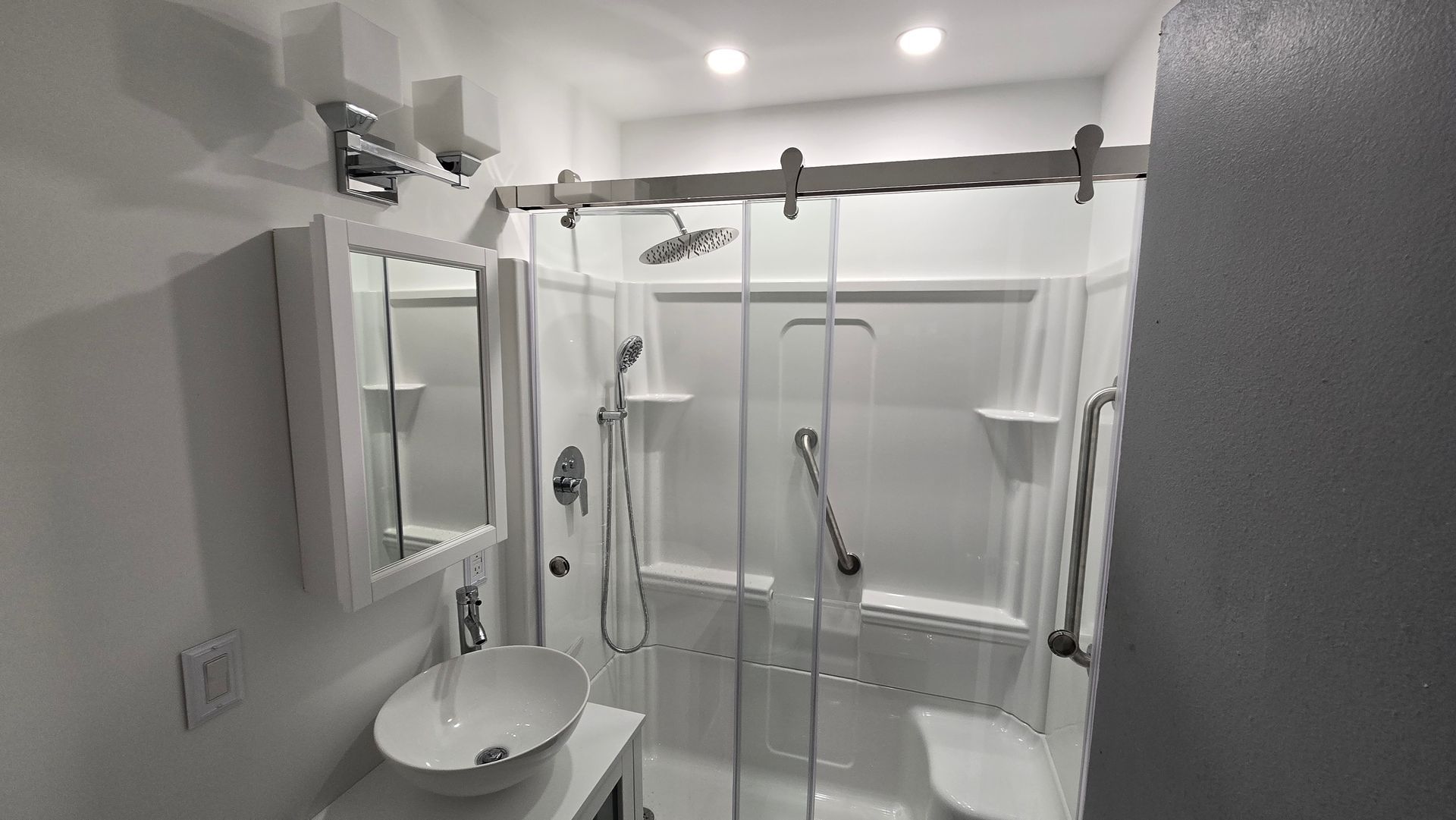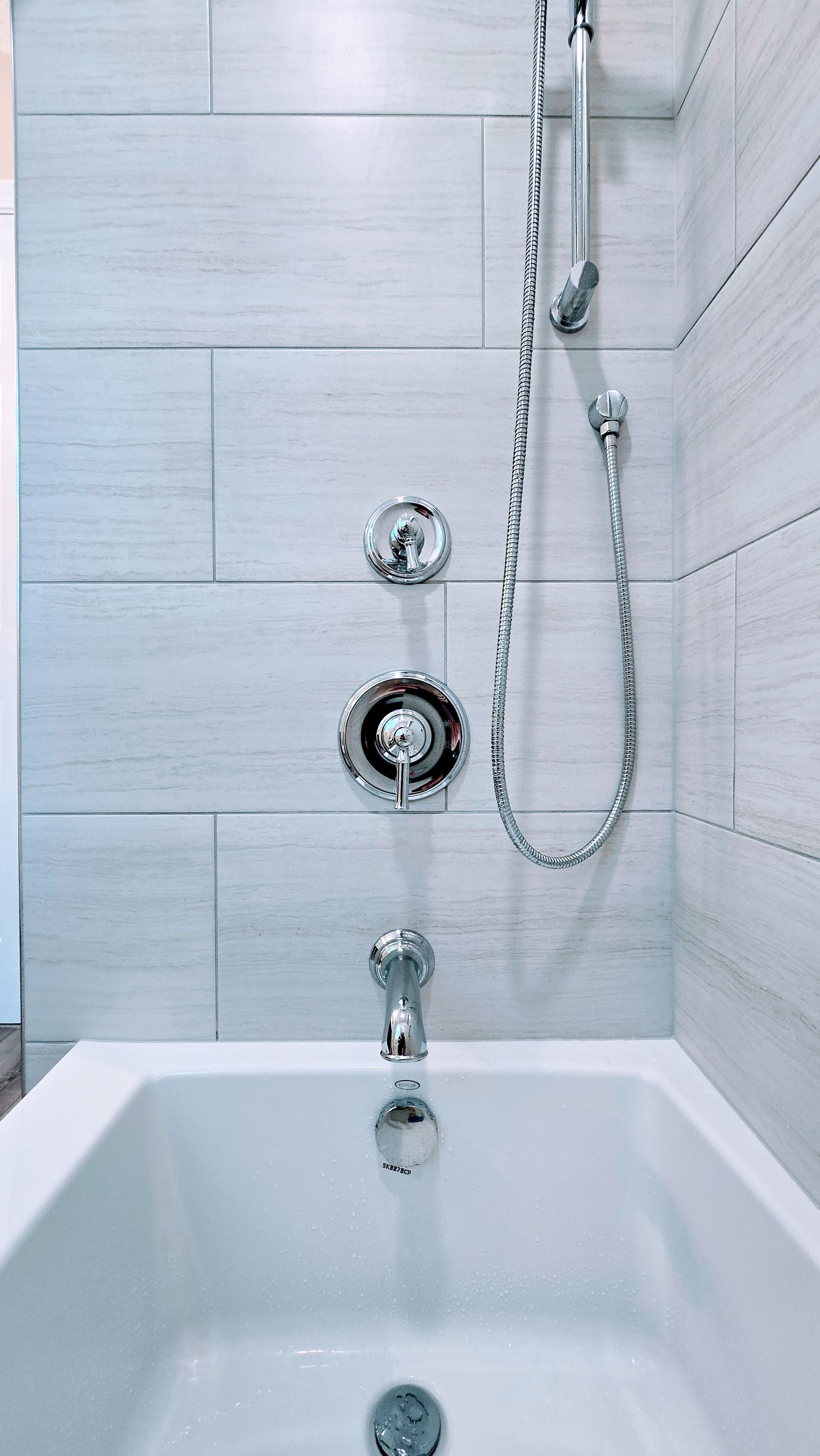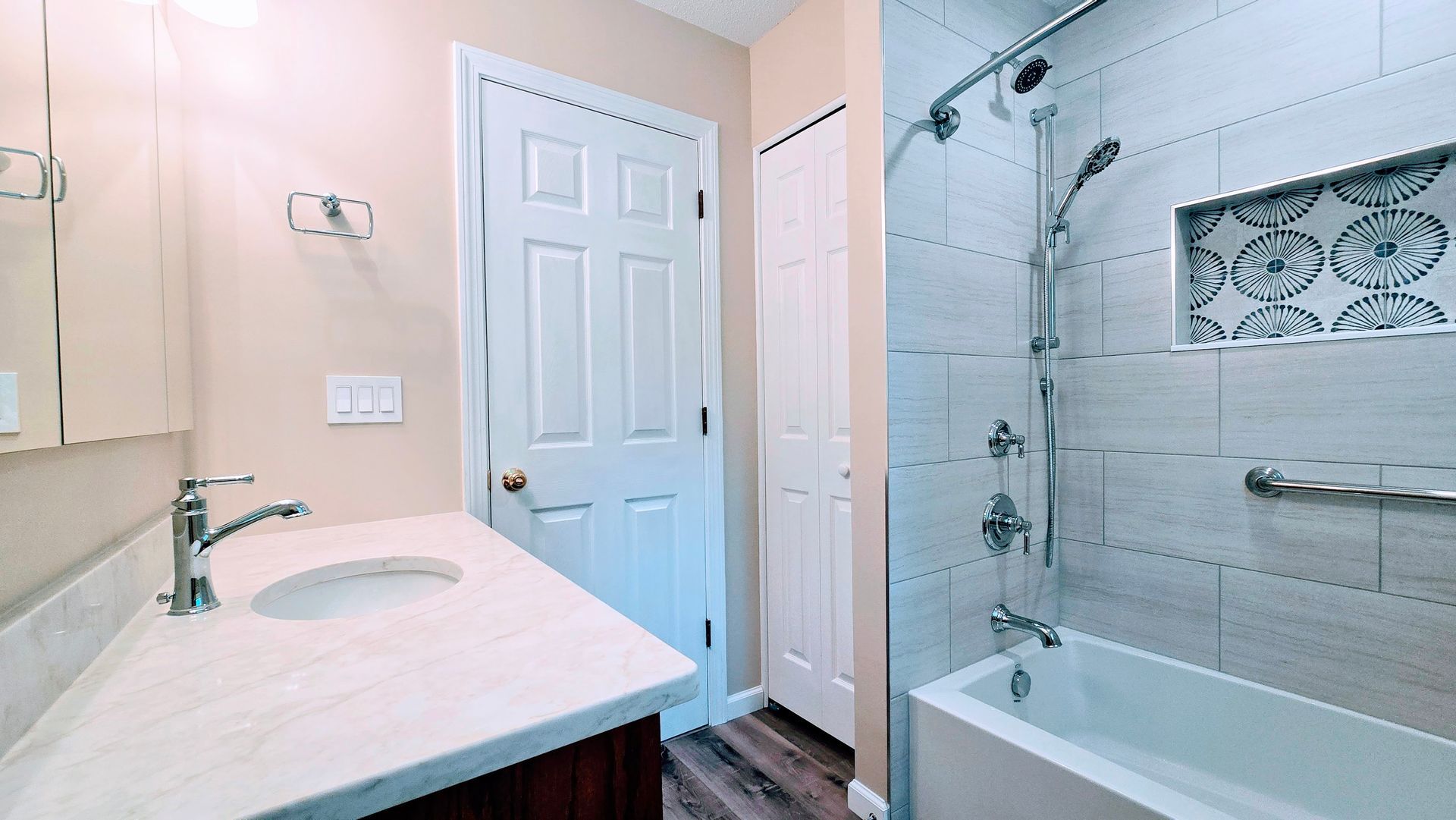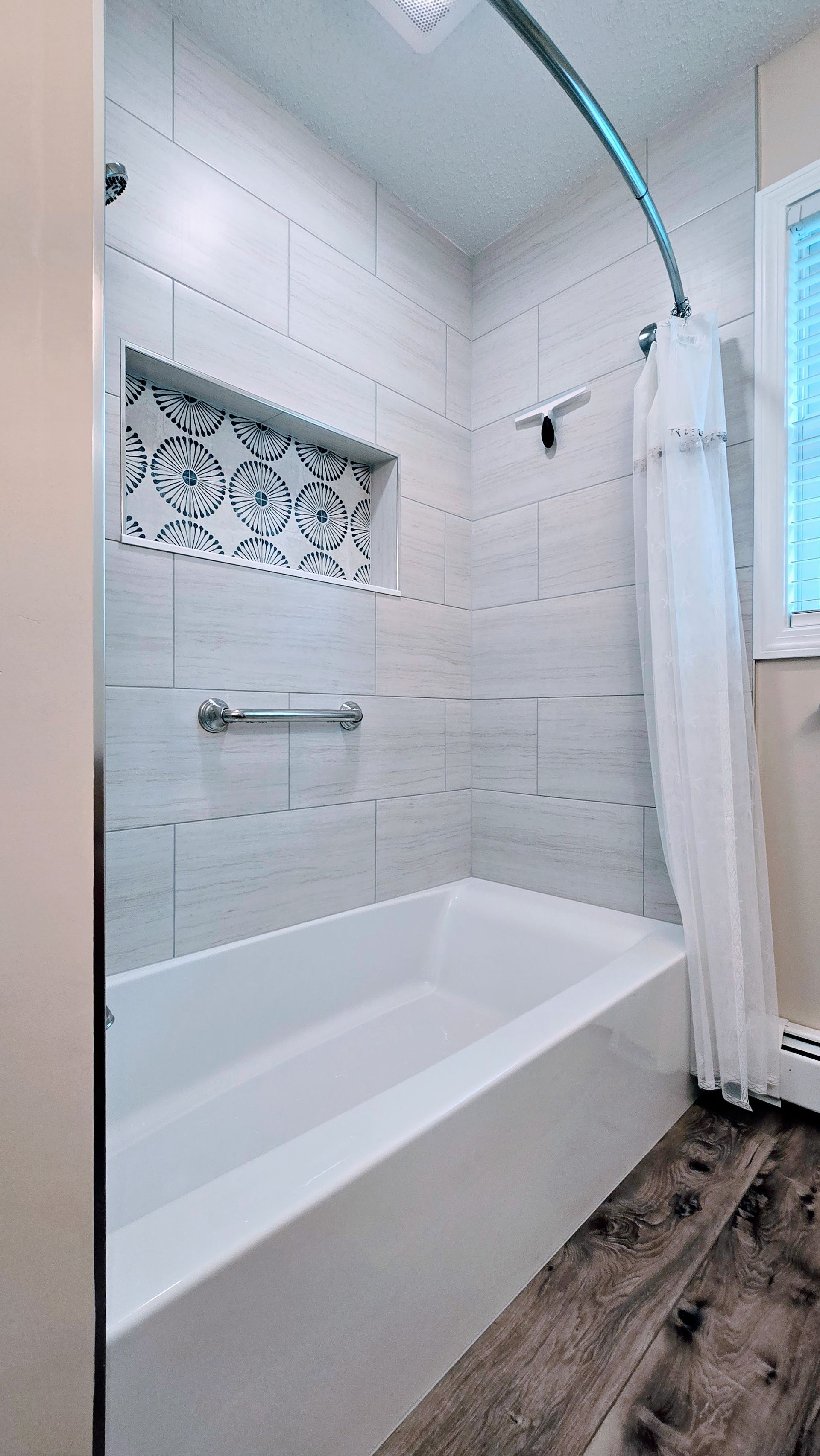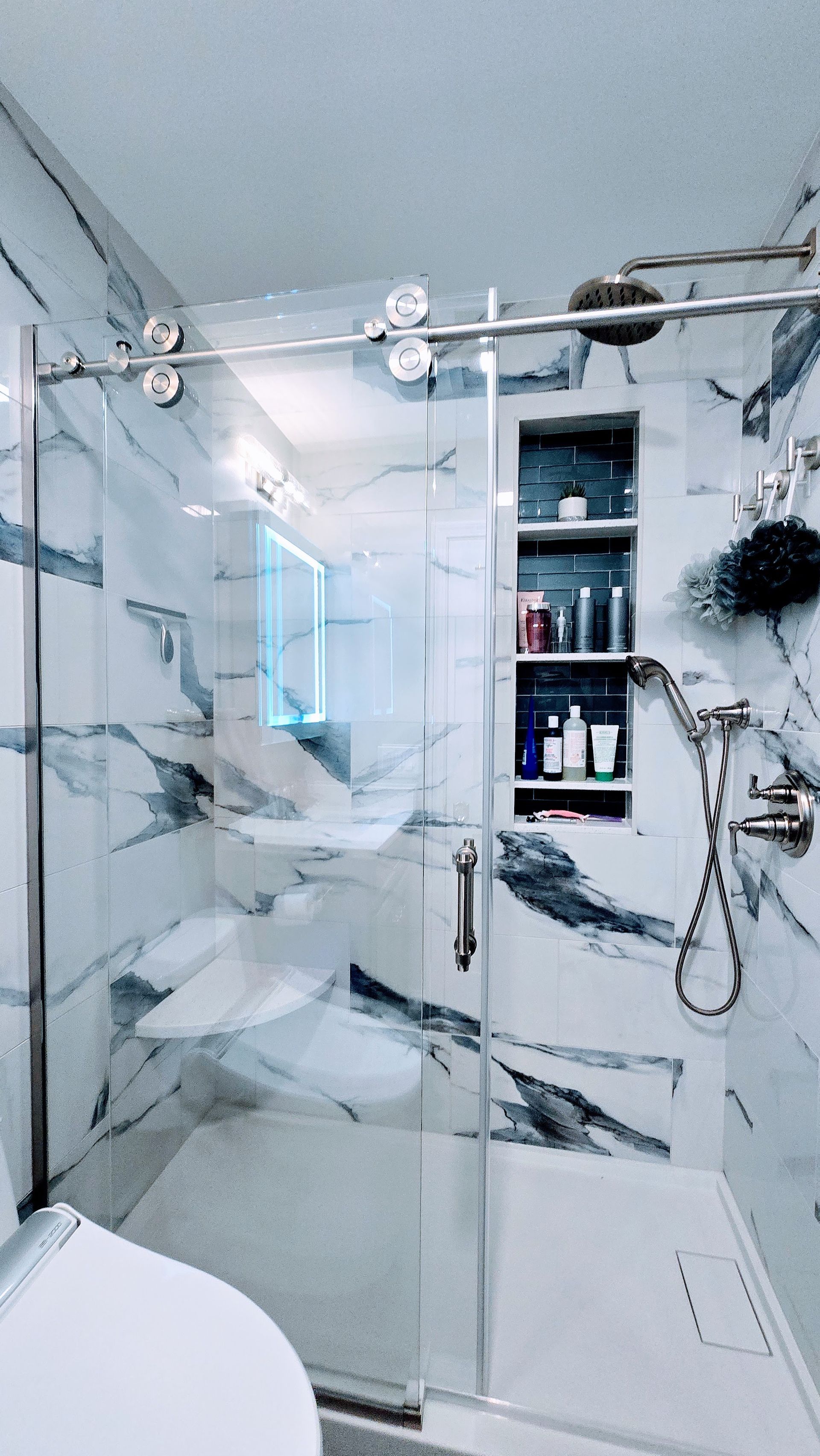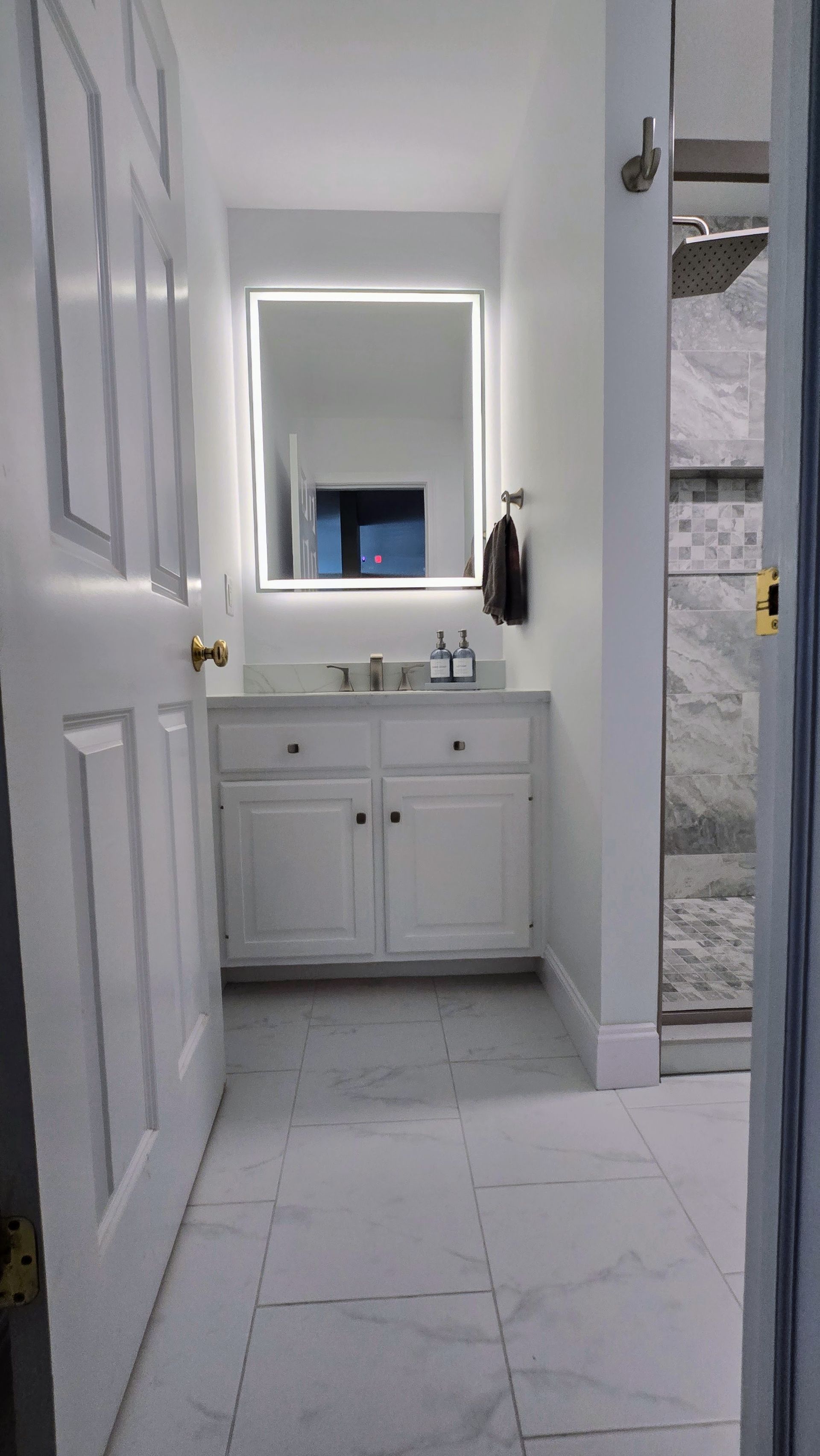The Ultimate Connecticut Bathroom Remodel Cost Guide: Your 2025 Budget Blueprint
The Ultimate Connecticut Bathroom Remodel Cost Guide: Your 2025 Budget Blueprint
Introduction: Planning Your Perfect Connecticut Bathroom Remodel
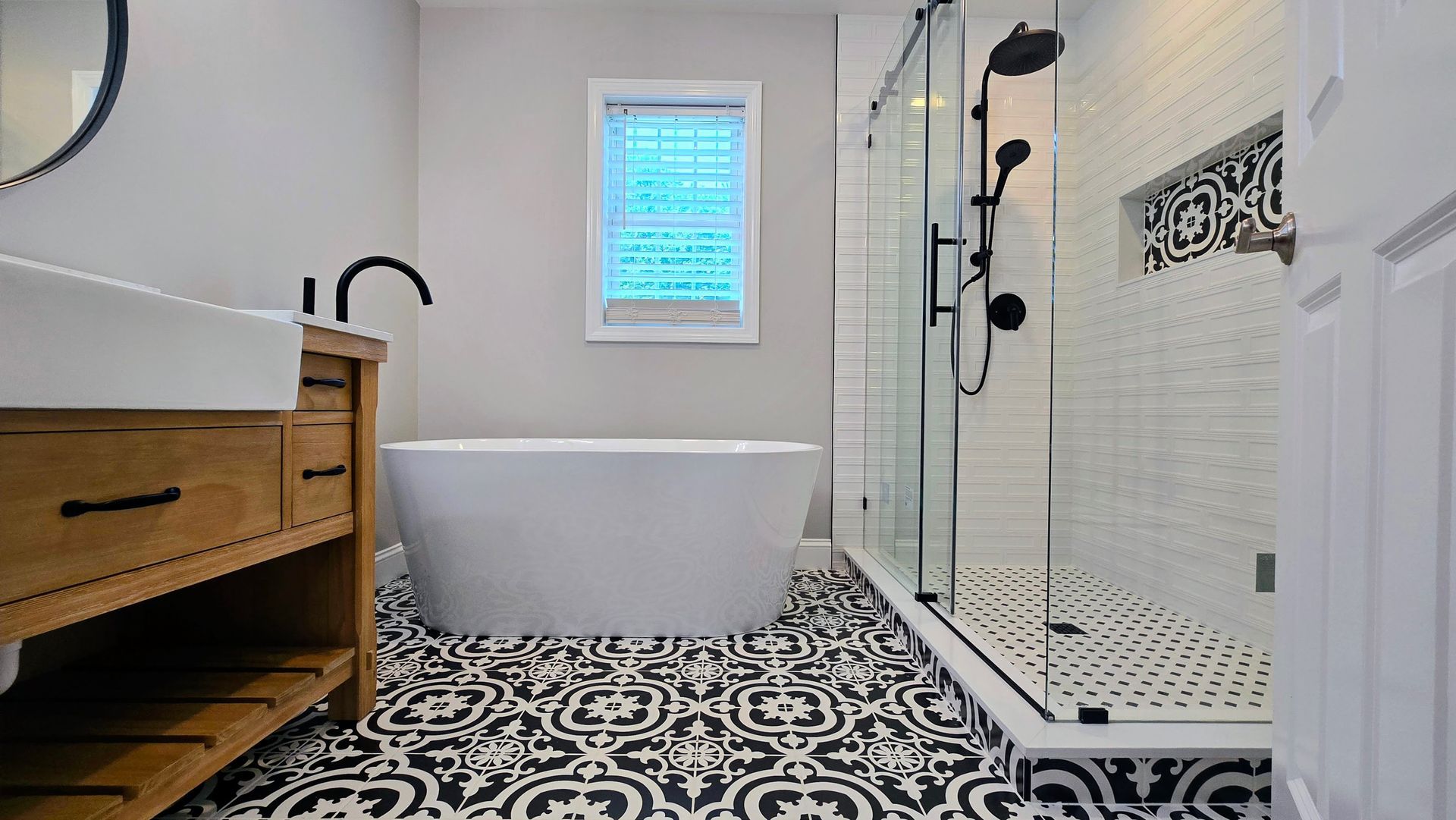
For many Connecticut homeowners, the dream of a bathroom remodel—transforming a dated, functional space into a serene, spa-like retreat—is often accompanied by a significant question: What will it actually cost? In a state known for its high quality of life and correspondingly high cost of living, the numbers seen on home improvement shows or in national magazines can be profoundly misleading. The reality of budgeting for a renovation in towns from Fairfield to Hartford requires a localized, data-driven approach.
This guide serves as that definitive resource. It acknowledges the unique financial landscape of remodeling in Connecticut and presents a solution: a transparent, meticulously researched cost projection specifically for projects planned for the end of 2025. The figures and analyses presented here are not generic estimates. They are the result of a deep dive into current local market data, regional economic forecasts, and a thorough analysis of material and labor trends impacting the Northeast. This guide is designed to empower homeowners with the knowledge to build a realistic budget, make informed decisions, and understand the true value of investing in a professionally executed bathroom remodel.
As local experts in the Connecticut market, the team at First Choice Bathroom Remodeling understands the nuances of these projects. This guide is a reflection of that expertise, created to demystify the process and provide the clarity needed to move from dream to reality. Renovating a bathroom is more than just a cosmetic upgrade; it is a smart investment that can significantly elevate the value and utility of a home. This handbook will lead homeowners through every essential cost consideration, offering an in-depth analysis of financial outlays and equipping them with the strategies needed to plan a successful and satisfying bathroom remodel.
Section 1: The Bottom Line: Projected 2025 Bathroom Remodel Costs in Connecticut
To plan effectively, it is crucial to start with a realistic understanding of the total investment. This section provides clear, projected cost ranges for the end of 2025, setting accurate expectations from the outset and explaining the factors that make Connecticut a unique market.
The Connecticut Premium: Why Local Costs Differ
The first step in budgeting for a Connecticut bathroom remodel is to set aside national averages. While the national average cost for a mid-range bathroom remodel hovers around $12,121 , data specific to Connecticut reveals a significantly higher price point. A complete bathroom remodel in the state typically averages between $15,000 and $30,000. This "Connecticut Premium" is not arbitrary; it is driven by tangible economic factors, most notably the state's higher-than-average labor rates and overall cost of living. Skilled, licensed tradespeople—plumbers, electricians, and tile setters—command higher wages, which directly impacts the bottom line of any significant renovation project.
Projecting to Late 2025: Our Methodology
The cost figures in this guide are not static; they are forward-looking projections for the end of 2025. This forecast is based on a careful analysis of key economic indicators. The Consumer Price Index (CPI) for the Northeast region, a measure of inflation, showed a 3.2% annual increase as of mid-2025. Critically, the housing component of that index, which includes services related to homeownership, rose at an even faster rate of 4.9%.
Furthermore, construction-specific data reveals its own inflationary pressures. The Turner Construction Cost Index has shown consistent quarterly increases throughout 2024 and into 2025, indicating that the fundamental cost of building is rising. This is compounded by ongoing volatility in the construction market. More than 80% of contractors nationally have recently received notices of price increases from suppliers, and a persistent labor shortage, with over 300,000 unfilled construction positions, continues to drive up labor costs. By synthesizing these local inflation metrics with national construction industry trends, this guide provides a realistic financial snapshot for a project commencing in late 2025.
Defining the Tiers: From Facelift to Full Gut Renovation
To help homeowners identify where their vision fits, projects are categorized into three distinct tiers. These tiers are defined by the scope of work, which is the single most significant factor in determining the final cost.
- The Budget-Friendly Facelift (Projected End-2025: $18,000 - $28,000): This level of renovation focuses on cosmetic and surface-level improvements without altering the existing bathroom layout. It typically involves replacing the vanity, toilet, and light fixtures; painting the walls; and potentially installing new, budget-friendly flooring like luxury vinyl tile. Key cost-saving measures include using stock materials from big-box retailers and refinishing existing elements like a cast-iron tub where possible. The plumbing and electrical footprints remain unchanged. This scope aligns with "minor" or "budget" remodels, adjusted for Connecticut's higher baseline costs and projected inflation.
- The Mid-Range Renovation (Projected End-2025: $28,000 - $55,000): This is the most common type of full bathroom remodel. It involves a complete gut of the space down to the studs. Everything is new: a new tub or shower system, toilet, vanity with a quality countertop (like quartz), tile flooring, lighting, and ventilation. This tier uses a mix of good-quality stock and semi-custom materials. While the general layout is maintained to control plumbing costs, minor adjustments may be made. This cost range is derived from Connecticut-specific data for a "complete renovation" and mid-grade projects in high-cost areas like Fairfield County, projected forward to account for market trends.
- The High-End Luxury Retreat (Projected End-2025: $55,000+): This tier represents a comprehensive transformation. It often involves expanding the bathroom's square footage by moving walls, which requires significant structural, plumbing, and electrical reconfiguration. Materials are premium and often custom, such as natural stone tiles, custom-built cabinetry, and high-end fixtures from designer brands. Luxury features like a steam shower, heated flooring, a freestanding soaking tub, and smart home technology are common. For these extensive projects, costs can easily surpass $80,000.
It is important to recognize that the financial leap from a "Budget-Friendly Facelift" to a "Mid-Range Renovation" in Connecticut is more of a chasm than a step. While national guides might suggest a smoother cost progression, the reality in this market is different. The primary reason for this significant jump is the shift in labor complexity. A cosmetic facelift can often be completed by a general contractor or skilled handyperson. However, a full gut renovation legally and practically requires a coordinated team of licensed and insured specialists: a plumber to install the new shower valve and set the toilet, an electrician to wire the new fan and lighting to code, and an expert tile setter for the floor and shower walls. In Connecticut, where the hourly rates for these tradespeople range from $50 to $150 or more, the cost of this essential, specialized labor becomes a dominant budget item. This "labor cliff" is a critical feature of the local market that homeowners must anticipate to avoid significant budget shock.
Section 2: Anatomy of a Remodel Budget: A Detailed 2025 Connecticut Cost Breakdown
Understanding the total projected cost is the first step. The second is dissecting that total to see where every dollar goes. A typical mid-range bathroom remodel budget in Connecticut is heavily weighted toward labor, a key differentiator from national averages. While materials and fixtures are significant, the cost of skilled craftsmanship is the largest single component. A representative budget allocation might look like this: Labor (50%), Cabinetry & Countertops (15%), Fixtures (15%), Tile & Flooring (10%), and Other (including Demolition, Permits, and Design) (10%).
Projecting to Late 2025: Our Methodology
The cost figures in this guide are not static; they are forward-looking projections for the end of 2025. This forecast is based on a careful analysis of key economic indicators. The Consumer Price Index (CPI) for the Northeast region, a measure of inflation, showed a 3.2% annual increase as of mid-2025. Critically, the housing component of that index, which includes services related to homeownership, rose at an even faster rate of 4.9%.
Furthermore, construction-specific data reveals its own inflationary pressures. The Turner Construction Cost Index has shown consistent quarterly increases throughout 2024 and into 2025, indicating that the fundamental cost of building is rising. This is compounded by ongoing volatility in the construction market. More than 80% of contractors nationally have recently received notices of price increases from suppliers, and a persistent labor shortage, with over 300,000 unfilled construction positions, continues to drive up labor costs. By synthesizing these local inflation metrics with national construction industry trends, this guide provides a realistic financial snapshot for a project commencing in late 2025.
Defining the Tiers: From Facelift to Full Gut Renovation
To help homeowners identify where their vision fits, projects are categorized into three distinct tiers. These tiers are defined by the scope of work, which is the single most significant factor in determining the final cost.
- The Budget-Friendly Facelift (Projected End-2025: $18,000 - $28,000): This level of renovation focuses on cosmetic and surface-level improvements without altering the existing bathroom layout. It typically involves replacing the vanity, toilet, and light fixtures; painting the walls; and potentially installing new, budget-friendly flooring like luxury vinyl tile. Key cost-saving measures include using stock materials from big-box retailers and refinishing existing elements like a cast-iron tub where possible. The plumbing and electrical footprints remain unchanged. This scope aligns with "minor" or "budget" remodels, adjusted for Connecticut's higher baseline costs and projected inflation.
- The Mid-Range Renovation (Projected End-2025: $28,000 - $55,000): This is the most common type of full bathroom remodel. It involves a complete gut of the space down to the studs. Everything is new: a new tub or shower system, toilet, vanity with a quality countertop (like quartz), tile flooring, lighting, and ventilation. This tier uses a mix of good-quality stock and semi-custom materials. While the general layout is maintained to control plumbing costs, minor adjustments may be made. This cost range is derived from Connecticut-specific data for a "complete renovation" and mid-grade projects in high-cost areas like Fairfield County, projected forward to account for market trends.
- The High-End Luxury Retreat (Projected End-2025: $55,000+): This tier represents a comprehensive transformation. It often involves expanding the bathroom's square footage by moving walls, which requires significant structural, plumbing, and electrical reconfiguration. Materials are premium and often custom, such as natural stone tiles, custom-built cabinetry, and high-end fixtures from designer brands. Luxury features like a steam shower, heated flooring, a freestanding soaking tub, and smart home technology are common. For these extensive projects, costs can easily surpass $80,000.
It is important to recognize that the financial leap from a "Budget-Friendly Facelift" to a "Mid-Range Renovation" in Connecticut is more of a chasm than a step. While national guides might suggest a smoother cost progression, the reality in this market is different. The primary reason for this significant jump is the shift in labor complexity. A cosmetic facelift can often be completed by a general contractor or skilled handyperson. However, a full gut renovation legally and practically requires a coordinated team of licensed and insured specialists: a plumber to install the new shower valve and set the toilet, an electrician to wire the new fan and lighting to code, and an expert tile setter for the floor and shower walls. In Connecticut, where the hourly rates for these tradespeople range from $50 to $150 or more, the cost of this essential, specialized labor becomes a dominant budget item. This "labor cliff" is a critical feature of the local market that homeowners must anticipate to avoid significant budget shock.
Section 2: Anatomy of a Remodel Budget: A Detailed 2025 Connecticut Cost Breakdown
Understanding the total projected cost is the first step. The second is dissecting that total to see where every dollar goes. A typical mid-range bathroom remodel budget in Connecticut is heavily weighted toward labor, a key differentiator from national averages. While materials and fixtures are significant, the cost of skilled craftsmanship is the largest single component. A representative budget allocation might look like this: Labor (50%), Cabinetry & Countertops (15%), Fixtures (15%), Tile & Flooring (10%), and Other (including Demolition, Permits, and Design) (10%).
Detailed Line-Item Analysis (with Projected 2025 Costs)
Below is a granular look at the individual components that constitute a bathroom remodel budget in Connecticut, with cost ranges projected for the end of 2025.
Labor: The Single Biggest Expense (45-60% of Total Budget)
In Connecticut, labor is the dominant cost factor in any remodel. The project's complexity dictates the team of professionals required, and their expertise comes at a premium.
- General Contractor: The GC manages the entire project, scheduling trades, ordering materials, and ensuring quality control. Their fee is typically 10% to 20% of the total project cost.
- Plumber: Essential for installing new tubs, showers, toilets, and sinks, and especially for any layout changes. Hourly rates in Connecticut range from $45 to $200.
- Electrician: Required for installing new lighting, fans, outlets, and smart features to meet safety codes. Hourly rates are comparable to plumbers, from $50 to $200.
- Tile Setter & Other Trades: Carpenters, drywallers, and painters round out the team. These rates reflect the current market and are expected to face continued upward pressure due to a tight local and national labor market, making professional labor the most significant and variable part of the budget.
Cabinetry & Vanities ($2,500 - $15,000+)
The vanity is often the focal point of the bathroom and its cost varies widely based on size, material, and construction.
- Stock/Prefabricated: Available from home improvement stores, these offer the most budget-friendly solution, typically ranging from $600 to $2,000.
- Semi-Custom: Offering more flexibility in size, finish, and style, these fall in the middle of the price range.
- Custom: Built-to-order by a cabinet maker to fit the exact space and design specifications, custom vanities can cost from $4,000 to over $10,000, particularly for larger, high-end primary bathrooms.
Fixtures & Fittings ($2,000 - $20,000+)
This broad category includes the essential functional elements of the bathroom. While national cost data provides a baseline, a "CT Premium" for installation should be factored in.
- Tubs & Showers: A standard acrylic tub-and-shower combination can be installed for around $1,500-$3,500. A custom walk-in shower with tile walls and a frameless glass door typically costs between $4,200 and $8,500, but can go much higher. Luxury items like a freestanding soaking tub can range from $2,000 to over $9,300 for the unit and installation.
- Toilets: A new, efficient toilet can be installed for an average of $375. High-end smart toilets with features like heated seats and bidet functions can range from $2,000 to as much as $13,000.
- Sinks & Faucets: Simple drop-in sinks are the most affordable, from $60 to $500, while undermount or vessel sinks can cost from $170 to over $2,000. Faucets add to this cost, with quality options starting around $170 and designer, wall-mounted models exceeding $750.
Countertops ($1,000 - $8,000+)
The choice of countertop material has a major impact on both the budget and the final look. Prices are typically quoted per square foot, installed.
- Laminate: The most budget-friendly option, at approximately $46 to $84 per square foot.
- Quartz: The most popular choice for mid-range and high-end remodels due to its durability and aesthetic appeal, costing between $50 and $150 per square foot.
- Granite & Natural Stone: A premium choice, with costs that can range from $181 to over $332 per square foot for granite.
Tile & Flooring ($1,500 - $10,000+)
Flooring and wall tile define the bathroom's style and must withstand a high-moisture environment.
- Luxury Vinyl Tile (LVT): An increasingly popular and cost-effective choice, with material costs from $2 to $17 per square foot.
- Ceramic & Porcelain Tile: The traditional choice for bathrooms, with material costs ranging from $2 to $30 per square foot depending on size, finish, and origin. Installation costs for tile are significantly higher than for LVT due to the intensive labor required.
The "Hidden" Costs
Several necessary expenses are often overlooked in initial budget planning.
- Demolition & Debris Removal: The cost to safely tear out the old bathroom and haul away the debris typically ranges from $1,000 to $2,300.
- Permits & Fees: These are mandatory for most remodels and vary by town. A detailed breakdown is provided in Section 4.
- Design Fees: If a separate interior designer or architect is hired, their fees can range from $50 to $200 per hour.
The Contingency Fund (15-20%)
This is a non-negotiable line item in any remodel budget, especially for older Connecticut homes. This fund is not for upgrades or design changes; it is reserved for unforeseen problems discovered after demolition begins. Common issues include hidden water damage from old leaks, which can cost $3.75 to $7.00 per square foot to remediate, mold, outdated electrical wiring that needs to be brought up to code, or unexpected structural issues. A 15-20% contingency provides a crucial financial cushion to handle these issues without derailing the project.
The economic climate of 2025 introduces a level of budget volatility that makes careful planning and professional management more critical than ever. A "cost accelerator" effect is at play, where multiple factors converge to drive prices upward. Base material costs are rising due to general inflation. On top of this, specific tariffs on key construction inputs—such as steel for fixtures, copper for plumbing and wiring, and aluminum for shower frames—add another layer of direct cost increase. This is compounded by the persistent labor shortage, which gives skilled tradespeople leverage to command higher wages. This confluence of factors means a project budget is not static; a quote given in early 2025 could see significant cost pressure by the end of the year. This dynamic elevates the importance of the contingency fund and underscores the value of working with an established contractor who has strong supplier relationships and can lock in material prices and labor, mitigating this financial risk for the homeowner.
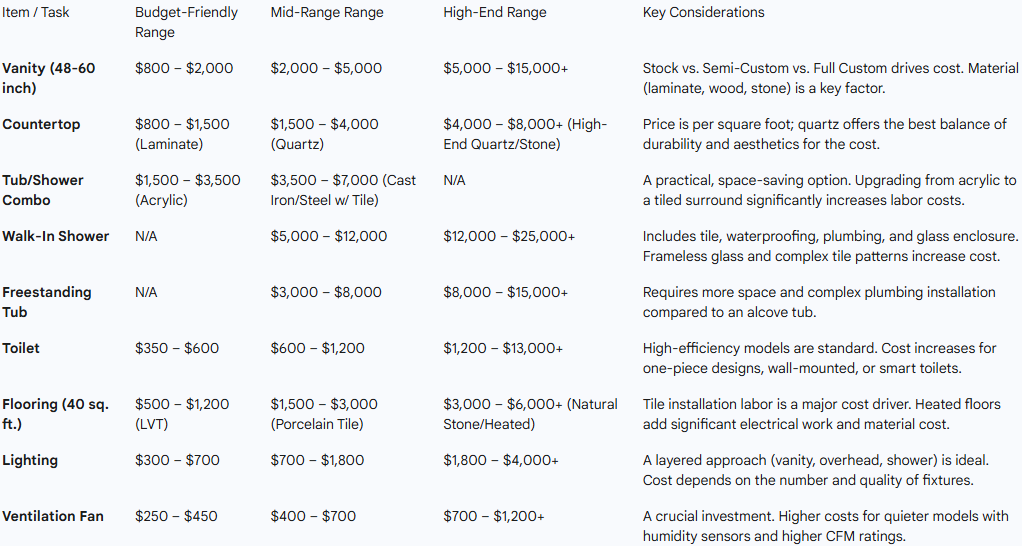
Table 4: Material Showdown - Countertops
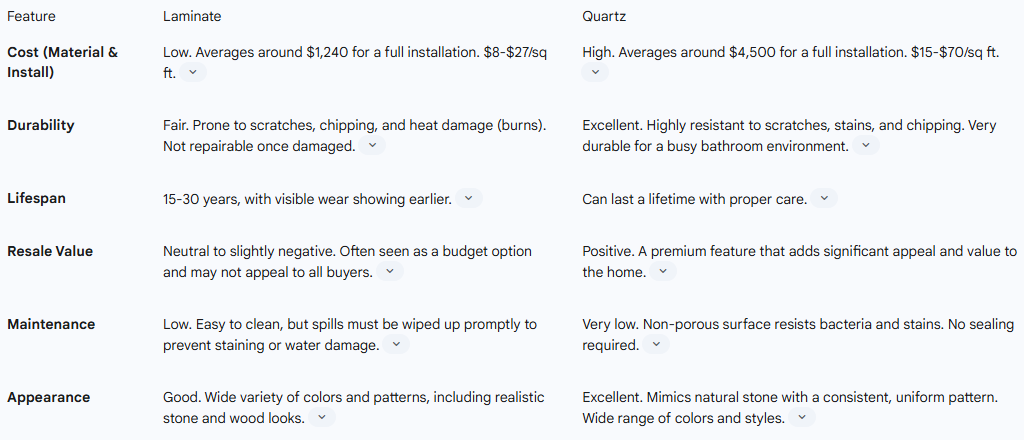
Section 4: Navigating the Nuts and Bolts: Permits and Planning in Connecticut
Beyond design and materials, a successful bathroom remodel requires navigating the administrative and regulatory aspects of construction. In Connecticut, this primarily involves securing the necessary building permits, a process that underscores the value of partnering with an experienced local professional.
Why Permits Matter
Securing a building permit is a non-negotiable step for any bathroom remodel that involves altering plumbing, electrical systems, or structural elements. Permits are not simply a form of municipal bureaucracy; they are a critical safeguard. The permitting process ensures that all work is performed to the standards of the state building code, which protects the health and safety of the home's occupants. It guarantees that a licensed and insured professional performs the work and that it is inspected and approved by a town official. This official documentation is also crucial for a future home sale, as unpermitted work can create significant legal and financial complications for sellers.
The Cost of Permits in CT - It's Local
There is no single, statewide fee structure for building permits in Connecticut. Each of the 169 towns and cities sets its own fee schedule, which is typically calculated based on the total estimated value of the construction project. This localized approach results in significant variability across the state.
Real-World Connecticut Examples
To illustrate this variability, consider the permit fee structures in several Connecticut towns:
- Hartford: For residential projects, the fee is $13.00 per $1,000 of construction value, with a minimum fee of $60.00.
- Stamford: The fee is $20 for the first $1,000 of project cost, and $10 for every additional $1,000.
- Windsor: As of July 1, 2025, the fee is $35 for the first $1,000, and $15 for each additional $1,000 of value.
- State Fee: In addition to the local municipal fee, the State of Connecticut mandates a continuing education fee of $0.26 per $1,000 of project cost, which is added to every building permit issued.
This patchwork of regulations across Connecticut's municipalities represents a hidden risk for homeowners undertaking a remodel. The calculation of "project value" can itself be a point of contention, with some building departments reserving the right to override an applicant's submitted cost estimate if it appears too low. Furthermore, the requirements for separate trade permits for plumbing and electrical work can differ from town to town. A failure to navigate this complex administrative landscape correctly can lead to work stoppages, re-inspection fees, and fines for non-compliance. Ultimately, it could jeopardize the issuance of a final Certificate of Occupancy, creating a major obstacle during a future sale of the property.
The Value of a Professional Partner
This administrative complexity is a significant, though often overlooked, reason to work with a reputable and experienced local contractor. A professional firm like First Choice Bathroom Remodeling does more than just manage the construction; they act as an expert navigator of local bureaucracy. They understand the specific requirements of each town's building department, from the initial application to scheduling the necessary inspections for plumbing, electrical, and final construction. This service saves the homeowner an immense amount of time and stress, but more importantly, it protects their financial investment and legal standing by ensuring the project is fully compliant from start to finish.
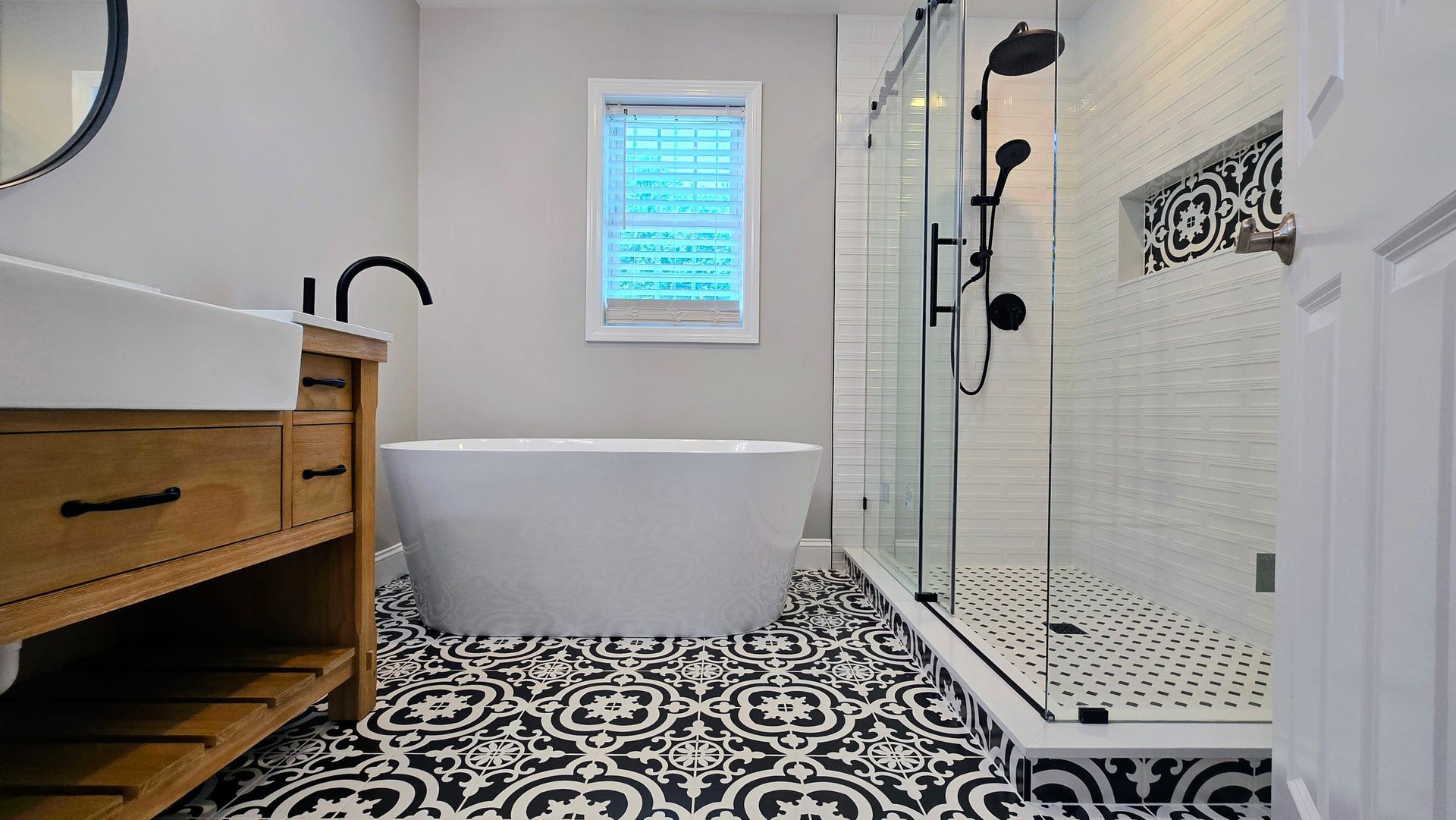
Section 5: Your Bathroom Remodel Toolkit
With a firm grasp of costs, materials, and processes, homeowners are well-equipped to begin their remodeling journey. This final section provides additional resources, answers common questions, and offers a practical tool to help organize the planning process.
Frequently Asked Questions (FAQs)
- Q: How long will my CT bathroom remodel take in 2025? A: The timeline depends heavily on the project's scope. A simple powder room facelift might take 5-7 days. A full gut renovation of a guest or primary bathroom will typically take 15-25 days of active work. However, in the 2025 market, it is crucial to also factor in lead times for materials like custom vanities or tile, which can be several weeks or months. Labor availability can also impact scheduling, so building flexibility into the timeline is essential.
- Q: What is the return on investment (ROI) for a bathroom remodel in Connecticut? A: National data provides a strong baseline for ROI. According to the Remodeling Cost vs. Value Report, a mid-range bathroom remodel recoups approximately 73.7% of its cost in increased home value, while a high-end remodel recoups about 45.1%. In Connecticut's robust and high-value housing market, where home prices have risen dramatically , these returns are often even stronger. An updated, modern bathroom is a major selling point and can significantly enhance a home's marketability and final sale price.
- Q: How do I prepare for my first meeting with a contractor? A: To have the most productive initial consultation, it is helpful to do some homework. First, gather inspiration. Create a collection of images from sources like Pinterest or magazines that capture the style, colors, and features desired. Second, think critically about needs versus wants. Make a list of "must-have" functional improvements and a separate list of "nice-to-have" aesthetic upgrades. Finally, have a realistic budget range in mind. Using the tiers outlined in this guide will help establish a starting point for a financial discussion.
- Q: What are the biggest mistakes to avoid in renovation budgeting? A: Several common pitfalls can derail a remodel budget. The most significant is failing to include a contingency fund of 15-20% for unexpected issues. Another is underestimating the cost of labor, particularly in a high-cost market like Connecticut. Finally, "scope creep"—the process of adding new ideas and upgrades after the project has already begun—can quickly inflate costs and extend timelines. Establishing a clear and detailed scope of work with the contractor before construction starts is the best way to prevent this.
Downloadable Resource: The First Choice Budget & Planning Checklist
To assist in the planning process, a comprehensive budget and planning checklist is an invaluable tool. A well-structured checklist allows homeowners to track every detail of their project in one place. It should include line items for every potential expense category discussed in this guide—from demolition and permits to each fixture and finish. For each line item, columns for "Estimated Cost," "Actual Cost," and "Vendor/Notes" allow for meticulous tracking of expenditures against the budget. This practice helps identify potential overages early and keeps the project on firm financial footing. A downloadable version of such a checklist can serve as a tangible first step in organizing a successful remodel.
Conclusion: Partnering for a Perfect Result in Connecticut
Embarking on a bathroom remodel is a significant undertaking, representing a substantial investment of both time and financial resources. As this guide has detailed, navigating this process in Connecticut requires a nuanced understanding of a market defined by high standards and corresponding costs. The key takeaways are clear: local remodeling costs are considerably higher than national averages; a realistic, detailed budget is the foundation of a successful project; skilled labor is the single largest expense; and strategic choices in layout and materials can yield a high-end result without a high-end price tag.
The complexities of the current market—from volatile material prices and labor shortages in 2025 to the intricate web of local permitting regulations—highlight a crucial truth: the success of a bathroom remodel hinges on the quality and expertise of the professional partner chosen for the job. A great contractor does more than build; they guide, advise, and manage every facet of the project, transforming a potentially stressful process into a seamless and rewarding experience. They provide the craftsmanship that ensures a beautiful result and the project management that protects the homeowner's investment.
Feeling informed and ready to take the next step? The complexity of the task ahead demands a partner with proven local expertise and a commitment to transparency. Contact the experts at First Choice Bathroom Remodeling today for a personalized consultation and a detailed, transparent estimate for your 2025 bathroom project.


